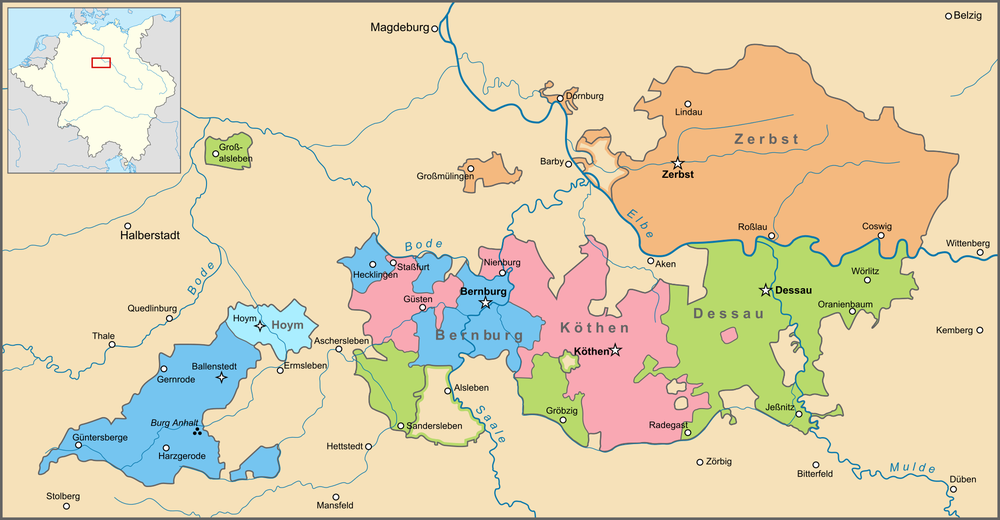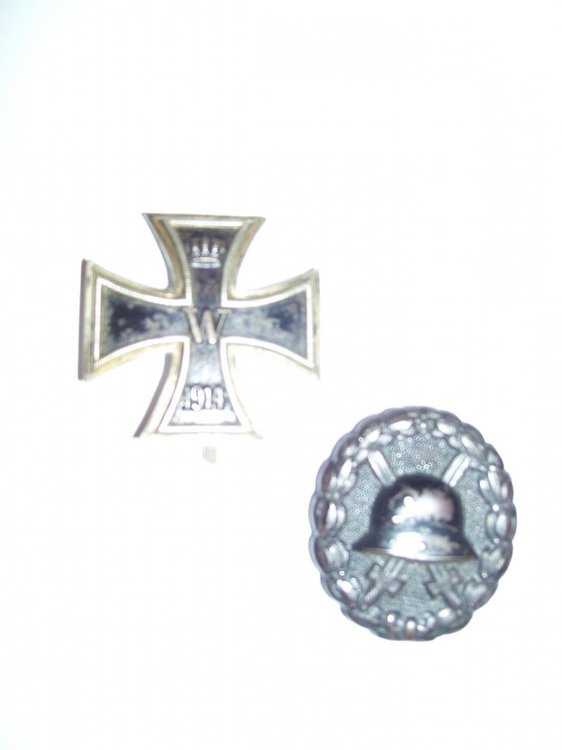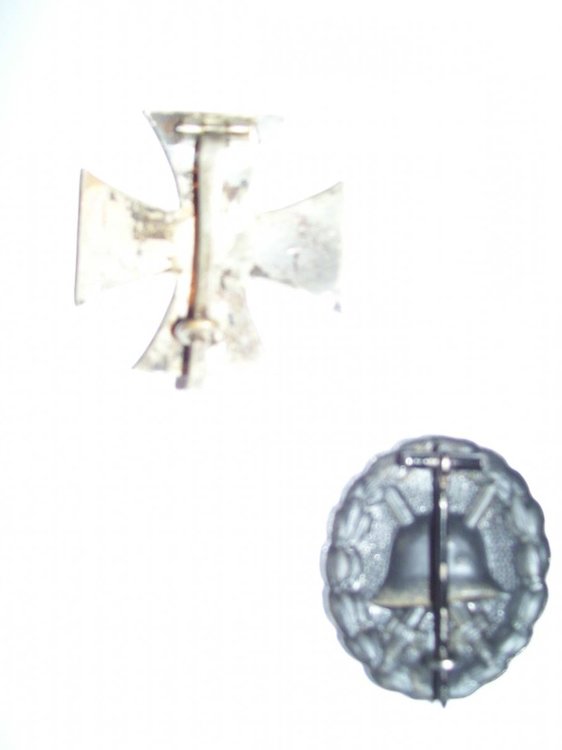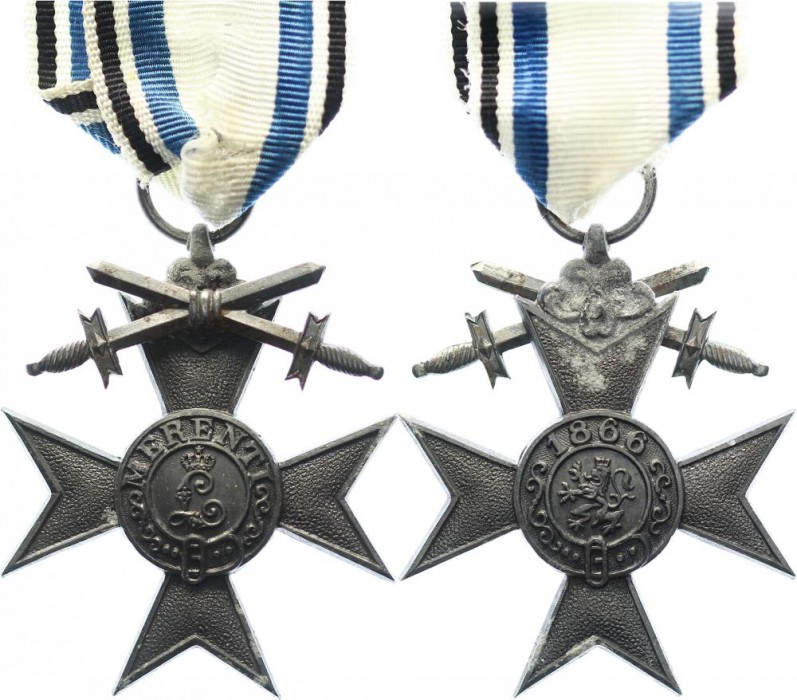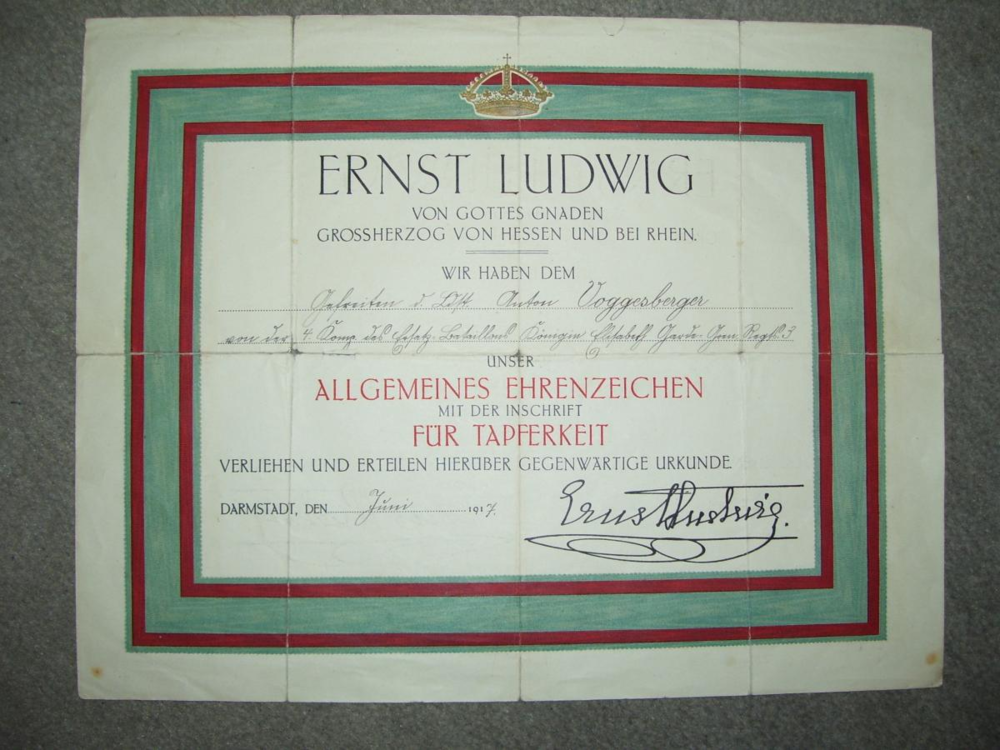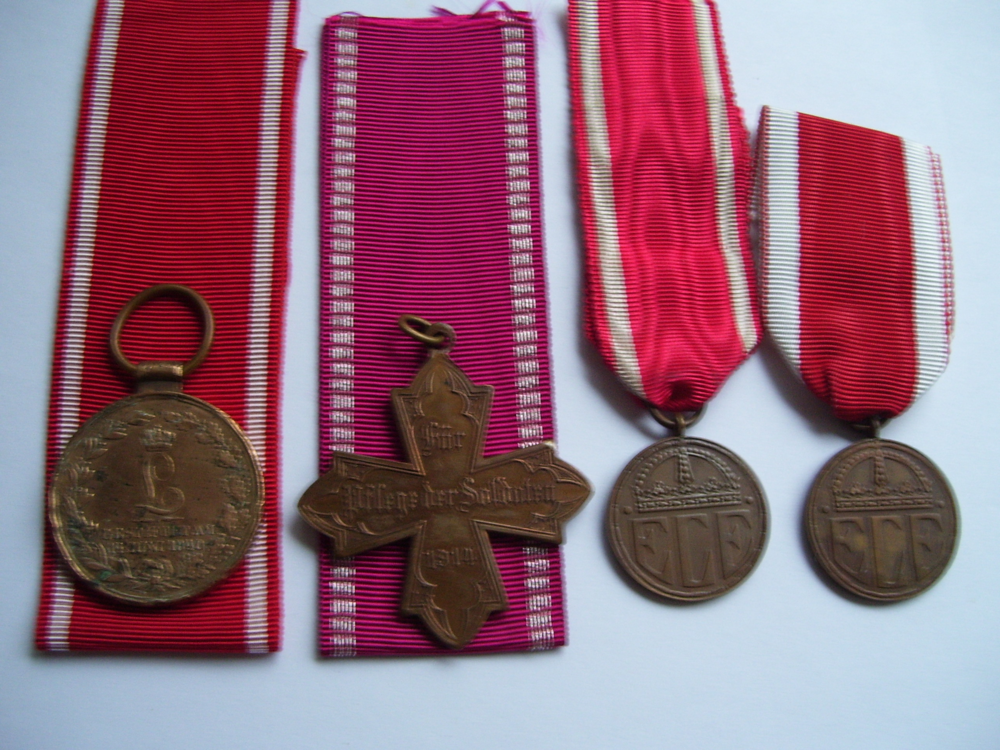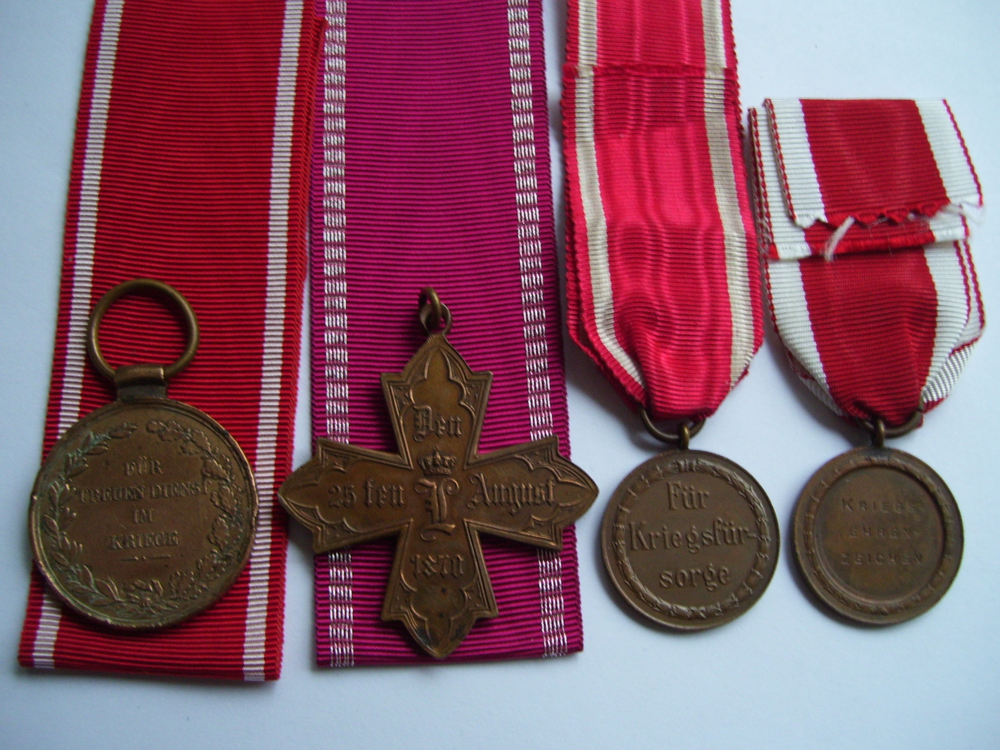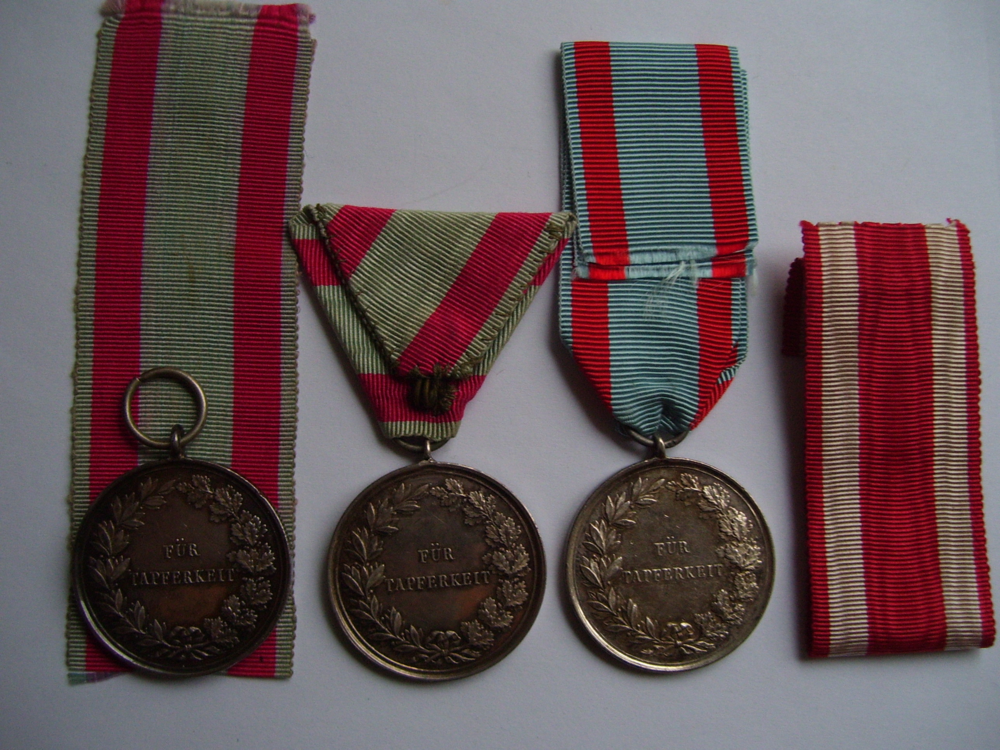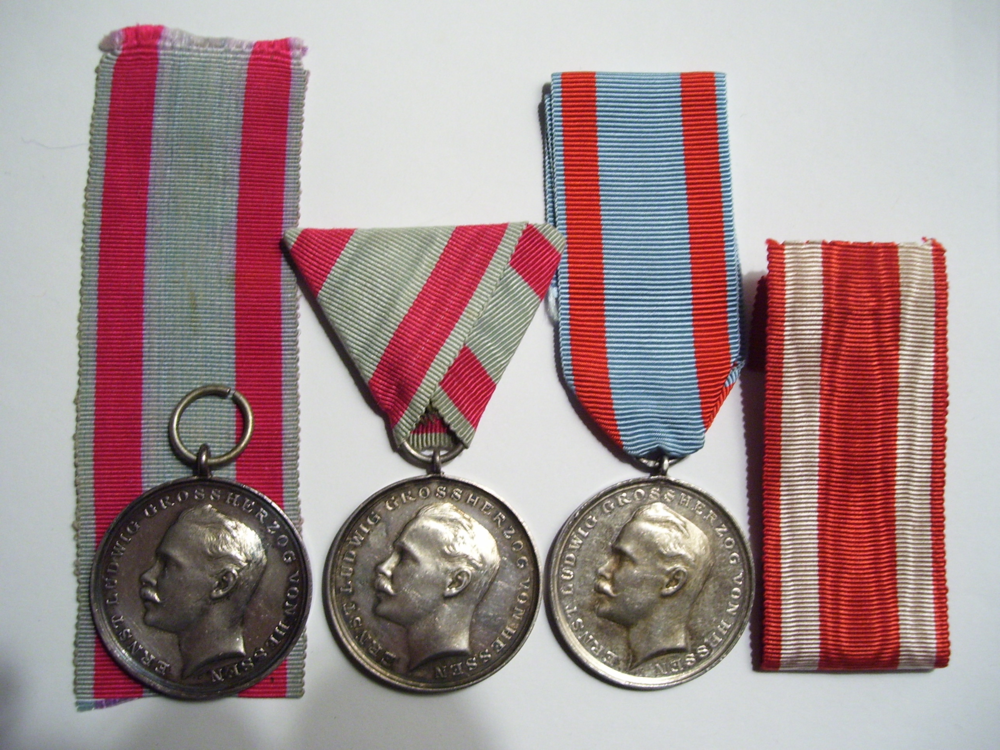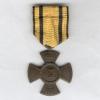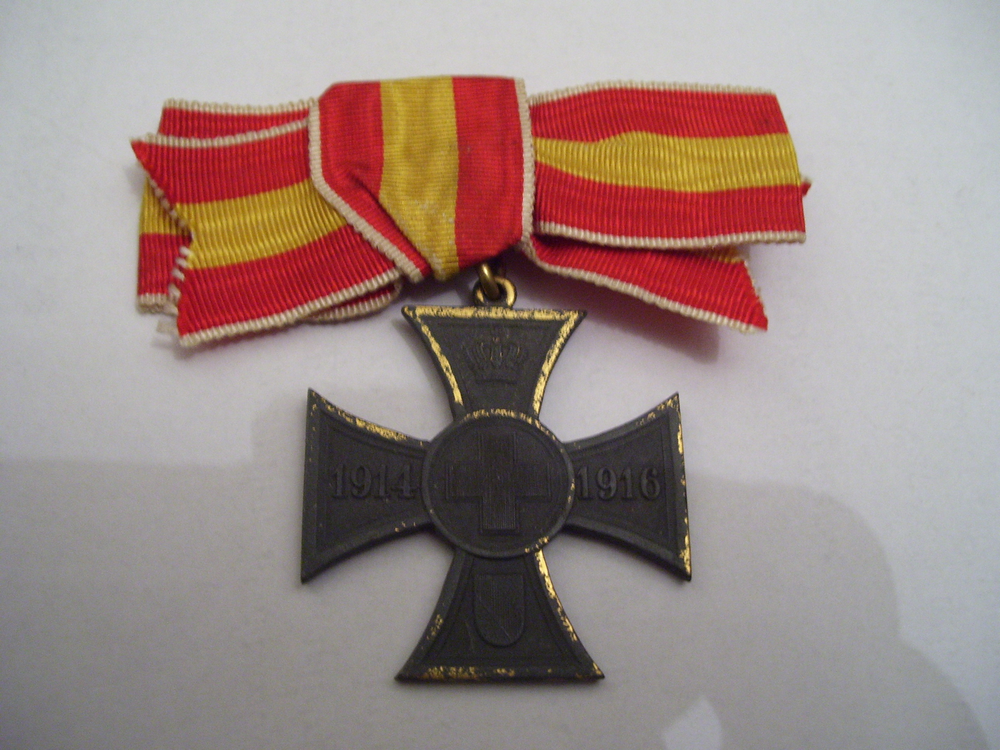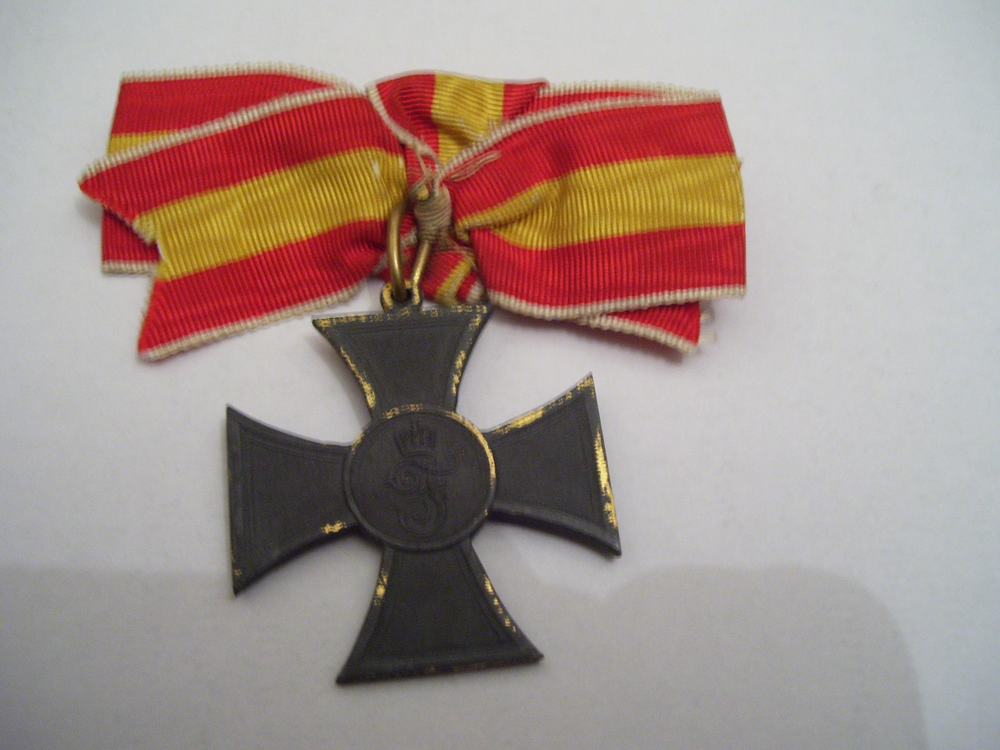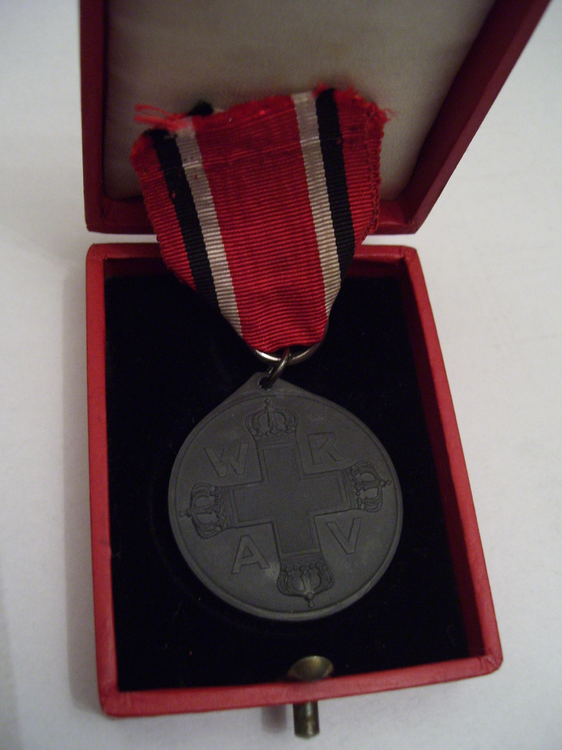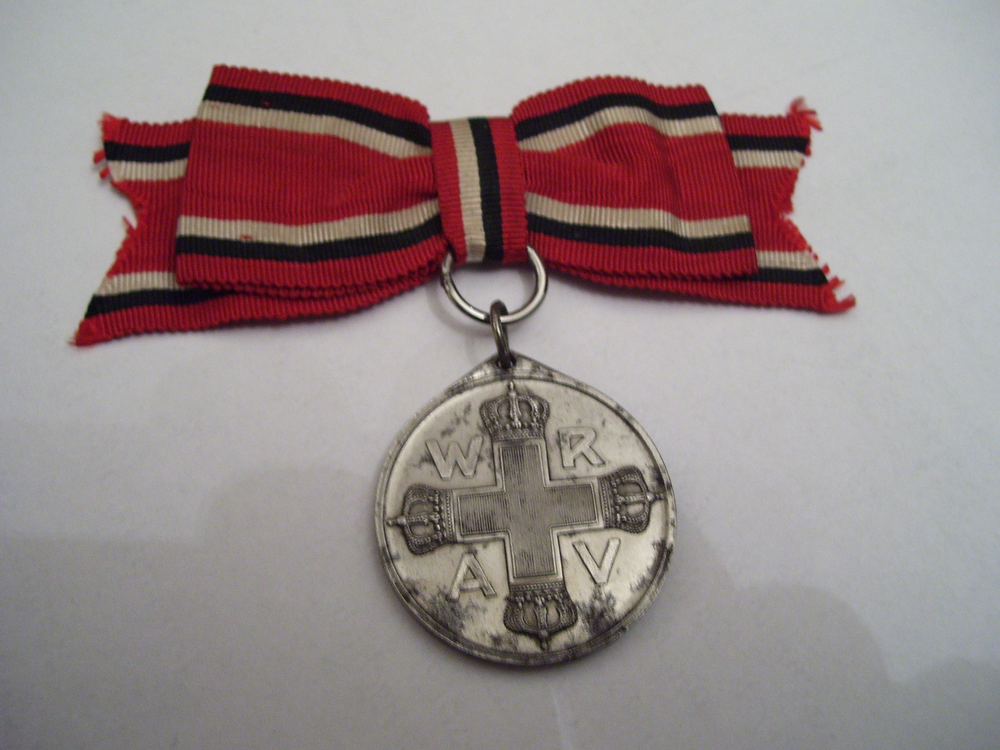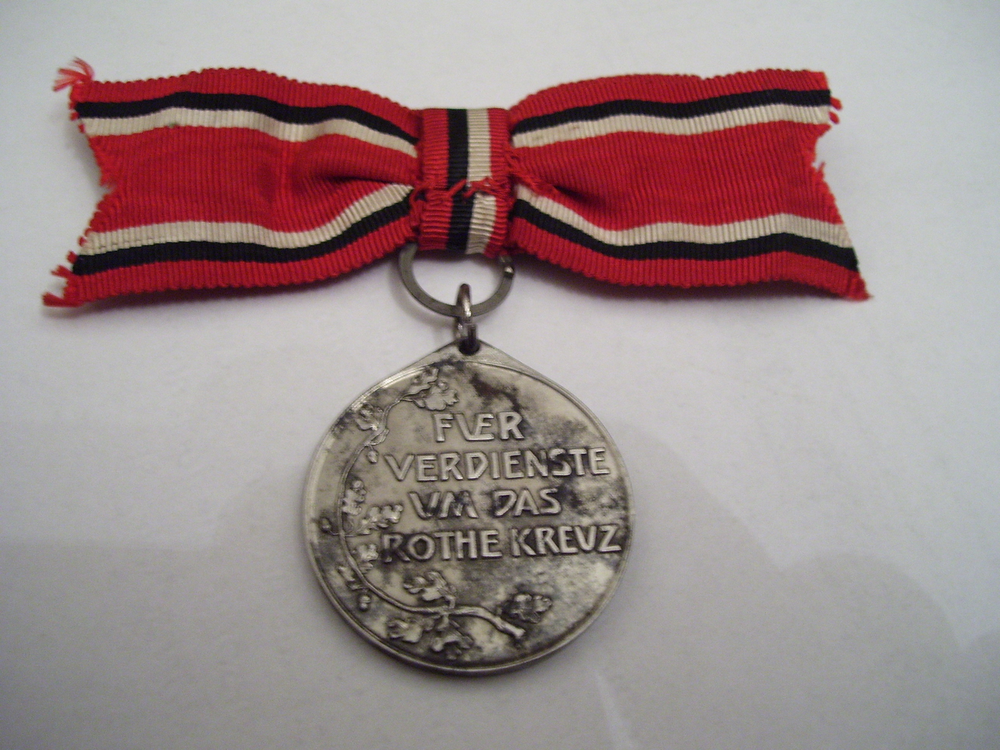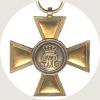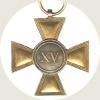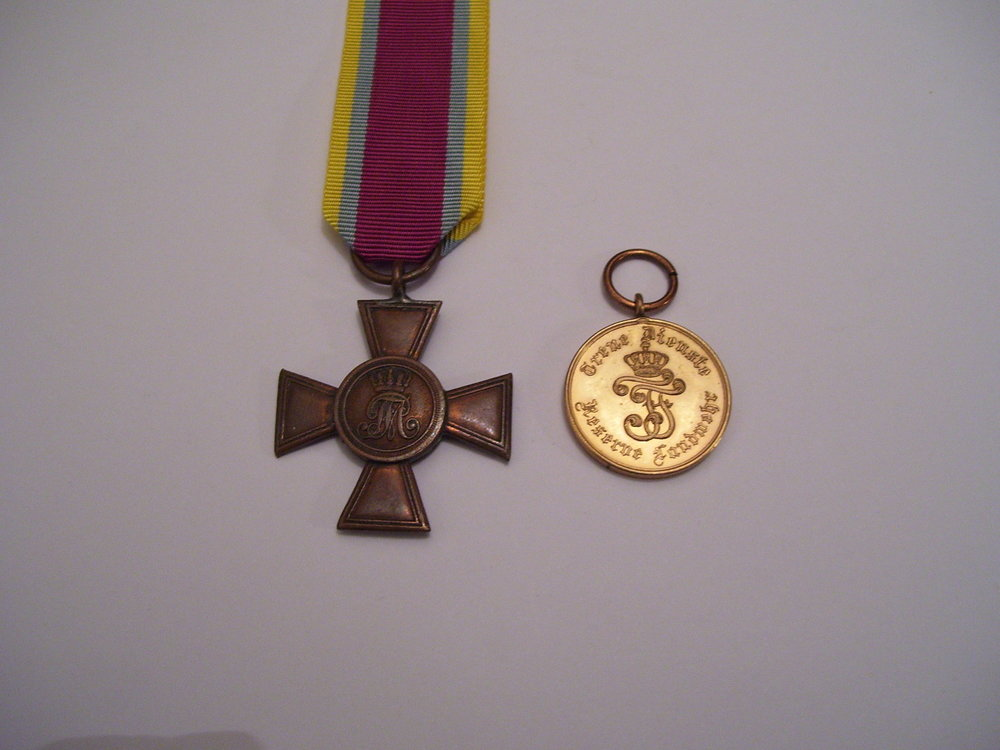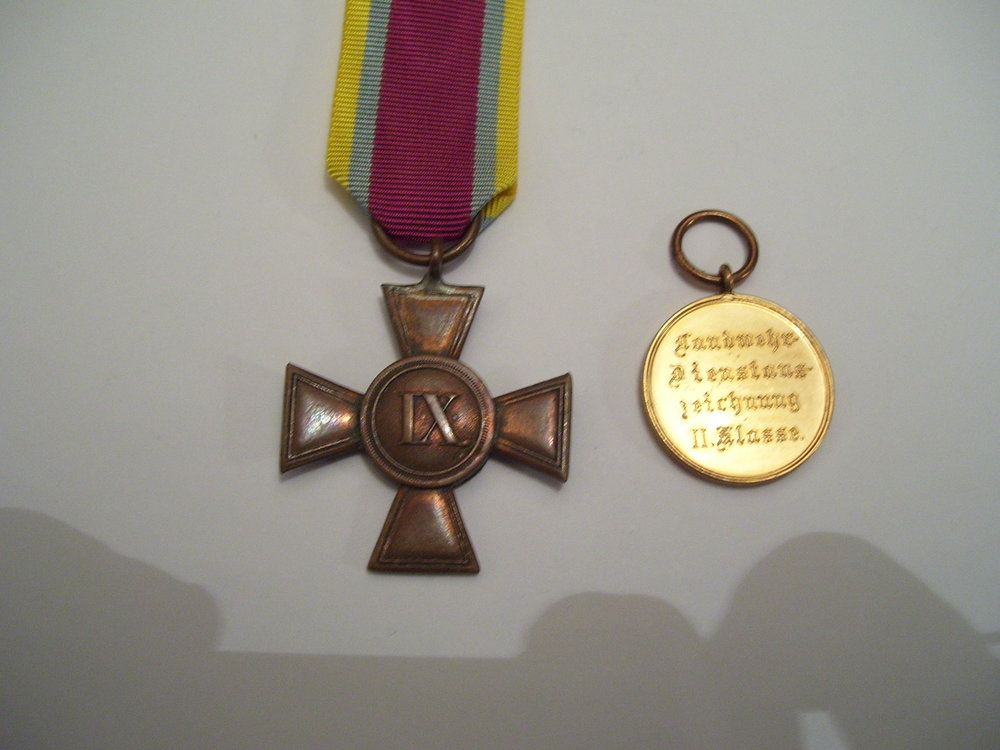Search the Community
Showing results for tags 'decorations of the german states'.
-

Das Goldene Militärverdienstkreuz, 1864-1918
Fritz posted a topic in Imperial German and other Nations Medals and Badges
This was the highest Prussian military award (for other ranks), sometimes known as the "Pour le Mérite for Unteroffiziere and Mannschaften". Awarded only to non-officer grades. Established in February 1864 for military valour and ceased at the end of World War I. The decoration was orginally all gold, but by mid 1916 gold was replaced by silver with a gold finish. Most originals found have a silver appearance with only slight traces of gold. Not to be confused with the Militär Ehrenzeichen I. Klasse, which was identical, but in silver. Recipients received a special pension at the end of their service. From 1914 till 1918 1.770 crosses were awarded. Around 400 recipients died during World War I, 21 of whom were with the Air Service. The last surviving holder of the Militärverdienstkreuz, Offizierstellvertreter Karl Heinzmann, died on 24. April 1990 at the age of 101 years. Many examples on offer recently are post 1918 copies or duplicates. Originals should have a "W" mark on the bottom cross edge. One of the rarest Prussian military decorations. The price nowadays for an original example with case and documents would be around 3.000 Euros upwards, for a gold example much more, as these were only made till beginning of 1916. This example is certainly a post-WW1 duplicate, as worn, probably fired-gilded bronze. Most apparent is the thin ring loop. The original cases were covered in green leather, the base lined with purple velvet, the cartoned edge was gilded, the lid with white silk. Militär-Ehrenzeichen I. Klasse (Silver) Militär-Ehrenzeichen 2. Klasse (Silver) Examples: Internet photos -
Order instituted in December 1841 by Fürst Constantin. The 3rd class in April 1844. Hohenzollern-Sigmaringen is the Schwäbisch-Catholische Linie of the House of Hohenzollern. Hausorden von Hohenzollern Ehrenkreuz III. Klasse, silver and enamels, presumably by Schneider in Wien The original ribbon mounted Austrian style Etui with maker's mark, Schneider, Wien, silk lining with age damage. Etui of wood, brown leather, purple velvet and silk, lid with gold embossed H.E.K. III.Cl.
-

Königreich Preußen, Orders & Decorations
Fritz posted a topic in Imperial German and other Nations Medals and Badges
Königreich Preußen, 1701-1918 Befreiungskriege, 1813-1814 and 1815, campaign medals Bronze from captured French canon, 2nd series cast in Berlin, edge stamped: AUS EROBERTEM GESCHUTZ (first series with round cross ends was cast in Paris) Medal for 1813 on newer replacement ribbon. Medal for 1813-1814 on later 19th century ribbon. Medal for 1814 on original period ribbon. Medal for 1815 (Waterloo, "La Belle Alliance", Quatre Bras, Ligny, etc.) On copy ribbon Early to Mid 19th Century Neufchâtel Medal for the suppression of the rebellion in the Province of Neufchâtel (Neuenburg), 1831. Silver on replacement ribbon "Fidelité au Devoir et à la Patrie, 1831" Commemorative medal from 17. March 1863 for the Napoleonic Wars, awarded to all surviving veterans. Goldbronze on original ribbon 1848-1849 Hohenzollern Medal for the suppression of the Revolution in Berlin 1848 and other regions and the First Schleswig-Holstein War. Version for combattants. On replacement ribbon of pre 1945 manufacture. This was the ribbon of the Royal House Order of Hohenzollern Einigungskriege - Wars for the unification 1864 Second Schleswig-Holstein War Düppeler Sturmkreuz, 18. April 1864, on older replacement ribbon Alsen Kreuz, 29. June 1864, on short original period ribbon Kriegsdenkmünze 1864, on short older ribbon. Cast from captured Danish canon. There was also an Austrian version, identical, but with the monograms in the reverse order. The ribbon is in the Austrian and Prussian colours. The German War of 1866 Erinnerungskreuz für Königgrätz, 3. July 1866 Erinnerungskreuz für die Main-Armee, 1866. For the battles in the southwest regions Erinnerungskreuz "Treuen Kriegern" for those in other theatres of war Erinnerungskreuz "Für Pflichttreue im Kriege" 1866, for non-combattants (a different type of Bronze) All on correct original or older ribbons The War against France, 1870/71 After the last adversary had been overcome, nothing more stood in the way of the German Unification; the King of Prussia was unanimously proclaimed as German Emperor in the Hall of Mirrors in Versailles on 18. January 1871 Eisernes Kreuz 2. Klasse 1870 2 examples First example manufactured around 1890, no maker's mark. Second example, as awarded, here with an old repair to ring loop, and the iron core is broken in three places, silver frame. This example is with the Jubilee oak leaf of 1895, silver, one prong missing. A much worn example. Rare Kriegsdenkmünze 1870/71 für Nicht Combattanten Medal for non-combattants in iron on ribbon for non-combattants, 1870/71 An example as worn: A private purchase example, silver plated and with a narrower ring, for non-combattants, mounted on ribbon for combattants! A non-combattant, who was involved in the battlefield or under fire. The first decoration on the set is missing, this was either the Allgemeines Ehrenzeichen or the Roter Adler Orden, both of which were "rückgabepflichtig" (to be returned after the death of the wearer). Top quality mounted in a style known as "Bogenbänder". Kriegsdenkmünze with 6 bars METZ, PARIS, LOIGNY-POUPRY, ORLÉANS, BEAUGENCY-CRAVANT, LE MANS Kriegsdenkmünze 1870/71 für Combattanten. With Gefechtsspangen AN DER LISAINE and BELFORT (1895) Various loose bars, size and script could vary, bars were always size-matched. Bars were available in 1895 for the 25th anniversary of the war, and could be purchased by those entitled. There were 25 official bars. Further campaign bars All original examples bear the edge inscription: AUS EROBERTEM GESCHUETZ A textbook example of a medal group for the campaigns of 1864 till 1871. (Museum Wandsbek) Hochzeitserinnerungszeichen, 1903. Mounted on ribbon of the Red Eagle Order or the Allgemeines Ehrenzeichen, Silver. Awarded at the Silver Jubilee of to all the guests, who ere present at the wedding of Kaiser Wilhelm II, including 219 soldiers of the 2. Comp., 1.Garde-Regiment. This was mounted on the ribbon of the last decoration awarded to the recipient. Commemorative Kaiser Wilhelm Gedächtnismedaille, 22. March 1897. Bronze from captured French cannon Preußisches Rothes Kreuz Medaille, decorations, introduced 1898 Rothes Kreuz Medaille 2. Klasse. Silvered bronze Rothes Kreuz Medaille 3. Klasse, bronze 2nd class, Variant in iron on a lady's ribbon 2nd class, Variant in zinc 3. Klasse with original case of issue, mid-war Ehrenzeichen der Preußischen Staatsbahn, 1905-1918 40 Jahre. Silver partly gilded. Makers Mark and 800 silver 25 Jahre. Silver. Makers mark and 800 silber Ehrenzeichen für Verdienste um das Feuerlöschwesen. 1908-1916. Gilt bronze with makers mark Ehejubiläumsmedaille zur Goldenen Hochzeit, 1888-1918, nichttragbar. Silver, awarded in a presentation case with official letter of congratulation. Offiziers Dienstauszeichnung 25 Jahre 1st type 1825, old example ca. 1840,3/4 miniature, so-called "Prinzengröße", fire gilded bronze, superb quality last type, 1895 onwards, fire gilded bronze Dienstauszeichnungen, 1825 1. Klasse, 21 years service. Fire gilded bronze. Maker's mark, Sy & Wagner, mounted on correct original ribbon and pin 2. Klasse, 15 years service. Silver. Maker's mark, H.Zehn, Berlin, mounted on correct original ribbon and pin 3. Klasse, 9 years service. Iron/silver. Maker's mark, H.Zehn, Berlin, mounted on correct original ribbon and pin Dienstauszeichnungen 1913-1921 1. Klasse - 15 Jahre 2. Klasse - 12 Jahre 3. Klasse - 9 Jahre Landwehr Dienstauszeichnung 1. Klasse. XX Jahre, 1868 Silver, both medallions gold, mounted, removed from a medal bar Landwehr Dienstauszeichnung 2. Klasse, 1868-1913 Official version Non official version, goldbronze/enamel for wear with a medal group Landwehr-Dienstauszeichnung 2. Klasse. 1913 - ca. 1921 Variant, gilt bronze Variant, bright copper, age tarnish Rettungsmedaille, 1833. Life saving medal, silver Older Version 1833-1864, "KOENIG", removed from a medal bar Newer version, 1875-1907, "KÖNIG"; on original ribbon Allgemeines Ehrenzeichen. Type 1847, older example on shortened original ribbon Allgemeines Ehrenzeichen Kreuz des Allgemeinen Ehrenzeichens am Band der Rettungsmedaille. Silver / Gold. Introduced 1900 Allgemeines Ehrenzeichen 2. Klasse für 60 Dienstjahre. Silver, on replacement ribbon. Introduced 1810, medallion in 1851 Allgemeines Ehrenzeichen 3. Klasse. Bronze. Introduced 1912 Verdienstkreuz Verdienstkreuz in Gold. Gilt bronze with a silver gilt centre Verdienstkreuz in Silber. Silver, mounted for wear Introduced 1912. Both decorations could also be awarded with a crown as a higher class (obv. and rev. ident.) Orden Pour le Mérite. Type 1916, gilt metal and blue enamel on neck ribbon, simple copy, late 1960s Eisernes Kreuz 1914 1. Klasse Silver example marked S.W for Sy & Wagner, Berlin Private purchase example, convex with silver alloy content Eisernes Kreuz 1914, 2. Klasse, am Band für Kämpfer. Silver/iron, 2 examples, no visible maker's mark Eisernes Kreuz 1914, 2. Klasse, am Band für Nichtkämpfer. Silver/iron, set ribbon "white" ribbon for non-combattants, removed from a group Militär Ehrenzeichen 2. Klasse. Introduced 1864. 40 mm, silver on war ribbon. For service 1864, 1866 and later in the colonies, not awarded in WW1. Equal to the Iron Cross 2nd class. The 1st class was a silver cross, which is very rare. Kriegerverdienst Medaille, 1892-1918. Variant Kriegs Verdienst on Austrian trifold ribbon. Silvered bronze, 25 mm. Krieger Verdienst Medaille, 1835, 2nd form from 1873 till 1918. 24 mm, Silver, on original period ribbon. Awarded for bravery, also to colonial troops and foreign nationals Kreuz für Kriegshilfsdienste, 1916. Zinc Commemorative badge for Kaiser-Alexander-Garde-Grenadier-Regiment, 1814-1914 (to be continued) -

Schleswig-Holstein, Herzogtum
Fritz posted a topic in Imperial German and other Nations Medals and Badges
Awarded 1850 by the provisional government to former soldiers of the Schleswig-Holstein Army for the uprising in 1848/49 against Danish rule. It was cast from the iron from the wreck of the Danish warship "Christian VIII.", destroyed in shallow waters off Eckernförde. The uprising failed, although actively supported by Austria, Prussia and the German states. Blackened cast iron with some slight age corrosion with a length of older unworn ribbon. A simple decoration with a historic significance, offered today at around 160-200 Euros. Schleswig-Holstein after 1866 -

Various miscellaneous miniatures
Fritz posted a topic in Imperial German and other Nations Medals and Badges
Various odd miniatures collected over the years. The 2 gilt monograms are post-war commemorative Royal Jubilee badges from Sweden, Gustav V. and Gustav Adolf VI. The eagle to the far left is a copy in bronze, it should be in gilt, as worn on the caps of Kavallerie-Regiment 6 HAPAG Reederei flag (shipping line, Hamburg-Amerika Paketfahrt AG), gilt and enamel Guard star for former soldiers of the Garde, silvered brass, finish worn off Königin Luise Bund, pinback badge and enamelled badge for a neck chain, both 800 silver -

Königreich Sachsen, Orders & Decorations
Fritz posted a topic in Imperial German and other Nations Medals and Badges
Militär St. Heinrich Orden Königlicher Militär St. Heinrichs Orden, Ritterkreuz. Inst., 7. October 1736 by Kurfürst Friedrich August III. The oldest military decoration of the German states. Awarded only to officers. Motto: Virtuti in Bello. Removed from a medal bar. Unmarked, presumably by Scharffenberg, Dresden. Awarded altogether 3.450 times. Slight damage to enamel. Silberne Medaille des Militär St. Heinrich Ordens. Awarded only to NCOs and other ranks, who were not entitled to an "Orden". It was also awarded in Gold. On replacement ribbon. Under neck portrait is signed FU for the medailleur Friedrich Ulbricht. Made by Juwelier Scharffenberg, Dresden. Awarded 1848-1918. 1914-1918 were 8.299 awards in silver. -

Königreich Bayern, Orders and Decorations
Fritz posted a topic in Imperial German and other Nations Medals and Badges
Königreich Bayern, 1806-1918 Militär-Verdienstorden, 4. Klasse mit Schwertern. Silver, Gold and enamels. Slight damage to enamel on one cross arm to reverse. juweller's mark, Weiss & Cie. (Hofjuwelier) and 800 silver mark on swords, on original worn ribbon. MIlitärverdienstkreuz 1. Klasse mit Schwertern Militärverdienstkreuz 2. Klasse mit der Krone und Schwertern, rear of sword with D for Deschler, München Militärverdienstkreuz 3. Klasse, on wide modern replacement ribbon Mit Schwertern und der Krone Mit Schwertern Mit Schwertern, zinc / Kriegsmetall, swords are of iron, as from 1917, scarce Award document for 4th Class with swords, 1917 Set, mounted in the Bavarian style, as worn after 1934 König Ludwig Kreuz für Heimatverdienste, 7.I.1916. Dark toned bronze mounted for wear with Bavarian fold ribbon. -

Großherzogtum Oldenburg, Decorations
Fritz posted a topic in Imperial German and other Nations Medals and Badges
Großherzogtum Oldenburg Medal for the War of 1866. Oldenburg was one of the few states on the side of the Prussians. Inscription: Nicolas Friedrich Peter, Großherzog von Oldenburg, the reverse with 1866 within a laurel wreath, on an original replacement ribbon manufactured before 1945. With a few edge knocks. Kriegsverdienstkreuz or Friedrich August Kreuz, 1st and 2nd class, latter on original narrow ribbon with set bar: VOR DEM FEINDE "in the face of the enemy" 1st class version, pinback, in blackened iron, 2nd class in blackened zinc. Oldenburg, territories in several regions, with exclave in East Holstein and around Lübeck and Birkenfeld -

Lippe-Detmold and Schaumburg-Lippe, Decorations
Fritz posted a topic in Imperial German and other Nations Medals and Badges
Fürstentum Schaumburg-Lippe Decoration for distinguished war service, 2nd class, 1914, finely gilded bronze on shortened original ribbon, plain reverse. Fürstentum Lippe-Detmold Decoration for war service, 2nd class, 1914, bronze with fine guilding on original ribbon -

Fürstentum Nassau, Decorations
Fritz posted a topic in Imperial German and other Nations Medals and Badges
Fürstentum Nassau-Oranien, 1806-1866 Medal for the war of 1866 against Prussia, this was the very last decoration of the state of Nassau, the Duchy was annexed by Prussia after the war of 1866. Light bronze, monogram A for Adolf, Herzog von Nassau, with a modern replacement ribbon. Decoration has now become scarce in recent years. -

Königreich Hannover, Decorations
Fritz posted a topic in Imperial German and other Nations Medals and Badges
Königreich Hannover This was the very last decoration awarded by the Kingdom of Hannover, which was dissolved in 1866 Known as the Langensalza Medaille, was awarded to all, who took part in the battle of that name on 27. June 1866. The battle of Langensalza was a victory for the Hannoverian troops, but the general situation thereafter forced the Hannoverian army under Georg V. v. Hannover to capitulate. The Kingdom was annexed by Prussia and became simply Provinz Hannover of the Prussian state. Georg V., who had always been blind, was obliged to leave for exile. The Hannoverian Army was disbanded. Some of the former Hannoverian troops and officers were later enlisted in the Prussian army, usually with the X. or with the Garde-Korps. Others resigned or emigrated. Recipients of the medal, who later served in the Prussian Army, wore their medal alongside the Prussian decorations. Hannover had been in Personalunion with Great Britain till 1837. The name of the recipient is stamped around the edge of the medal: C.v.Engelbrechten Hannoverian medals were always stamped with the name of the recipient. Medal of brass/bronze on a correct replacement ribbon of pre 1945 manufacture. Georg V. von Hannover in the uniform of the Hannov. Gardes du Corps, portrait by Winterhalter He is also wearing the Order of the Garter. The helmet for officers was virtually the same as for other ranks The Hannoverian GdC uniform was almost identical to the Prussian. -

Herzogtum Braunschweig - Brunswick - Decorations
Fritz posted a topic in Imperial German and other Nations Medals and Badges
Herzogtum Braunschweig-Lüneburg Herzoglich Braunschweigischer Haus Orden Heinrichs des Löwen 1834 Ritterkreuz 2. Klasse. Silver/enamels/Goldmalerei, older example ca. 1870, on original period ribbon No maker's mark. Most examples were by Siebrecht or Jürgens. Kriegsverdienstkreuz 2. Klasse 1914. Oxidised bronze, on shortened length of original ribbon. With Monogram EA for Ernst August, Herzog von Braunschweig. (old spelling: Brunswiek) Somehow, this decoration always reminds me of the Victoria Cross! -
 Großherzogtum Sachsen-Weimar-Eisenach Allgemeines Ehrenzeichen für Kriegsverdienste mit Schwerterspange, 1914 Solid silver medal of the Allgemeines Ehrenzeichen with date 1914 and swords clasp. To the front is the portait in heavy relief of the Grand Duke. Inscription: Wilhelm Ernst Grossherzog von Sachsen. The reverse bears the inscription "DEM VERDIENST" over 1914 with a wreath of oakleaves. Reverse is fitted with a simple pin for wear, mounted on correct ribbon in the colours of the state. Dienstauszeichnung 3. Klasse, 1913-18, silvered bronze alloy medal, the reverse identical to the Prussian Version, the averse with the Monogram WE under crown circumscribed: Treue Dienste bei der Fahne, on correct ribbon.
Großherzogtum Sachsen-Weimar-Eisenach Allgemeines Ehrenzeichen für Kriegsverdienste mit Schwerterspange, 1914 Solid silver medal of the Allgemeines Ehrenzeichen with date 1914 and swords clasp. To the front is the portait in heavy relief of the Grand Duke. Inscription: Wilhelm Ernst Grossherzog von Sachsen. The reverse bears the inscription "DEM VERDIENST" over 1914 with a wreath of oakleaves. Reverse is fitted with a simple pin for wear, mounted on correct ribbon in the colours of the state. Dienstauszeichnung 3. Klasse, 1913-18, silvered bronze alloy medal, the reverse identical to the Prussian Version, the averse with the Monogram WE under crown circumscribed: Treue Dienste bei der Fahne, on correct ribbon. -

Königreich Württemberg, decorations
Fritz posted a topic in Imperial German and other Nations Medals and Badges
Württemberg, Kingdom Kriegsdenkmünze, 1866. Inaugurated by Wilhelm I. in 1840, last awarded for 1866 by König Karl. Bronze, on newer ribbon. Crowned K within a laurel wreath, reverse with crossed swords , within a canopy the inscription Für treuen Dienst in einem Feldzug Silberne Verdienst-Medaille 1892-1918, Silber medal with portrait of Wilhelm II. of Württemberg. The reverse with the inscription Für Tapferkeit und Treue within a laurel wreath, on original ribbon Wilhelmskreuz 1915 Für öffentliche Wohlfahrt - for public welfare. Bronze cross with a crowned W and date 1915, the reverse shows an open wreath without inscription. On a replacement ribbon. There were four variations of this decoration. Charlottenkreuz 1916 instituted January 1916 by Wilhem II. for care of the wounded. Silver celtic type cross within intertwined C and W, the reverse with 1916 within the centre medallion, on correct replacement ribbon. Dienstauszeichnung 2. Klasse 1913-1918 for 12 years long service Dienstauszeichnung 3. Klasse 1913-1918 for 9 years long service Landwehr-Dienstauszeichnung 2. Klasse 1879-1891 (Schnalle) 1st type "K" Landwehr-Dienstauszeichnung 2. Klasse 1892 - 1912 (Schnalle) 2nd type "W" Landwehr-Dienstauszeichnung 2. Klasse 1913-1918 (Medal) 3rd type -

Grossherzogtum Baden, Decorations
Fritz posted a topic in Imperial German and other Nations Medals and Badges
Gedächtnismedaille für 1849 Medal for the year 1849, on short length of original ribbon, in the colours of the House Order, yellow with two edge stripes in silver thread. Awarded to soldiers of foreign armies and to those troops from Baden remaining loyal, who put down the revolt in Baden in the year 1831. Many of the Baden regiments mutinied und held the fortress of Rastatt, foreign troops from Prussia, Bavaria and some other states were called in to quell the mutiny. Following this, nearly all of the Baden regiments, with just a few exceptions were disbanded, and later re-formed. The medal is of gilded bronze, the obverse shows an upright sword within a laurel wreath, the reverse bears the inscription: DEM TAPFEREN BEFREIUNGSHEER, 1849 Felddienstauszeichnung Was awarded for campaigns between 1805 and 1871. Copper bronze, the obverse bearing the Baden griffin with sword and shield over three canon balls, inscription overhead, FÜR BADENS EHRE. The reverse bears the inscription: LEOPOLD over FÜR VERDIENST IM KRIEGE within a laurel wreath. On short original ribbon. The decoration could be worn with campaign bars bearing the dates from between 1805 and 1871. -

Herzogtum Anhalt, Decorations
Fritz posted a topic in Imperial German and other Nations Medals and Badges
Decorations of the state of Anhalt, Herzogtum Anhalt-Dessau (Gesamtstaat) Kriegsverdienstkreuz 2. Klasse 1914, on ribbon for combattants. Darkened bronze cross, the central medallion bearing the Chiffre F for Herzog Friedrich von Anhalt-Dessau, the medallion within a wreath of oak leaves. To the upper arm of the cross is the Crown of the Duke of Anhalt, the lower arm of the cross bears the date 1914. The medallion to the reverse bears the inscription Für Verdienst im Kriege, no wreath to the reverse. On original, slightly faded short ribbon. Medaille für Treue in der Arbeit. Faithfull service decoration for civil services, silver medal bearing the portrait of Friedrich II., Duke of Anhalt. The reverse bears the inscription Für Treue in der Arbeit, within a wreath of oak leaves, on replaced correct ribbon, white, green, red. The small state of Anhalt-Dessau was ruled by the Princes of the Royal House of the Askanier, one of the most ancient reigning houses, mentioned in the 11th Century, and originally, there had originally been several of these states under various lines of the House, Anhalt-Dessau, Anhalt-Bernburg, Anhalt-Köthen and Anhalt-Zerbst, the last surviving line of these houses, Dessau, inherited and maintained the other territories under it's rule. In November 1918 the last Duke of Anhalt was obliged to abdicate along with all the other rulers of the German states. Anhalt maintainted one regiment within the army, this was Anhaltinisches Infanterie-Regiment No. 93, the I. and III. Bataillons of which were stationed in Dessau, the II. in Zerbst. The national colours and flag were green. These are just two examples of some of the most well-known decorations of Anhalt. -
 Schlesisches Bewährungsabzeichen, 1919-1923 (semi official) 2nd class on ribbon for 3 months service in the struggle for Schlesien (Silesia) against Polish supremacy attempts 1st class, pinback for 6 months service. These were awarded on initiative of the Generalkommando VI. Armee-Korps in Oberglogau, but had to be paid for by the recipient at at a price of around 3,50 M. Blackened iron, partly silver finish. These were not officially recognised in the Weimar period, which had no official state decorations. These were then officially recognised in a new law during the office of Reichspräsident Hindenburg in 1934. BaltenKreuz,1919-1923 (semi official) 1st and 2nd class. Awarded on initiative of the Baltischer Ausschuß in 1919, which was the political corporation of the German-Baltic population of Kurland and Livland, to the volunteers of the Freikorps who participated in the fighting against Bolschevik expansion in those regions. The cross was awarded as a pinback decoration, the ribbon could be worn in the buttonhole or the 2nd class decoration as such together with other decorations as a clasp. This decoration was later recognised after 1934. Altogether a total of 21.839 crosses were awarded. Medaille der Deutsche Ehrenlegion (unofficial) Awarded to members of this association, who had to pay for this decoration., and who had served in the 1914-18 war. This example mounted for wear as a single and with a clasp of a sword within an oak wreath. Copper bronze finish on correct ribbon. Kyffhäuser Denkmünze 1914-18 (unofficial) Awarded after June 1921 by the Kyffhäuserbund to members who had served 1914-18. Oval medal with a gilt brass finish. The reverse bears the inscription: Aufrecht und stolz gehen wir aus dem Kampfe, den wir über vier Jahre gegen eine Welt von Feinden bestanden (Hindenburg). The averse inscription is Blank die Wehr, rein die Ehr' 1914-1918. Various campaign bars could also be added to the ribbon. Erinnerungskreuze Kameradschaftsbund Deutscher Ost- und Westfrontkämper, from 1921 (unofficial) For Verdun For the Champagne For the Somme For the Eastern Fronts These had to be paid by the recipient. Manufactured by Fahnen-Fleck in Hamburg. Bronze with a silvered or gilt finish and enamels. All on correct period ribbons.
Schlesisches Bewährungsabzeichen, 1919-1923 (semi official) 2nd class on ribbon for 3 months service in the struggle for Schlesien (Silesia) against Polish supremacy attempts 1st class, pinback for 6 months service. These were awarded on initiative of the Generalkommando VI. Armee-Korps in Oberglogau, but had to be paid for by the recipient at at a price of around 3,50 M. Blackened iron, partly silver finish. These were not officially recognised in the Weimar period, which had no official state decorations. These were then officially recognised in a new law during the office of Reichspräsident Hindenburg in 1934. BaltenKreuz,1919-1923 (semi official) 1st and 2nd class. Awarded on initiative of the Baltischer Ausschuß in 1919, which was the political corporation of the German-Baltic population of Kurland and Livland, to the volunteers of the Freikorps who participated in the fighting against Bolschevik expansion in those regions. The cross was awarded as a pinback decoration, the ribbon could be worn in the buttonhole or the 2nd class decoration as such together with other decorations as a clasp. This decoration was later recognised after 1934. Altogether a total of 21.839 crosses were awarded. Medaille der Deutsche Ehrenlegion (unofficial) Awarded to members of this association, who had to pay for this decoration., and who had served in the 1914-18 war. This example mounted for wear as a single and with a clasp of a sword within an oak wreath. Copper bronze finish on correct ribbon. Kyffhäuser Denkmünze 1914-18 (unofficial) Awarded after June 1921 by the Kyffhäuserbund to members who had served 1914-18. Oval medal with a gilt brass finish. The reverse bears the inscription: Aufrecht und stolz gehen wir aus dem Kampfe, den wir über vier Jahre gegen eine Welt von Feinden bestanden (Hindenburg). The averse inscription is Blank die Wehr, rein die Ehr' 1914-1918. Various campaign bars could also be added to the ribbon. Erinnerungskreuze Kameradschaftsbund Deutscher Ost- und Westfrontkämper, from 1921 (unofficial) For Verdun For the Champagne For the Somme For the Eastern Fronts These had to be paid by the recipient. Manufactured by Fahnen-Fleck in Hamburg. Bronze with a silvered or gilt finish and enamels. All on correct period ribbons. -
 A Prussian Iron Cross 1st class that I got many years ago in London in early 1968. Paid about 2 pounds for it then. It is a convex example with a wide straight pin on a wide hinge, the reverse had orignally a highly polished, plated finish. Alloy with a high silver content and with a magnetic iron core. The cross shows a lot of wear and the frame has opened slightly in some places. This was probably a private purchase example, differing slightly from standard awarded examples. No makers marks. A black wound badge, official issue, original black finish over magnetic iron, with a narrow iron pin. Has also had a lot of wear. No makers marks. Discovered many years ago in a second hand shop near Hamburg, cost about 10 DM in those days. Picture quality not so good.
A Prussian Iron Cross 1st class that I got many years ago in London in early 1968. Paid about 2 pounds for it then. It is a convex example with a wide straight pin on a wide hinge, the reverse had orignally a highly polished, plated finish. Alloy with a high silver content and with a magnetic iron core. The cross shows a lot of wear and the frame has opened slightly in some places. This was probably a private purchase example, differing slightly from standard awarded examples. No makers marks. A black wound badge, official issue, original black finish over magnetic iron, with a narrow iron pin. Has also had a lot of wear. No makers marks. Discovered many years ago in a second hand shop near Hamburg, cost about 10 DM in those days. Picture quality not so good. -

Bavaria - Militär-Verdienst-Kreuz 3rd Class
Fritz posted a topic in Imperial German and other Nations Medals and Badges
Bavaria: Militär-Verdienst-Kreuz 3. Klasse with Swords, Zinc, as from 1917/18. Established originally in 1866 by King Ludwig II. for the Austro Prussian War, the decoration was divided into several classes with and without swords, and also into a Militär-Verdienst-Orden, which was awarded to officers only This example is a late war production in Zinc with Iron Swords, and shortened original ribbon, as introduced around mid 1917, due to metal shortages, and also more befitting to wartime fieldgrey tones. Zinc is showing some slight oxidation in places, which should be removed to prevent progressive decay. Rare to find in zinc nowadays. -

Grossherzogtum Hessen-Darmstadt, Decorations
Fritz posted a topic in Imperial German and other Nations Medals and Badges
Felddienstauszeichnung (Campaign Medal), 1840-1866, made of cannon bronze. The obverse bears the crowned L Monogram of Ludwig III. of Hessen-Darmstadt within a wreath of laurel to the left and oakleaves to the right and over the inscription: GESTIFTET AM 14. IUNI 1840 (obsolete style of Latin inscription), the date of its inauguration. Reverse with inscription "Für Treuen Dienst im Kriege" within a wreath of oak leaves. Awarded for service in one of the campaigns, either 1848/49, 1864 or 1866 for the last time. Allgemeines Ehrenzeichen für Tapferkeit, (General Service Medal for Valour) Silver, 1893-1918. Bust of Ernst Ludwig II., Großherzog von Hessen. Reverse has the inscription "Für Tapferkeit" within a wreath of laurel and oak leaves. There were several variations of this medal with differing inscriptions, this being the most frequently found. Militär-Sanitäts-Kreuz, 1914 Copper bronze. First awarded in 1870, the inscription, Für Pflege der Soldaten 1914, for care of the soldiers, reverse bears the date "Den 25 ten August 1870" (no longer written in this style) and the crowned monogram of Ludwig III. The style of the cross could be described as "Victorian Gothic". It was awarded to civil and military medical personnel for the care of the wounded and sick. Ehrenzeichen für Kriegsfürsorge 1916-18, for assisting war aid Kriegsehrenzeichen 1916-18 (for distinguished service in war) Could be awarded to both military and civil personnel on the home front. small copper bronze disc, obverse with the crowned monogram of Ernst Ludwig II of Hessen-Darmstadt. The reverse has a narrow laurel wreath around the inscription "Kriegs Ehren-Zeichen" Not to be confused with the "Ehrenzeichen für Kriegsfürsorge", which was identical, apart from the inscription. All shown on modern replacement ribbons, apart from the trifold Austrian style ribbon, which is an old original. The Sanitätskreuz had a ribbon woven in silver metallic thread, which has been very well copied. Original decorations from the small state of Hessen-Darmstadt are quite rare and usually turn up without a ribbon. The most commonly found decoration is probably the silver General Service Decoration, which is still reasonably priced. The Hessen-Darmstadt contingent was a part of the XVIII Armee Korps (Frankfurt/M.). In peacetime it held 5 infantry regiments, 2 Dragoon regiments and 2 artillery regiments. Felddienstauszeichnung (1840), bronze, as awarded 1866, modern replacement ribbon Militär-Sanitätskreuz 1914, bronze, modern replacement ribbon Ehrenzeichen für Kriegsfürsorge, bronze, original ribbon Kriegsehrenzeichen, bronze, replacement ribbon Allgemeines Ehrenzeichen für Tapferkeit, silver, 3 examples, first two on original ribbons Hessen-Darmstadt, ribbon for an unspecified decoration Award document for the silver medal to Gefreiter d. Landsturms Anton Voggesberger of 4. Komp., Ersatz Bataillon, - Königin-Elisabeth-Garde-Grenadier-Regiment Nr. 3. Voggenberger was probably a Hessian serving with a non-Hessian regiment. Dated June 1917 -

Württemberg, Wilhelmskreuz, 1915
Fritz posted a topic in Imperial German and other Nations Medals and Badges
Kingdom of Württemberg, Wilhelmskreuz, 1915 Bronze, later of blackened zinc (Kriegsmetall). The W monogram is for König Wilhelm II. of Württemberg, ruled 1892-1918. There were four types First type as depicted, had a plain reverse with an empty wreath, was issued for services to public welfare another version has the words, KRIEGS VERDIENST in two lines within the wreath, awarded for services, civil and military the next version as above and with crossed swords between the arms of the cross the final version was a pinback cross with crossed swords with a cutout crown mounted above the cross Last two versions described were for active war service in the face of the enemy, the pinback with crown for officers only. These decorations are now quite rare, the last version was only awarded about 900 times. -

Baden, Kreuz für Kriegsfürsorge, 1914-1916
Fritz posted a topic in Imperial German and other Nations Medals and Badges
Grand Duchy of Baden Cross for War Welfare Service. This decoration was first awarded in 1870 for war service for civilians and military, mainly in welfare and with the Badisches Rotes Kreuz. Reintroduced in 1916. The decoration was at first made in gilded bronze, but shortly afterwards in zinc with a fine gilt finish, later in zinc with no gilded finish. It was awarded in two versions, the version shown, and a further version with oak wreath between the arms of the cross - Kreuz für Kriegsfürsorge mit Eichenkranz. The cross bears in the central medallion a cross as with the Red Cross symbol, to the left and right, 1914 and 1916 respectively. The bottom section of the cross has the heraldic shield of Baden, to the top arm is the crown of Baden. The reverse medallion bears the crowned F cypher for Grand Duke Friedrich II. of Baden. Example shown is in zinc, the gilt finish has migrated over the years, as often with zinc decorations. A further example on an original ladies ribbon, some of the gilding has remained to the edges of the cross. -
The wound badge was instituted in March 1918 for wounds sustained. The Gold award for 5-6 wounds, Silver for 3-4 and Black for 1-2 wounds. Due to wartime shortages, these were of stamped zink or iron, with a hollow back, and usually a rounded iron pin. There are also the "cutout" variations, often worn by officers. After the war, issues continued till around 1936. Later examples were sometimes made in better quality metal. Some examples of the wound badge in sterling or silver alloy are known. Examples of the standard isssue of March 1918, Gold and Black are in pressed iron, the silver example is of zink, and a real silver example on a screwback fitting, this being probably the mid 1920s.
-

Prussian Red Cross Medal
Fritz posted a topic in Imperial German and other Nations Medals and Badges
The Prussian Red Cross decoration was awarded in 3 classes and instituted by Kaiser Wilhelm II. on 1. October 1898. The first class was a partly enamelled pinback cross, the second was in silver with enamel and the third was in bronze without enamels. The decoration is also known to be awarded with bars for earlier campaigns. Bars were not awarded after 1914. Photos depict three variations of the Third Class medal, an early gilded bronze example, a zinc example as from 1916 and a steel example on a lady's bow. The suspension rings on the iron and zinc examples are of spring steel, like an S-Ring, which was more durable for wear. The medal reverse bears the inscription: FVER VERDIENSTE VM DAS ROTHE KREVZ (Note old style of spelling with "th", the word "um", written in capitals is here "VM") The averse bears a cross with the Prussian Crown at each end and WR - AV - standing for Kaiser Wilhelm and Auguste Viktoria. The zinc example on a short piece of ribbon is here with the original plain red presentation case, of very good quality with a velvet and silk lining, the outside of non-leather compressed paper, with a leather-like finish. The third picture shows an example of the 2nd Class decoration, which is in silvered white metal, the cross in red enamel. The medals could also be awarded on the ribbon for assisting war service - Kriegshilfsdienst, shown here -

Mecklenburg-Schwerin, Dienstauszeichnung IX Jahre
Fritz posted a topic in Imperial German and other Nations Medals and Badges
An old example of a Mecklenburg-Schwerin Dienstauszeichnung for 9 years long service, in this form, awarded 1868-1913. This cross is in copper bronze, and was originally coated with a clear finish, making the metal bright. As from 1913, these were fire-gilded. The averse shows the crowned monogram of Friedrich Franz, Großherzog von Mecklenburg . FFGvM, the reverse has the latin IX for nine years long service. Decoration on correct, replaced ribbon. Landwehr-Dienstauszeichnung 2. Klasse, 1913-18. Ribbon missing.


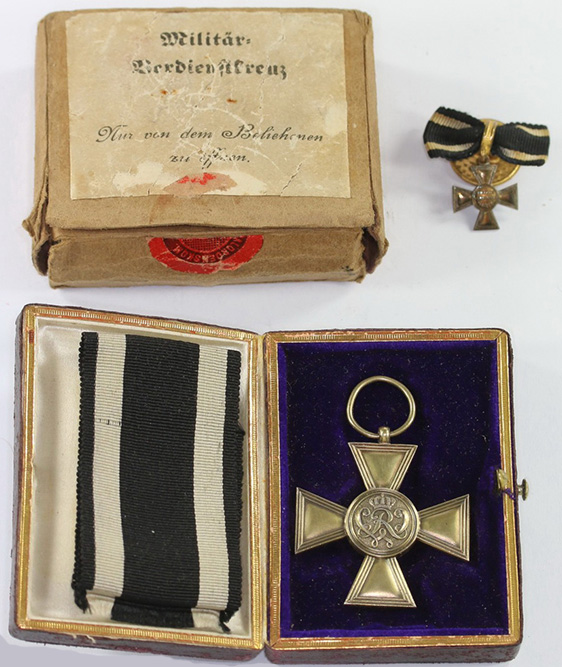
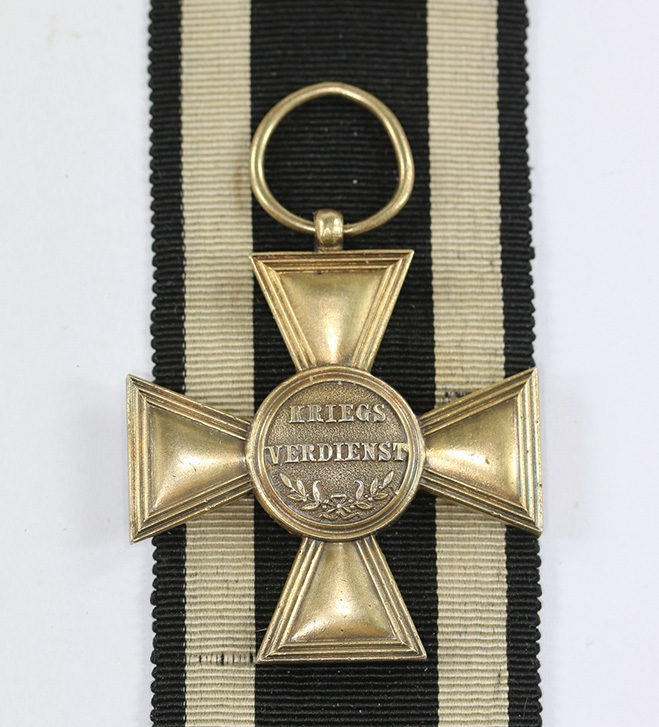


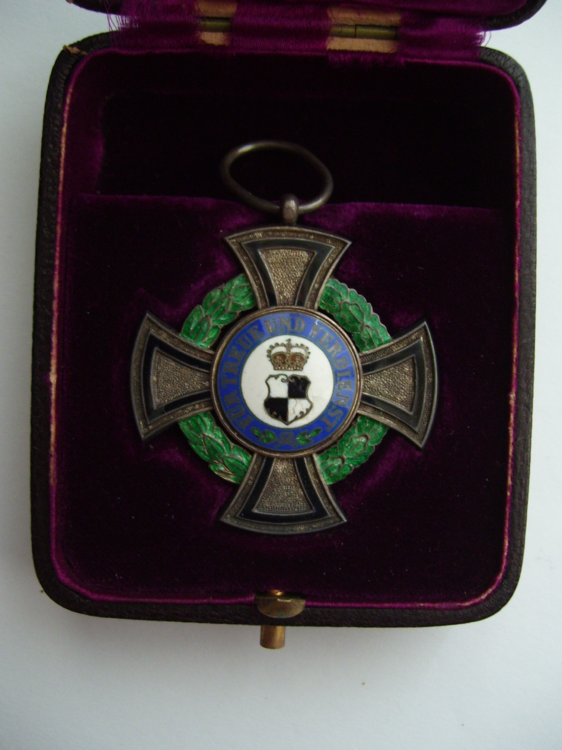
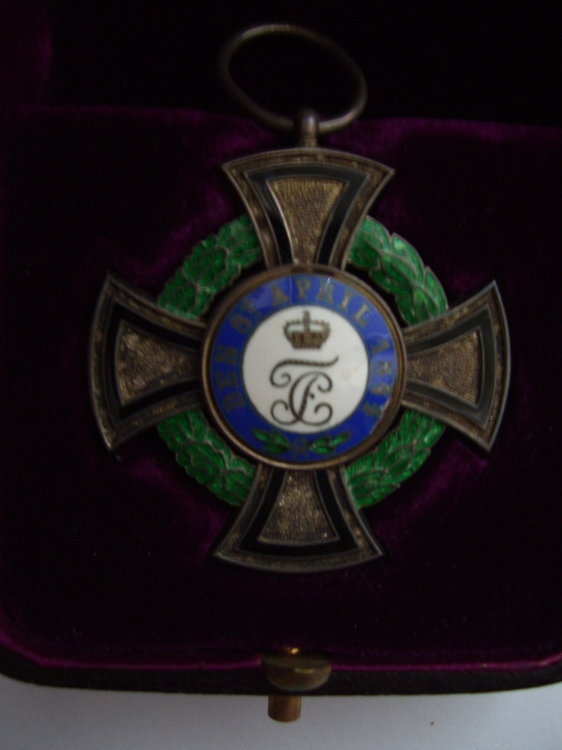
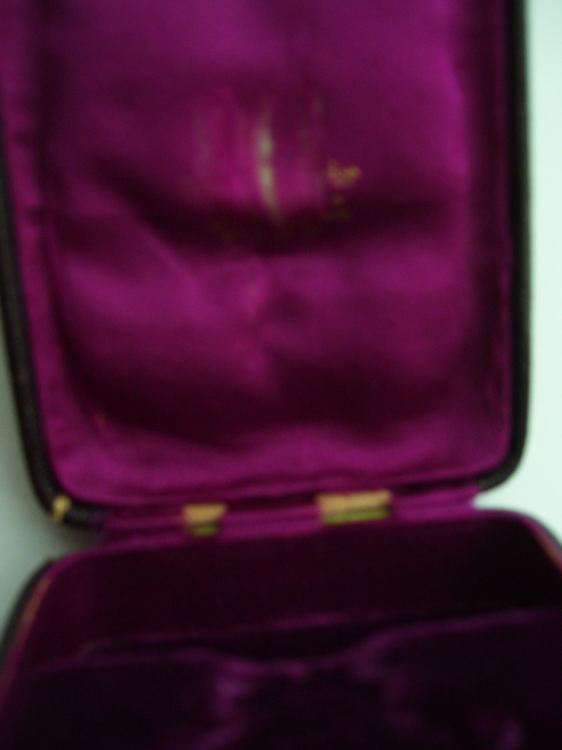
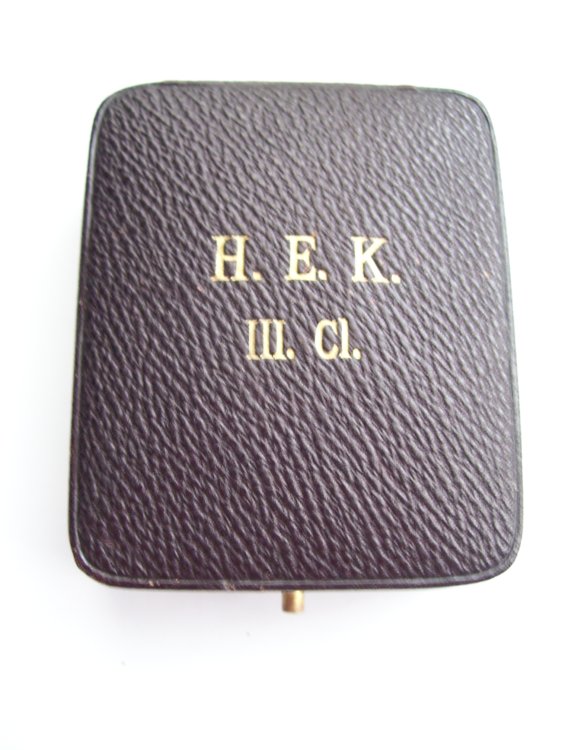

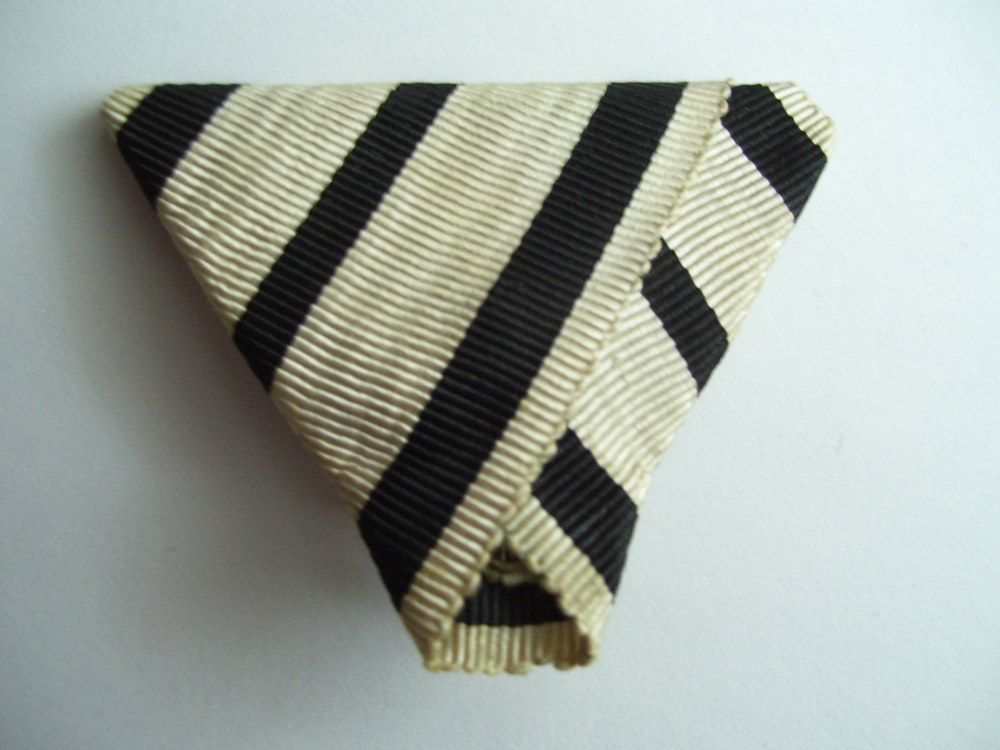
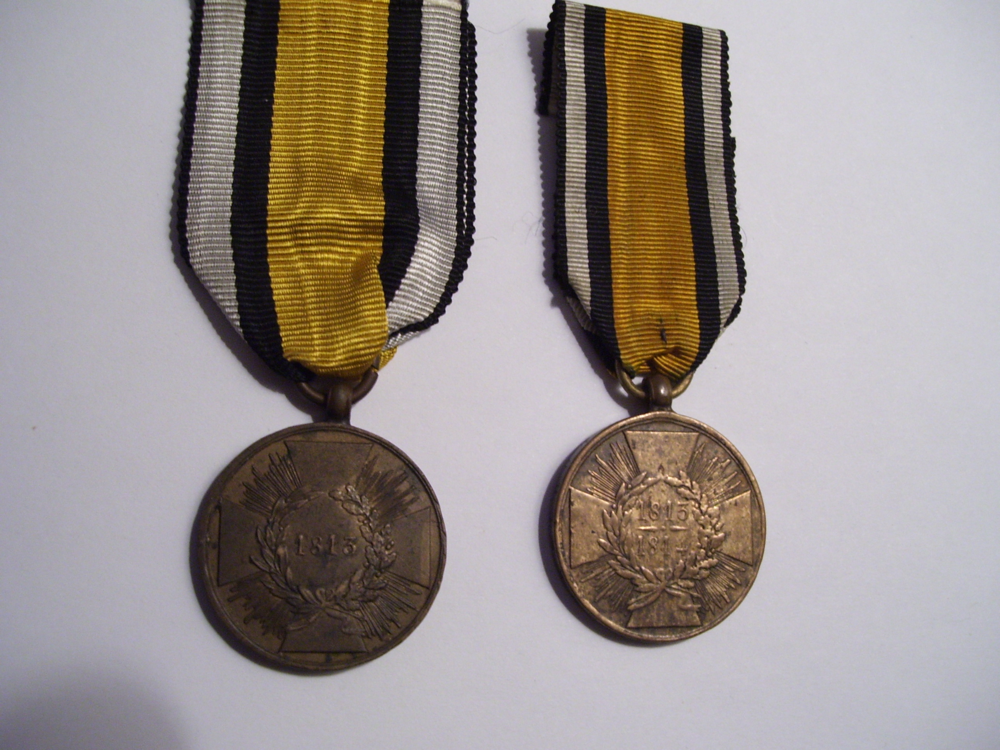
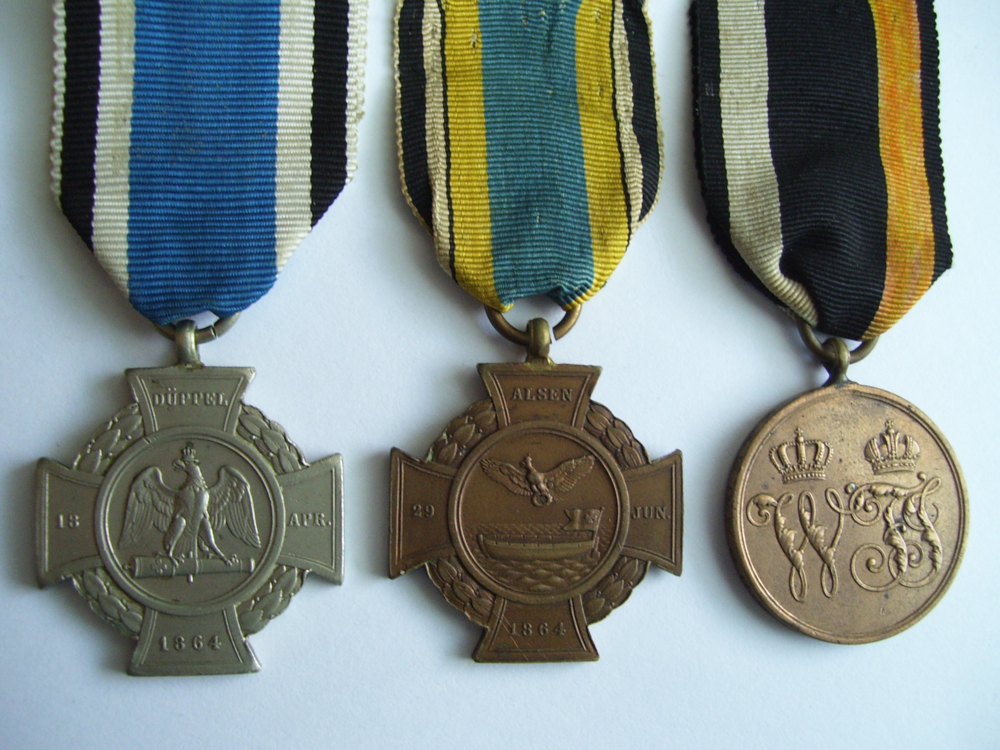
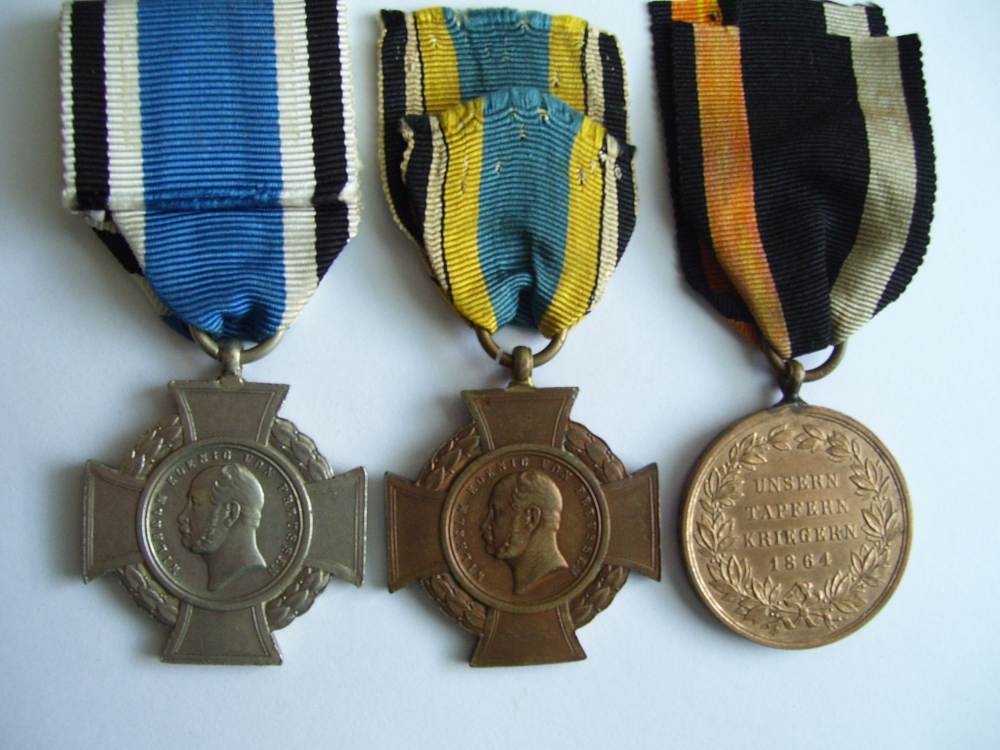
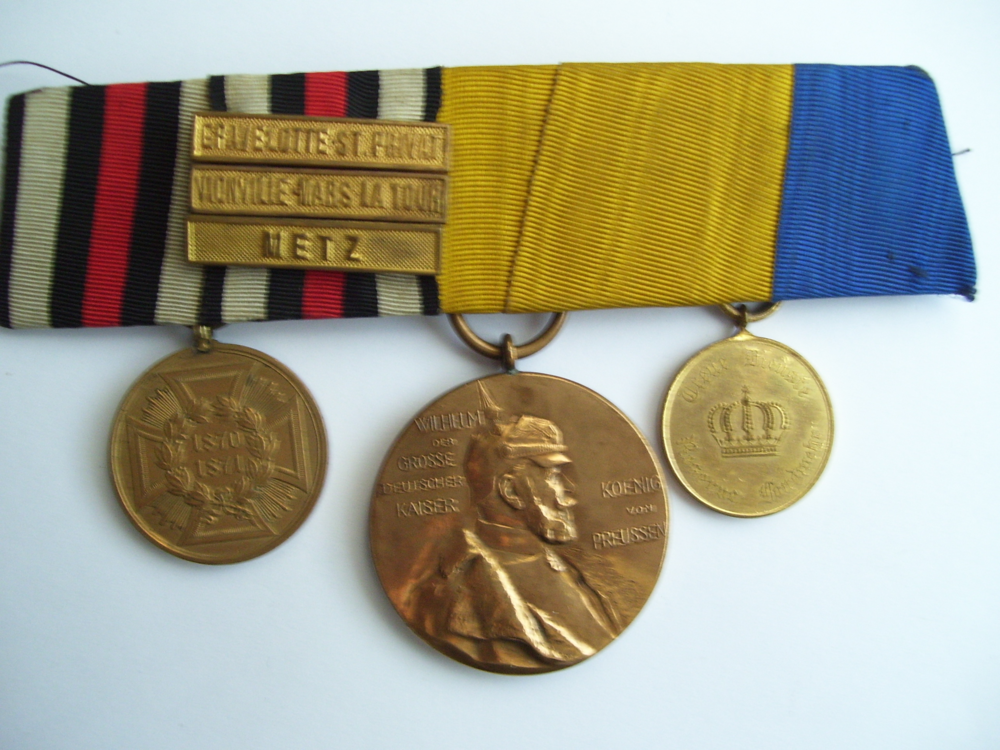
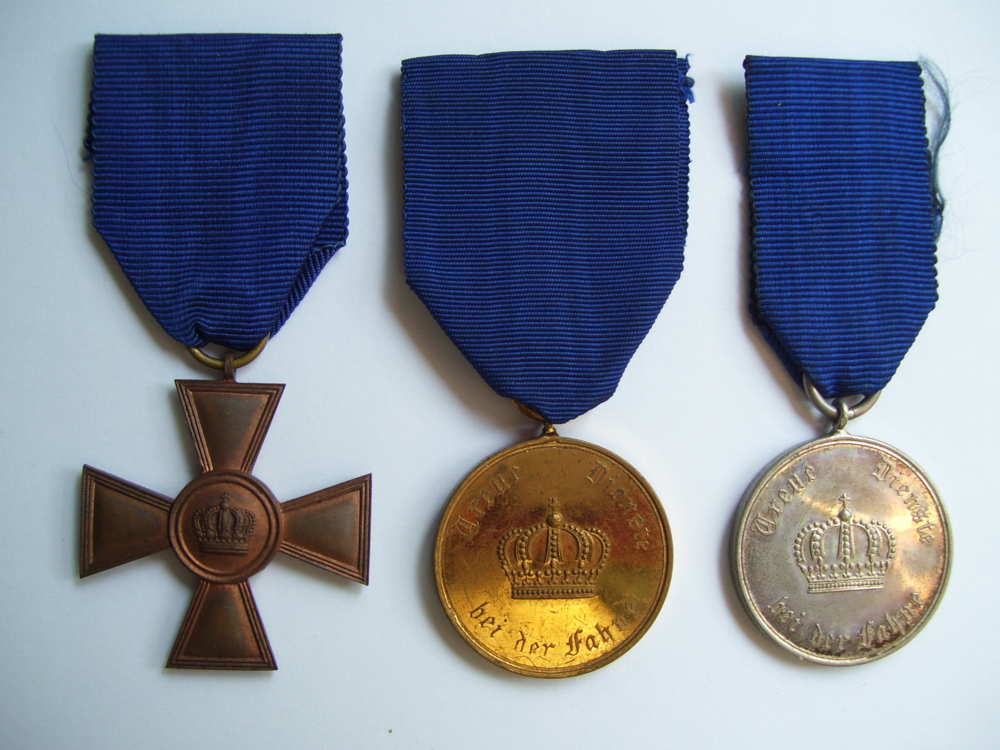
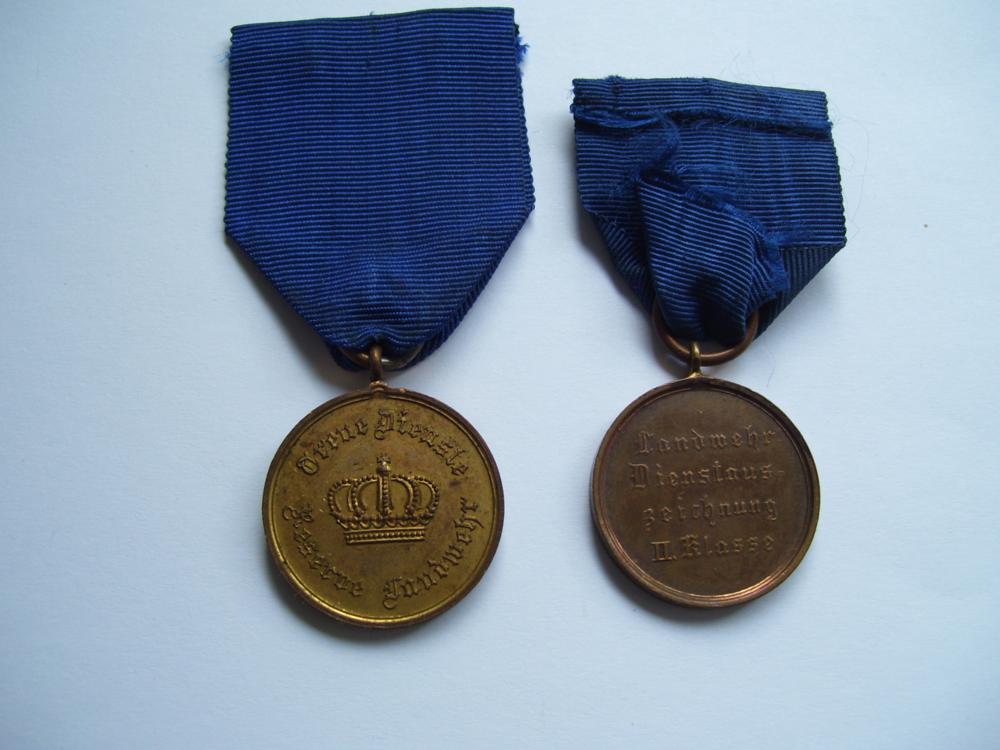
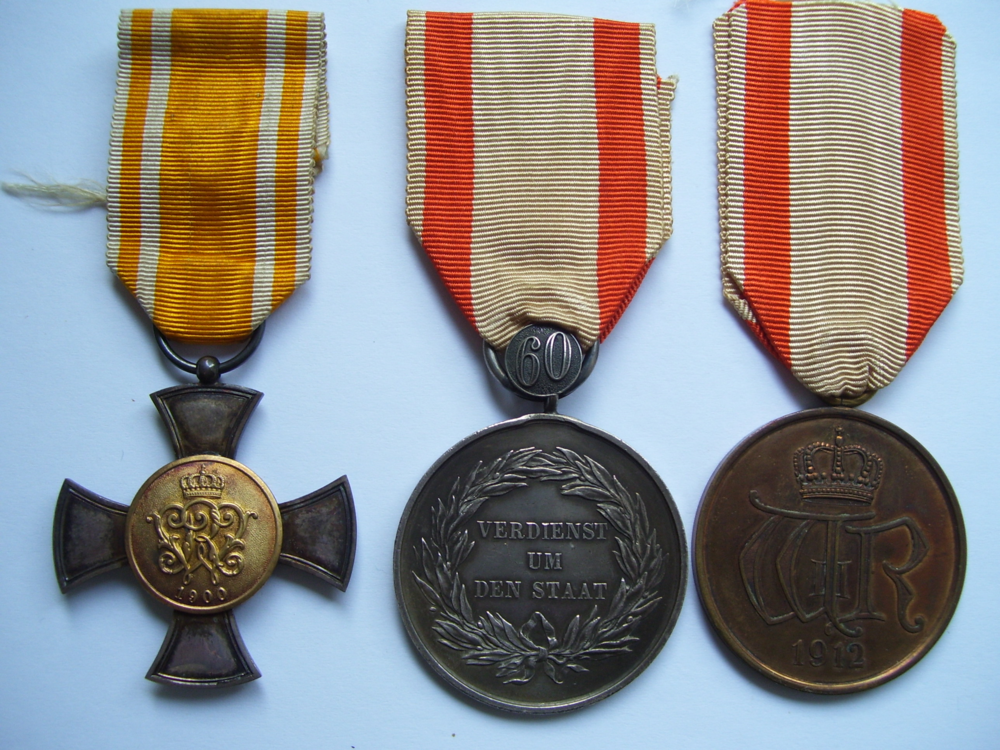
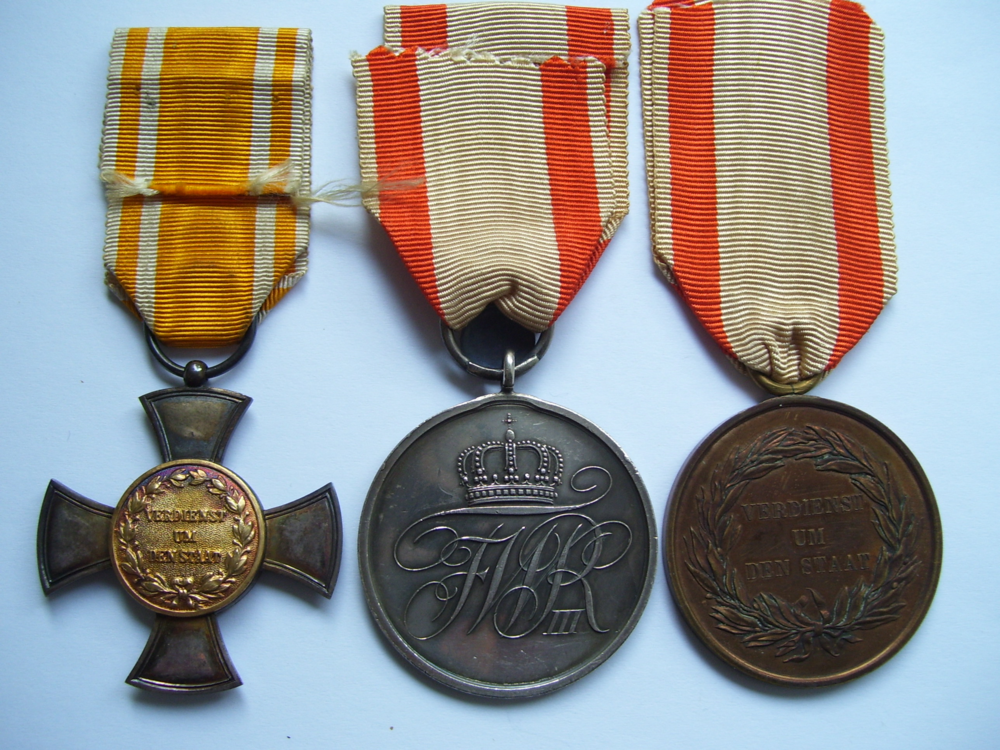
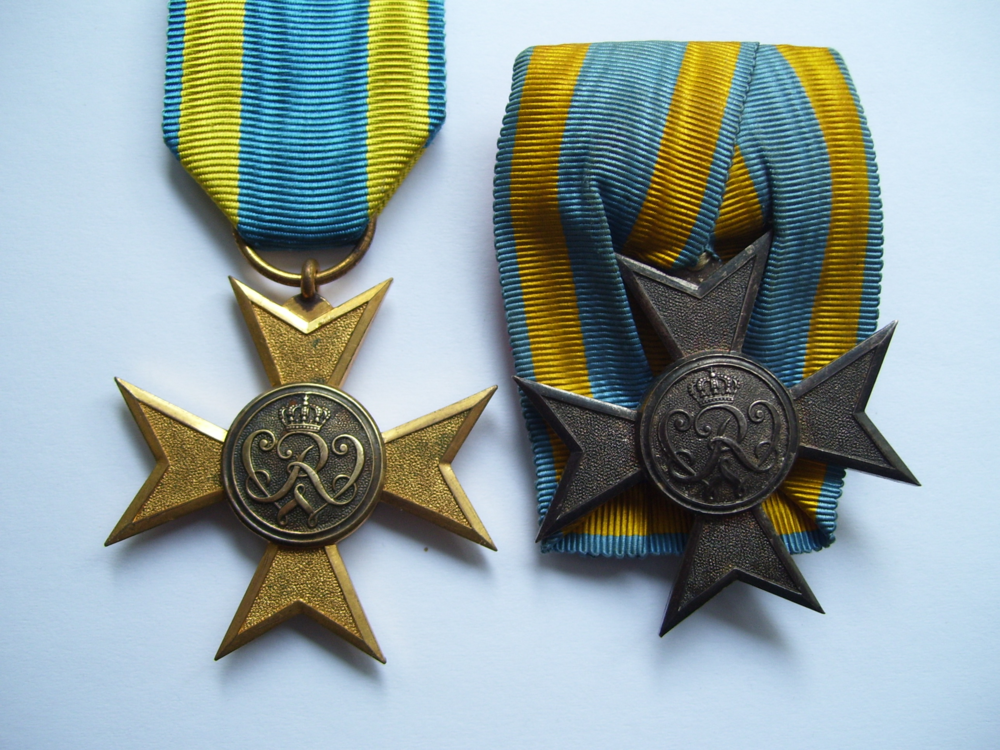
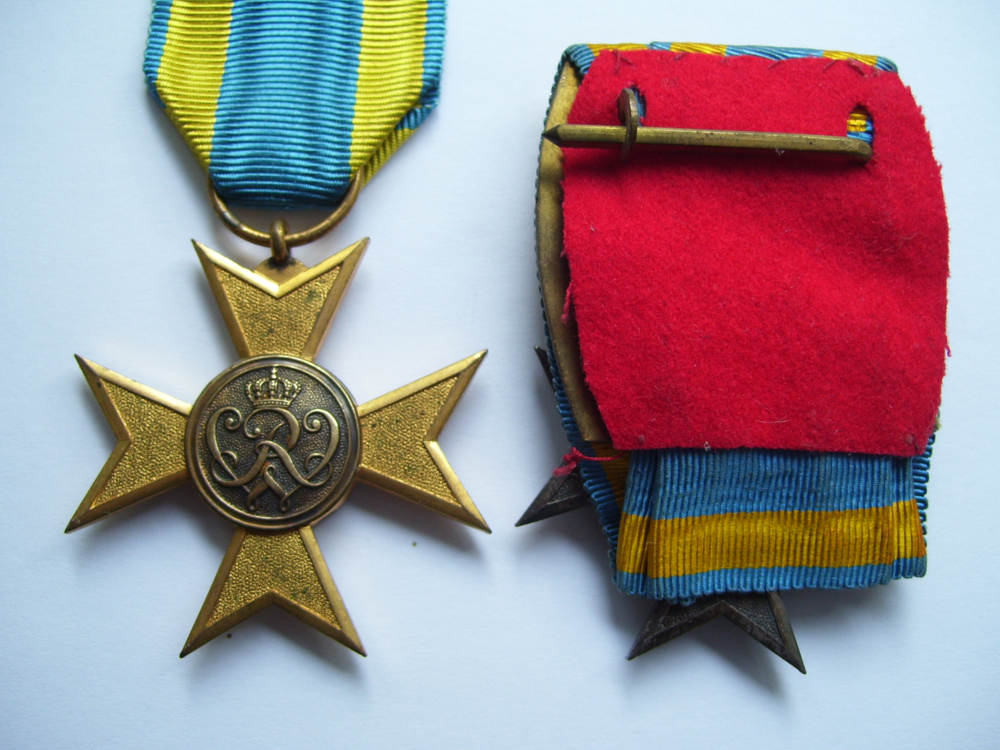
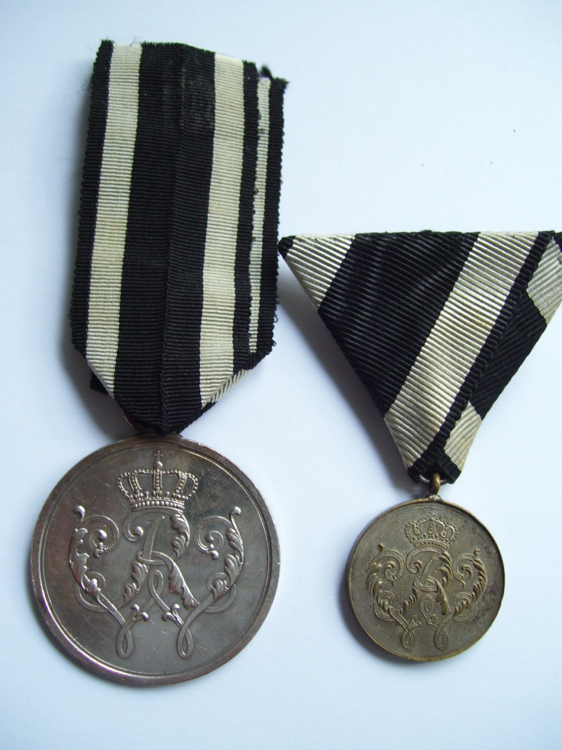
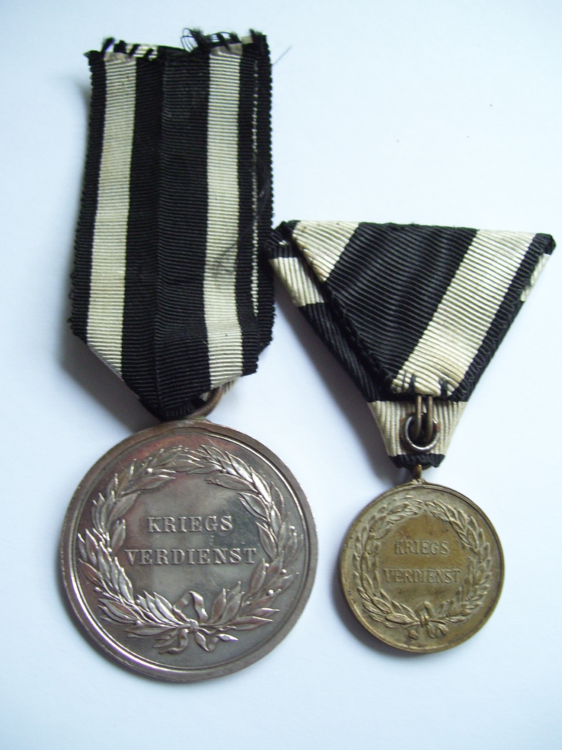
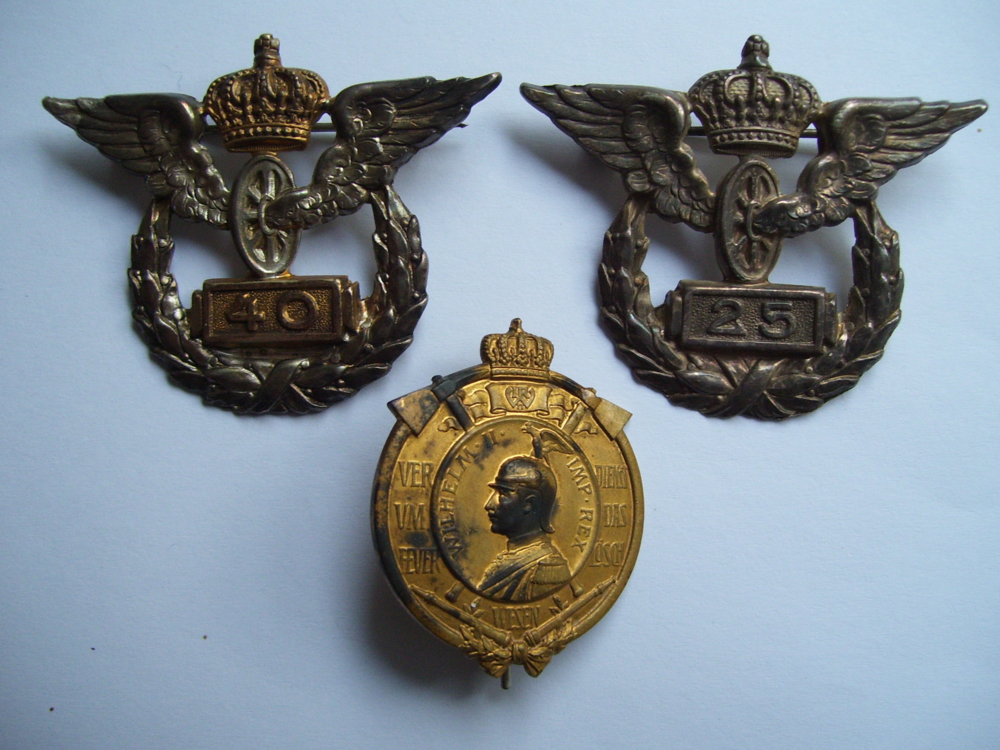
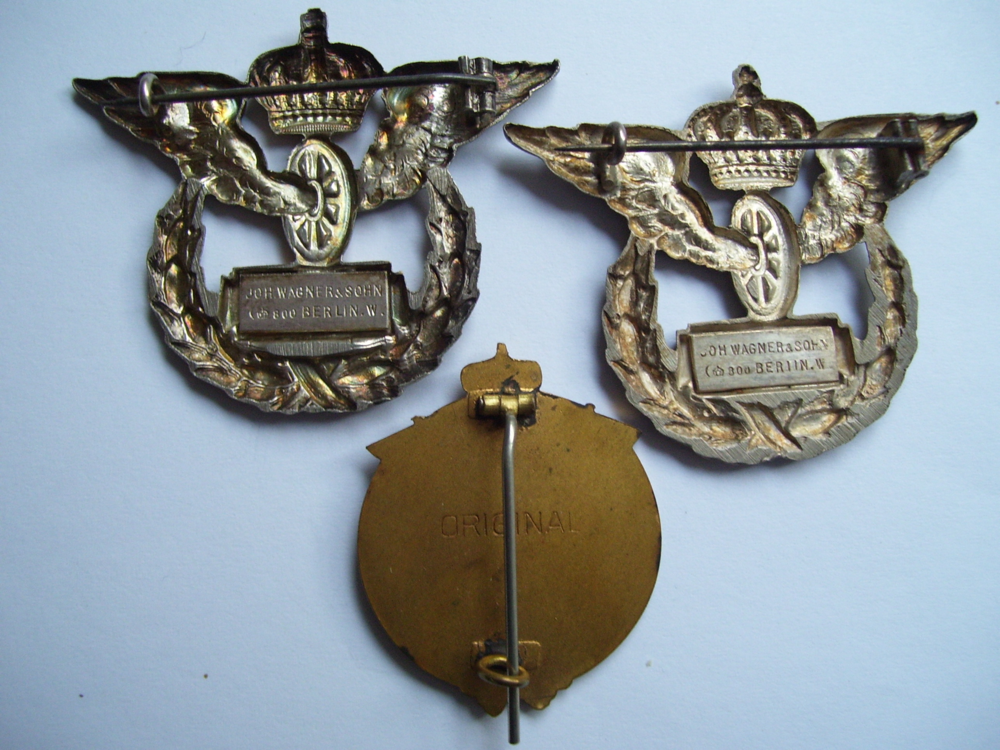
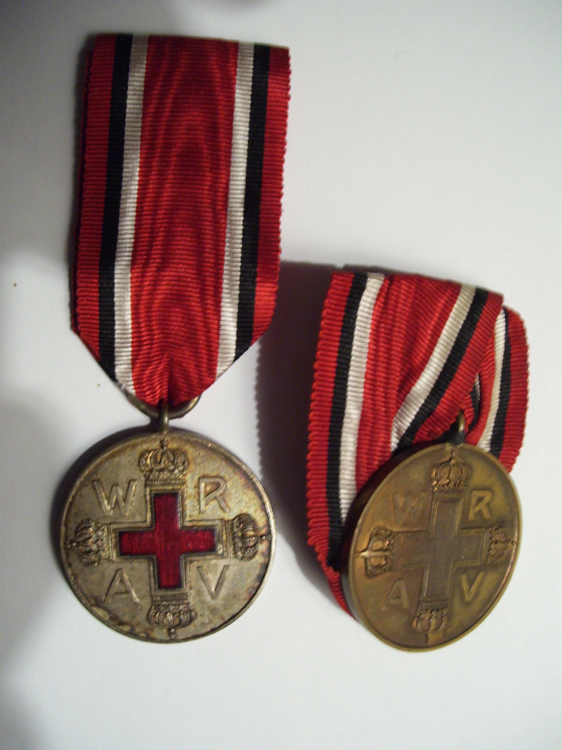
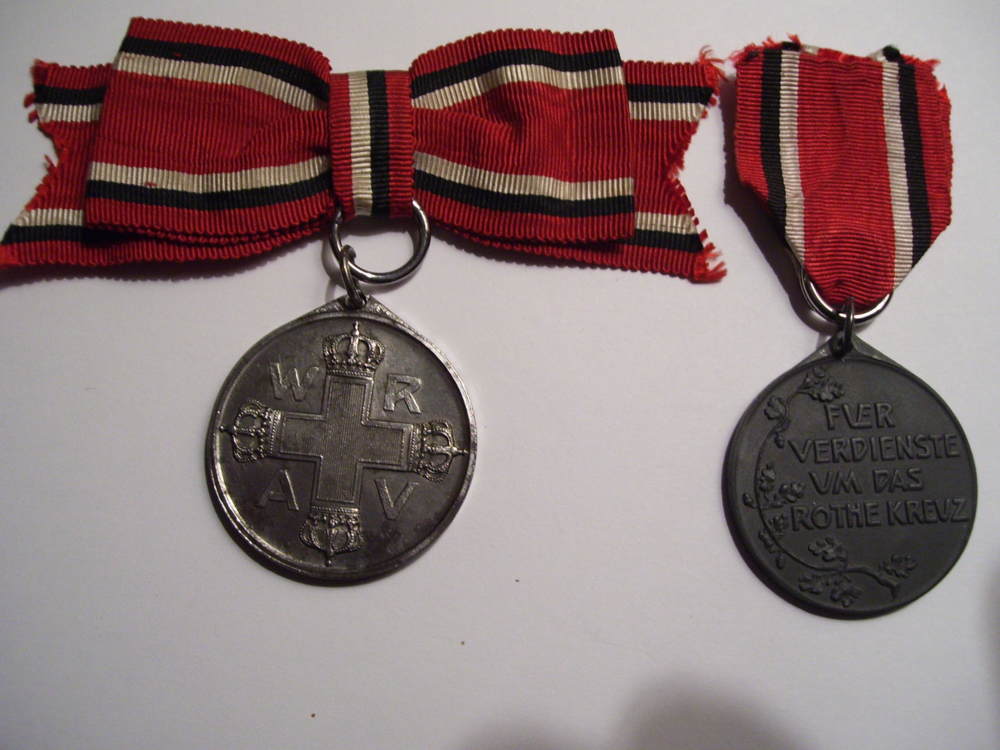
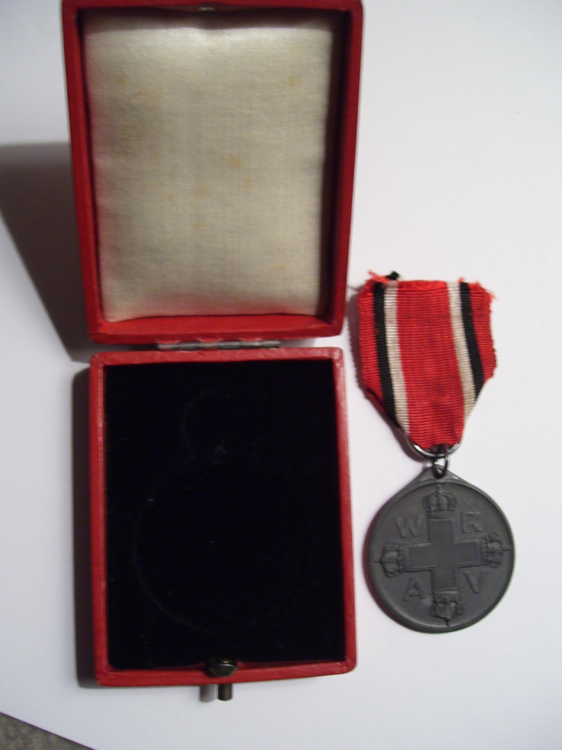
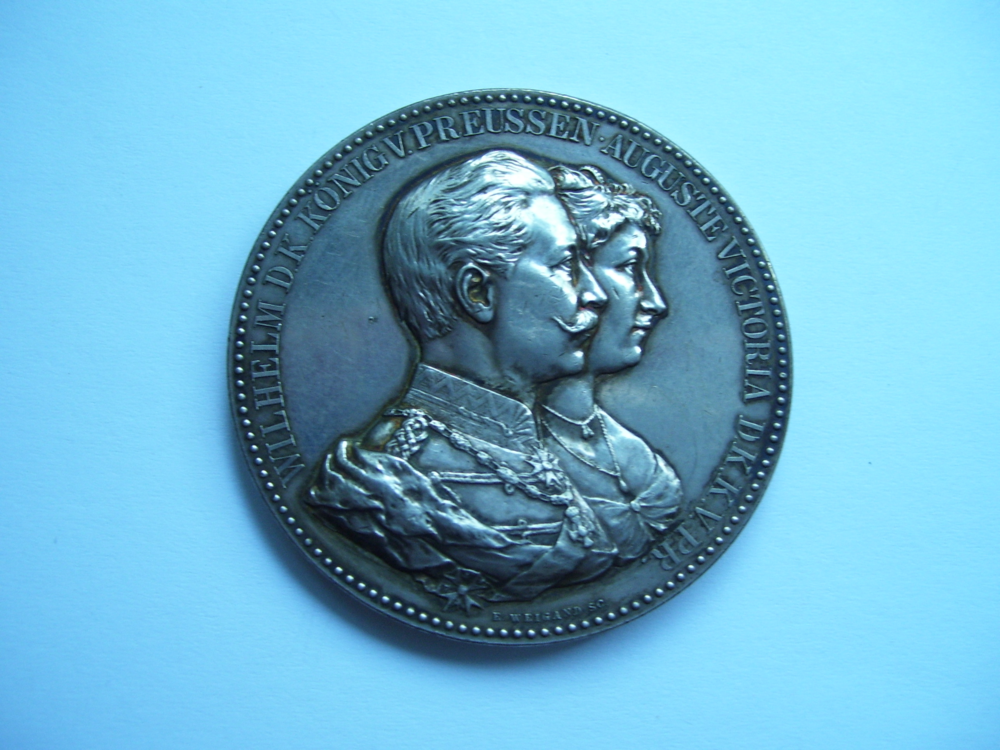
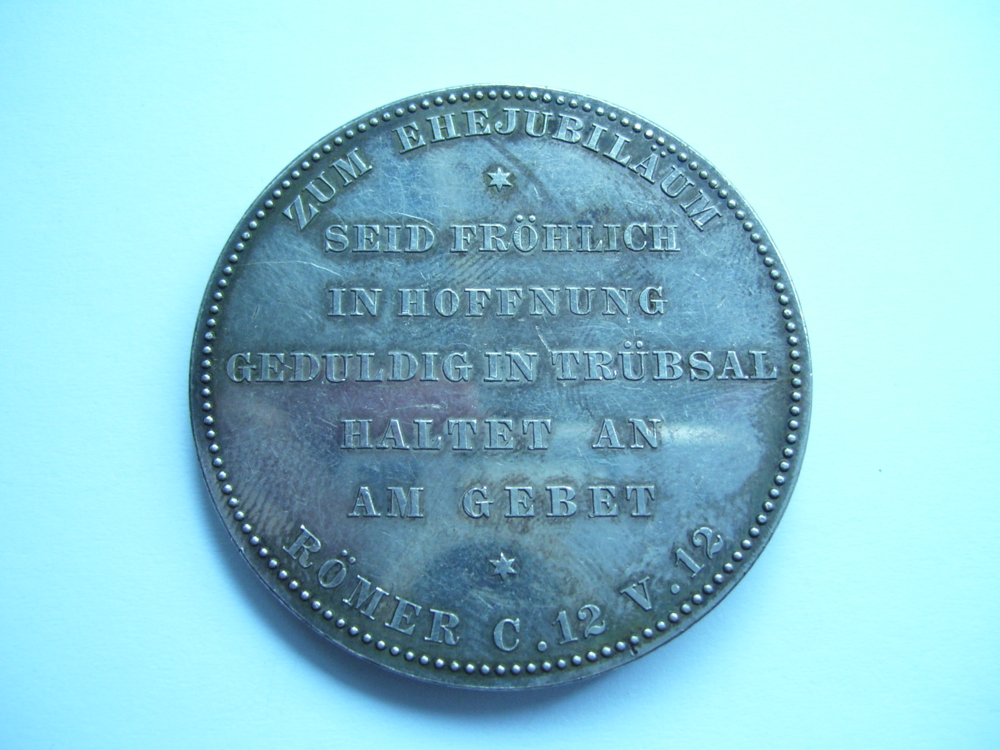
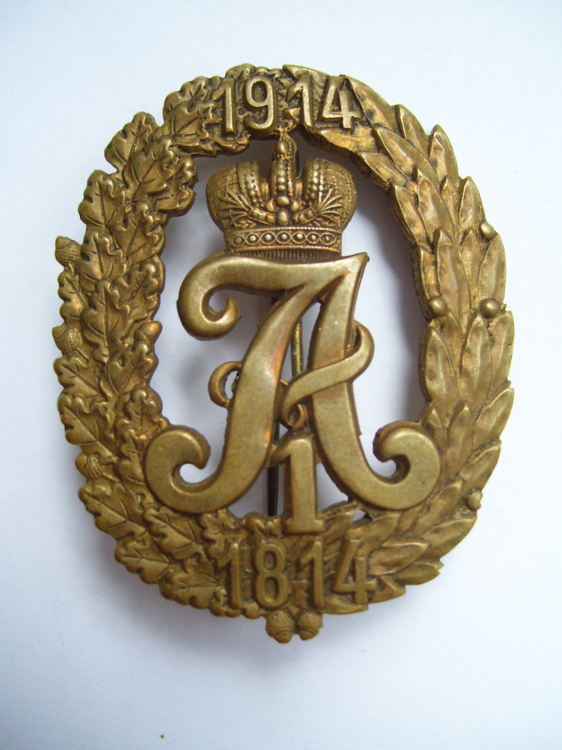
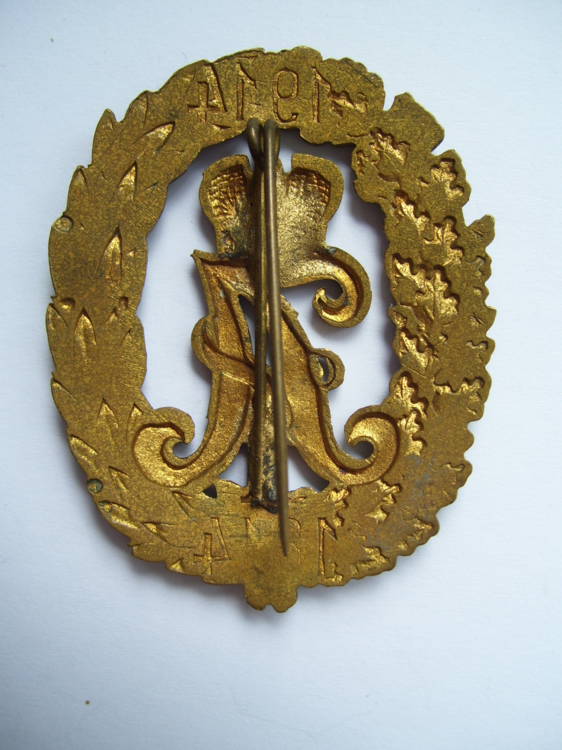
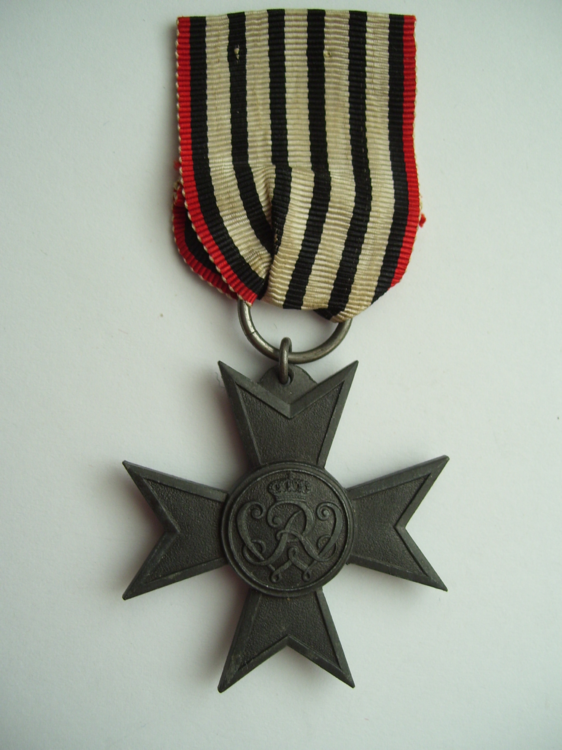
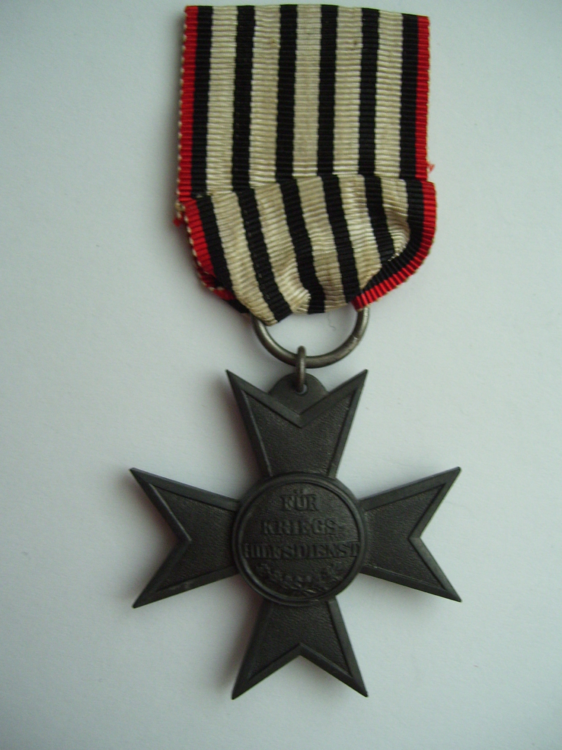
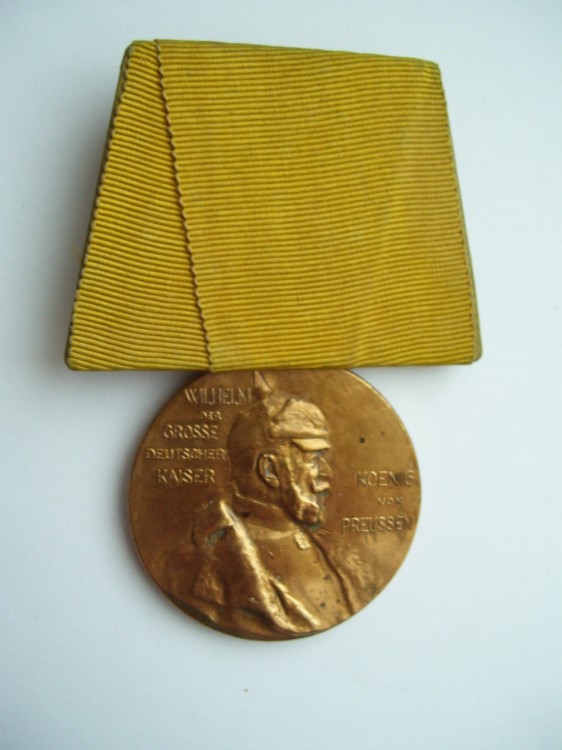
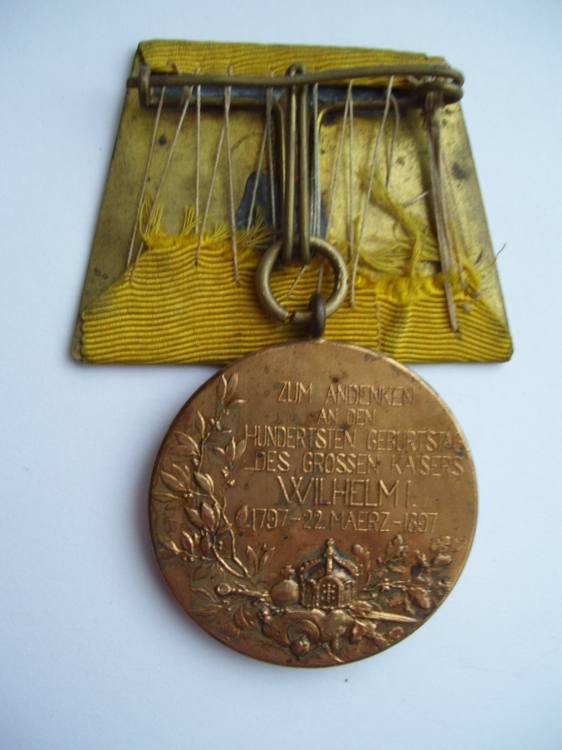
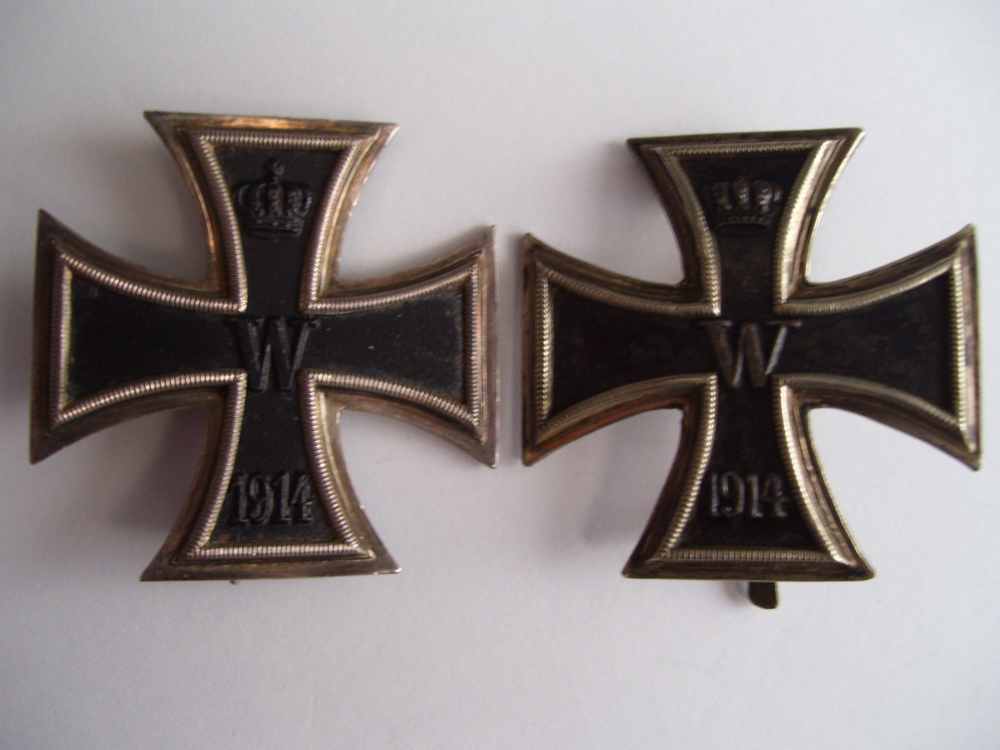
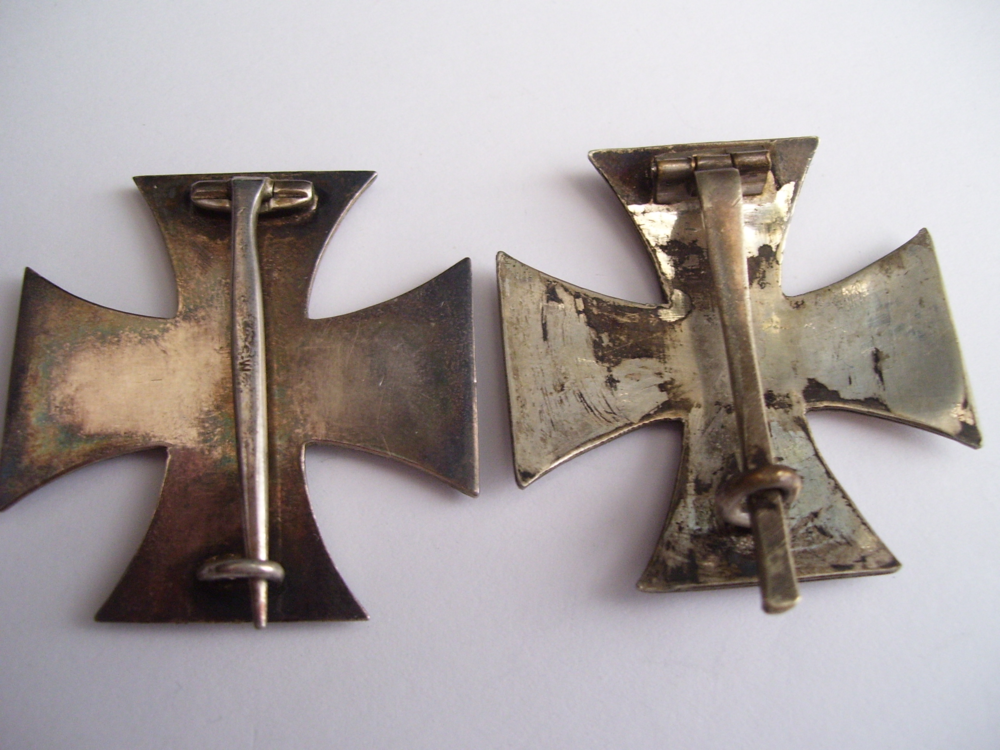
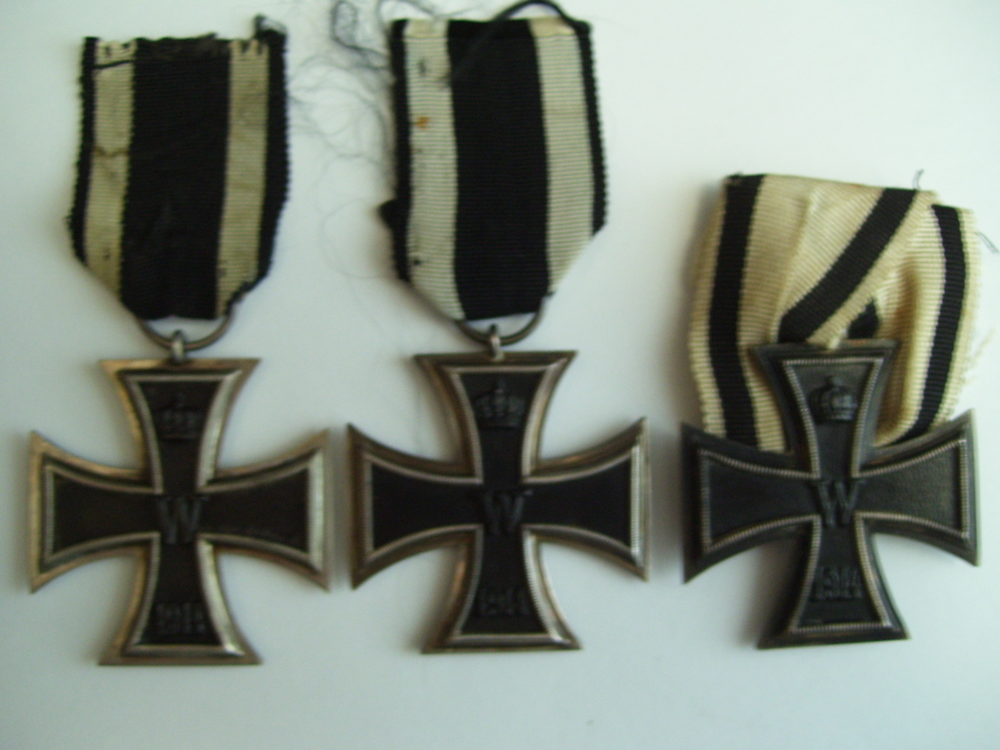
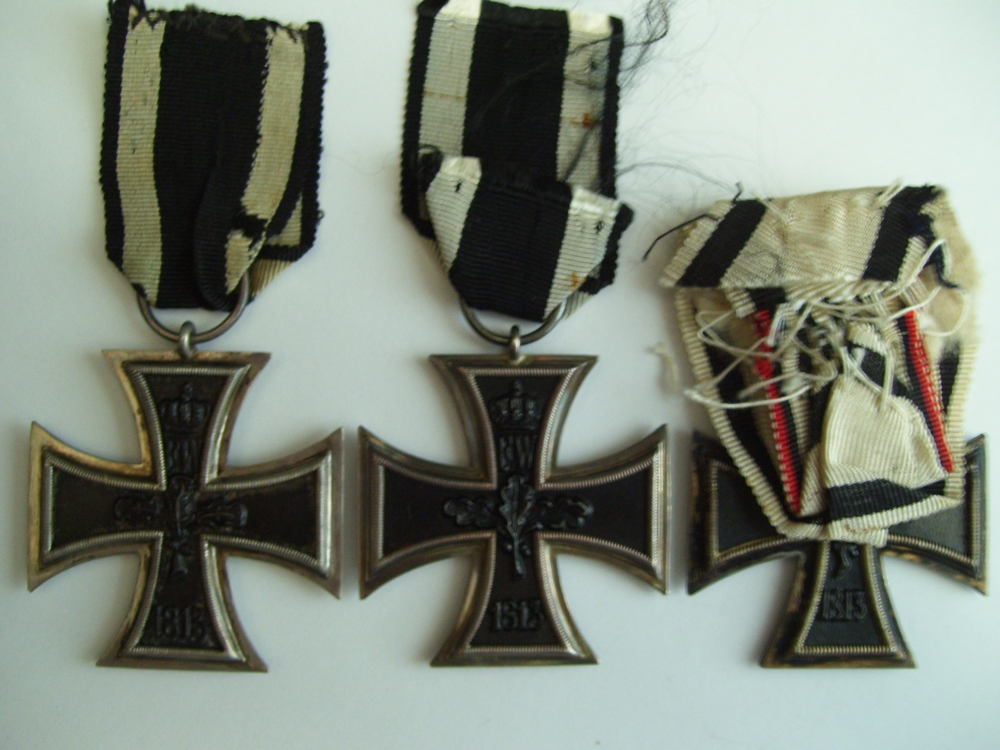
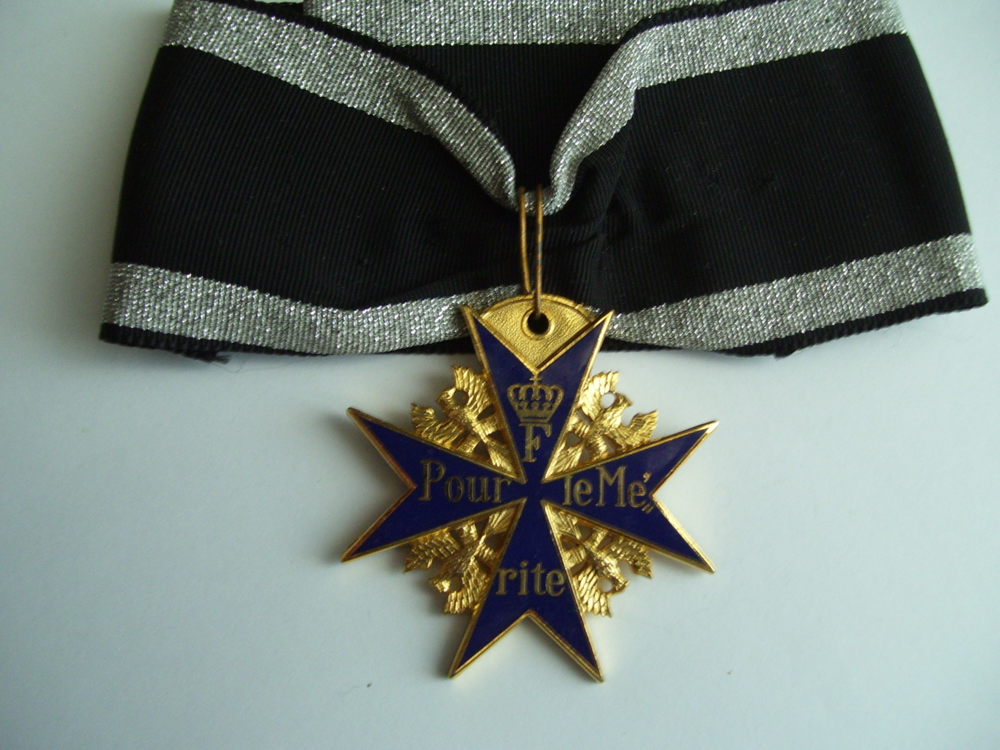
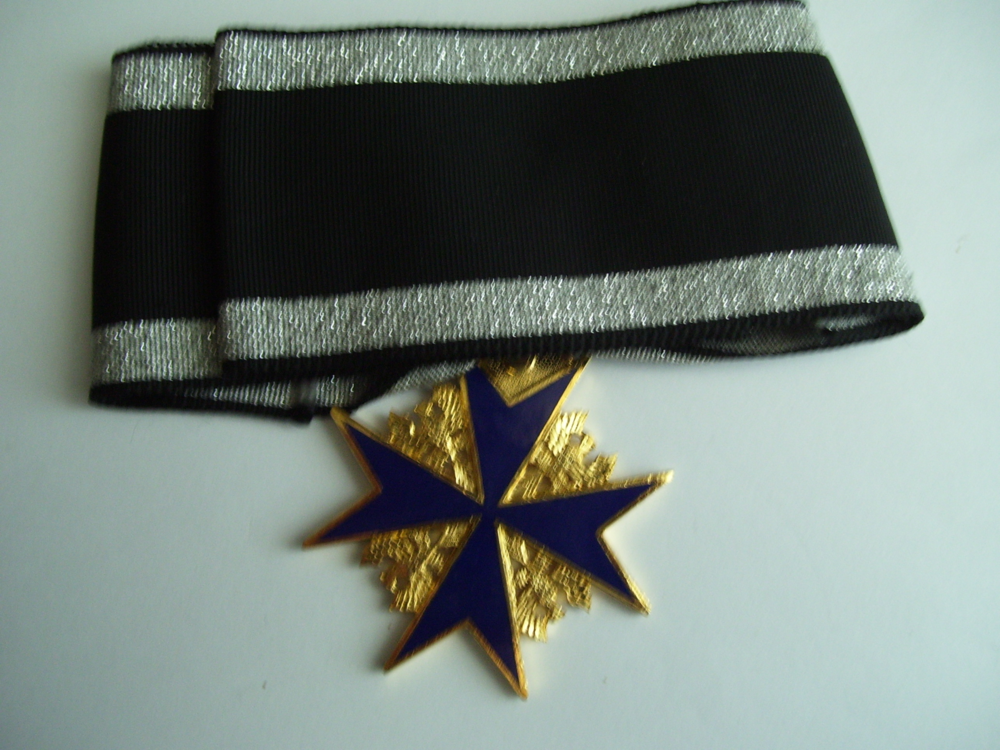
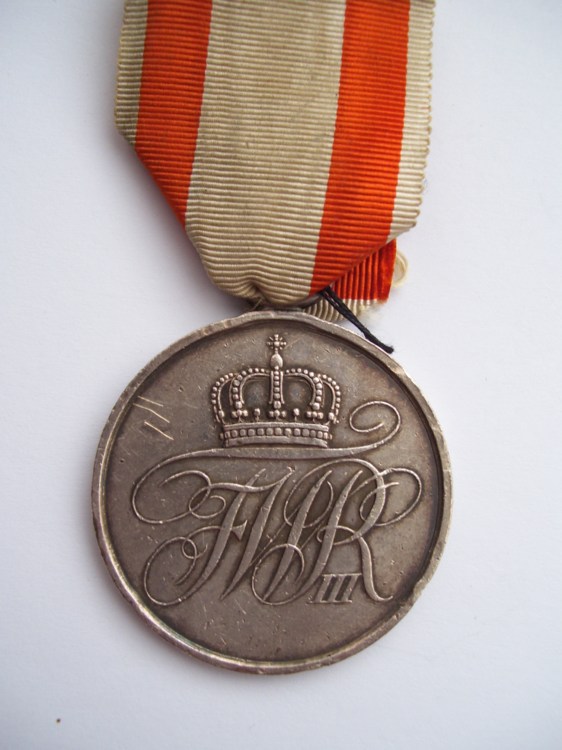
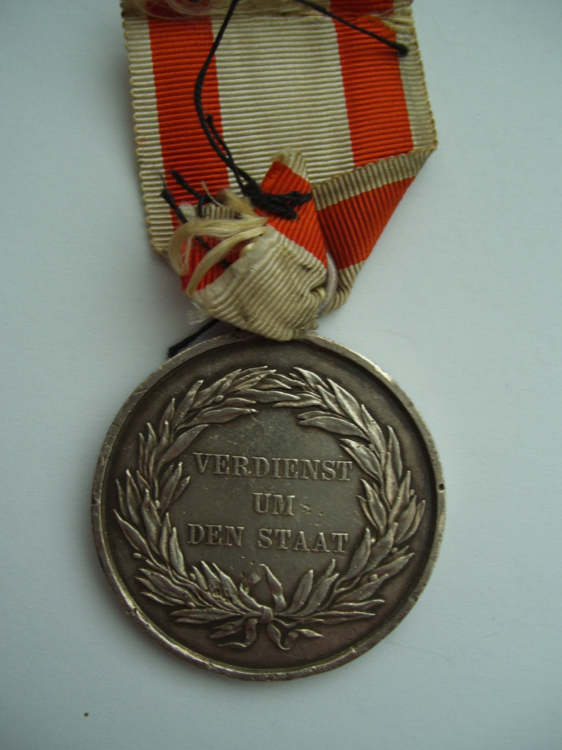
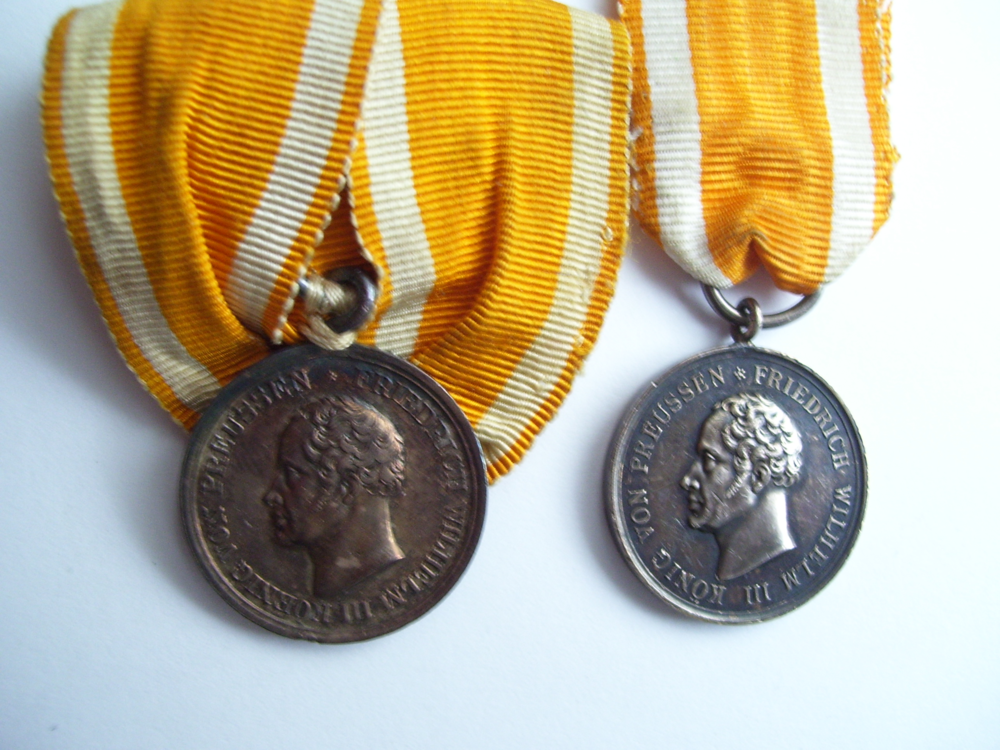
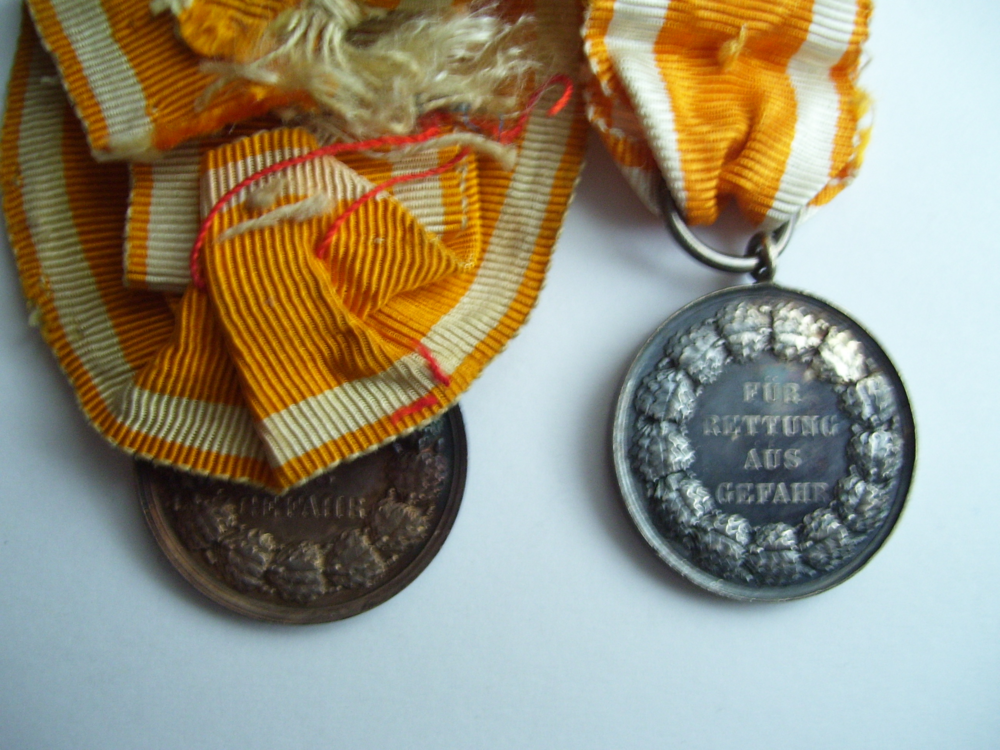
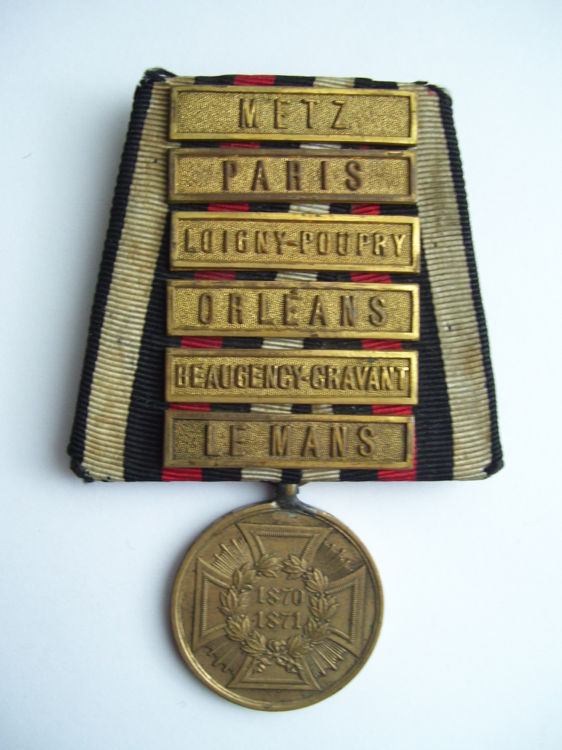
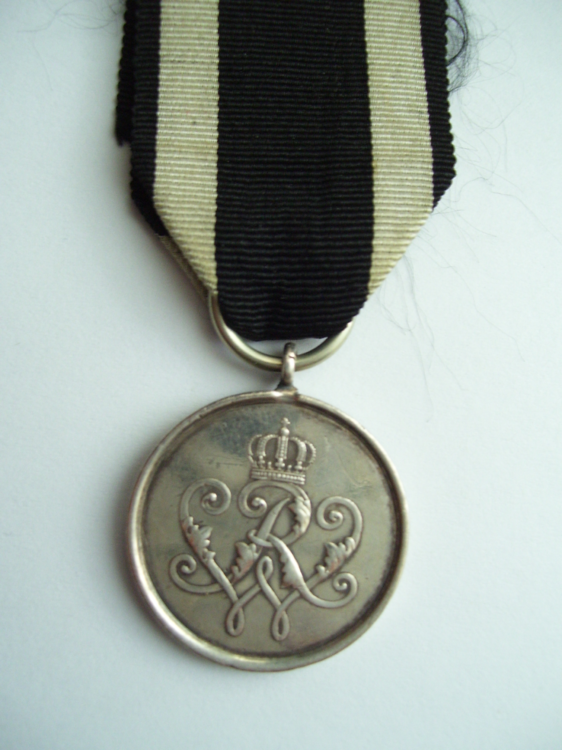
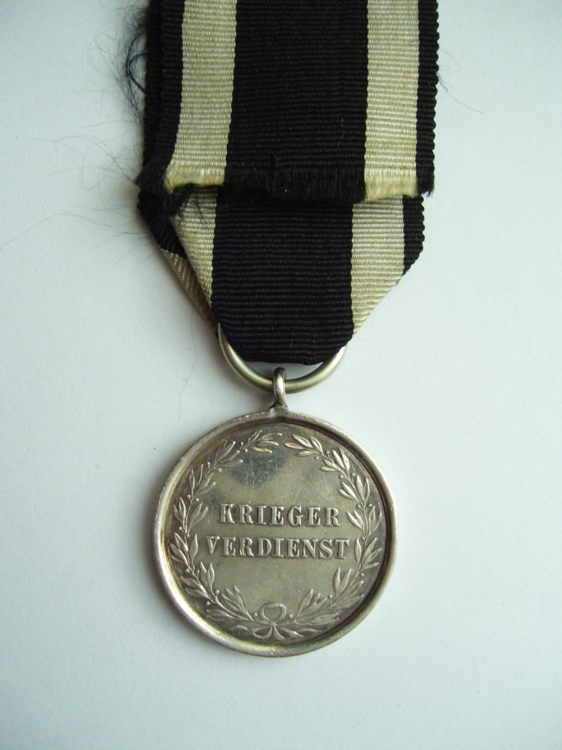
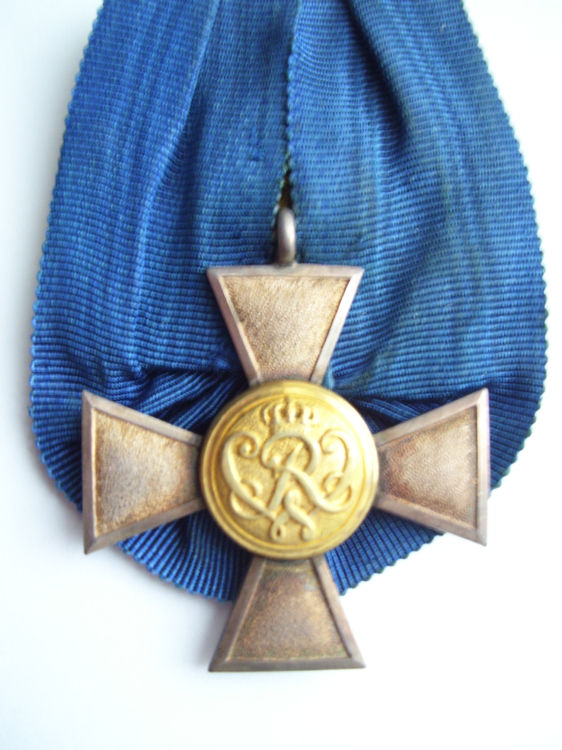
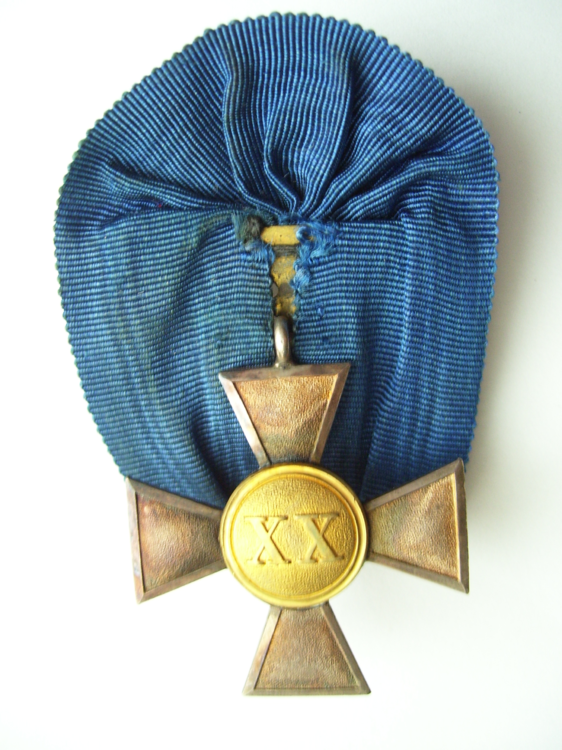
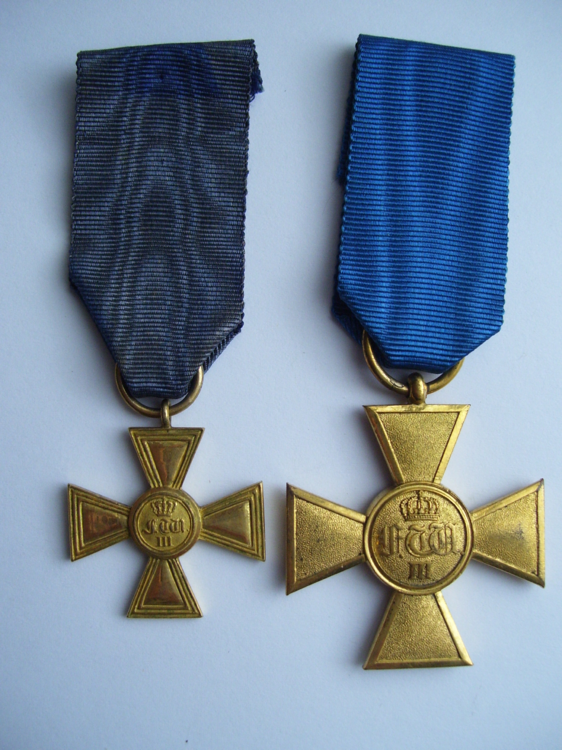
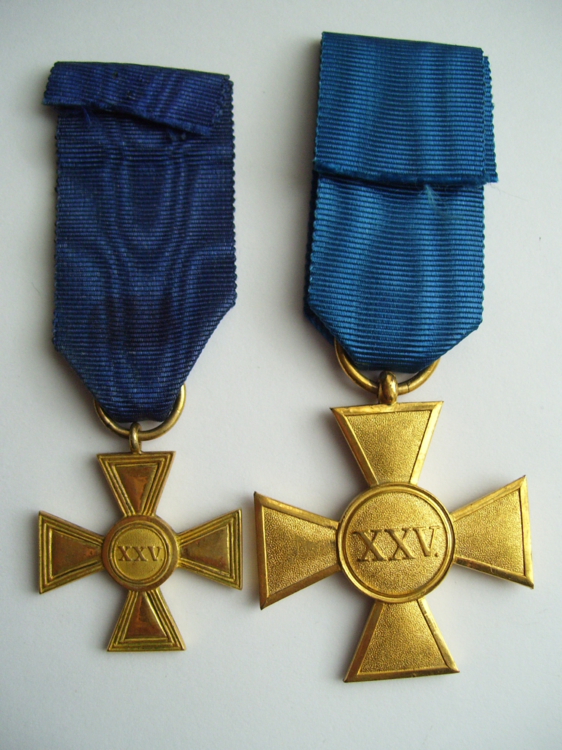
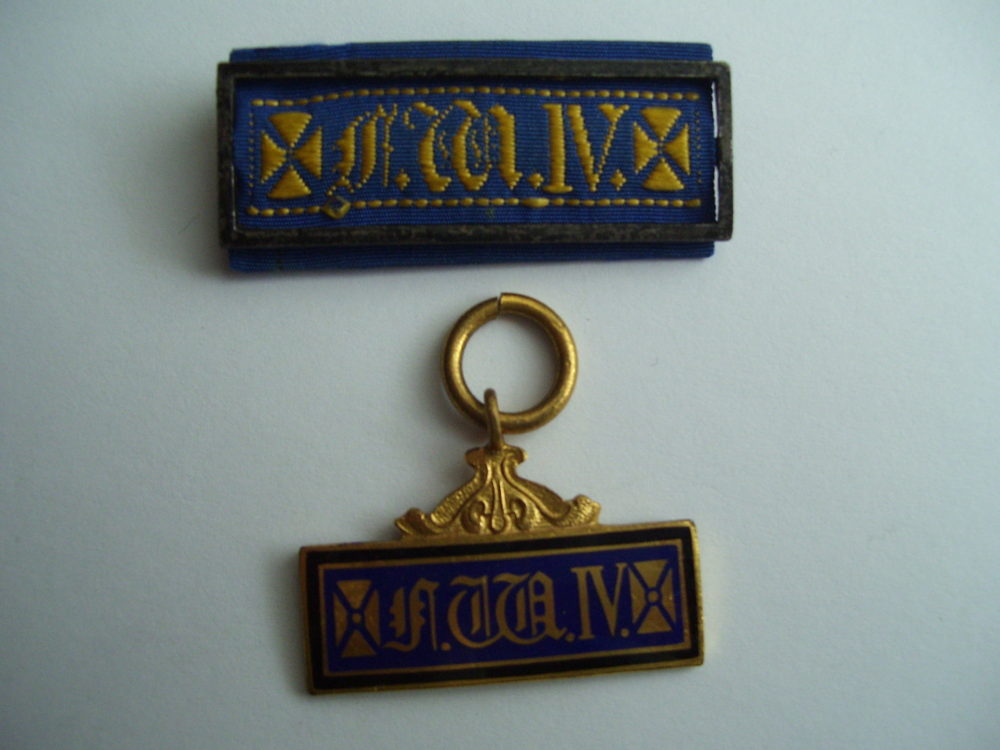
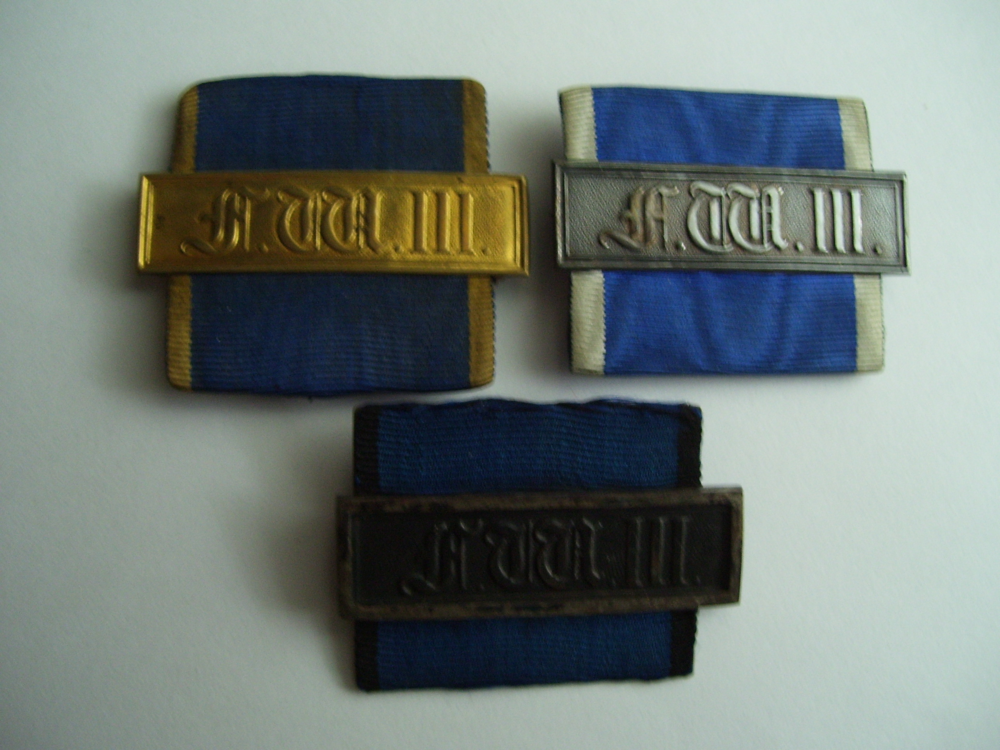
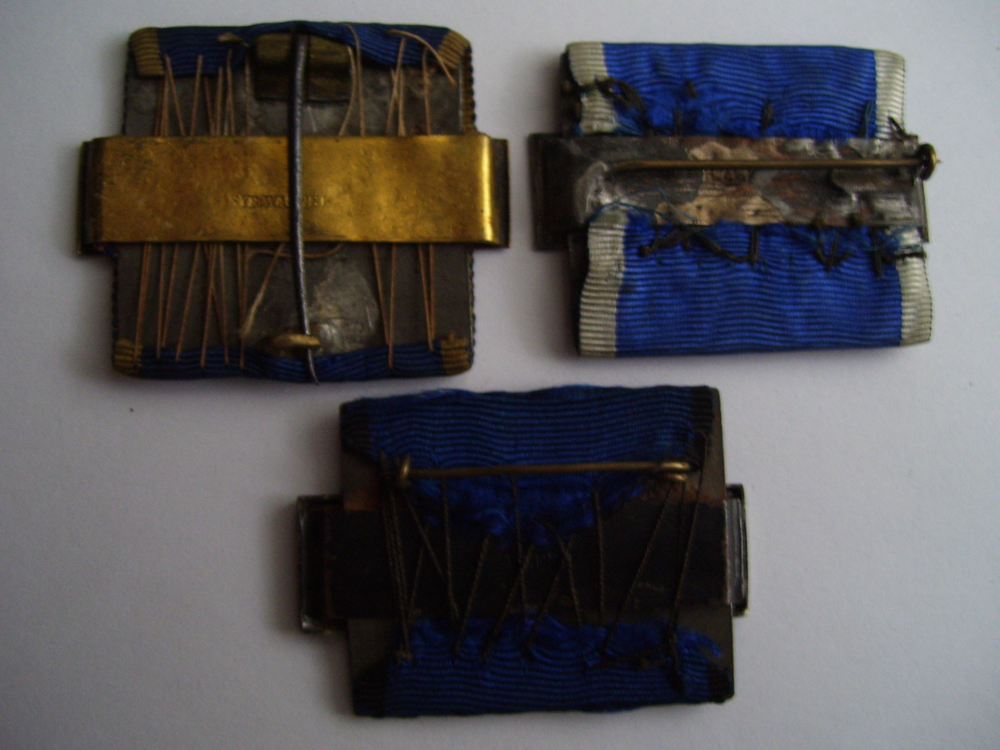
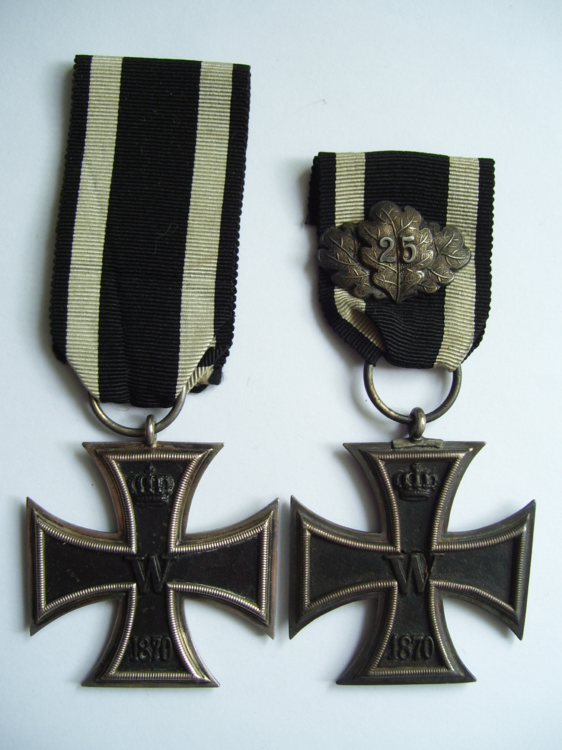
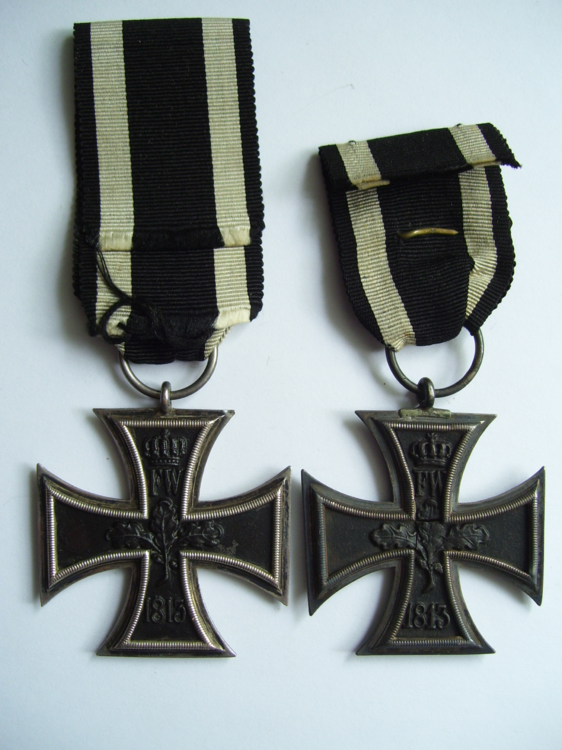
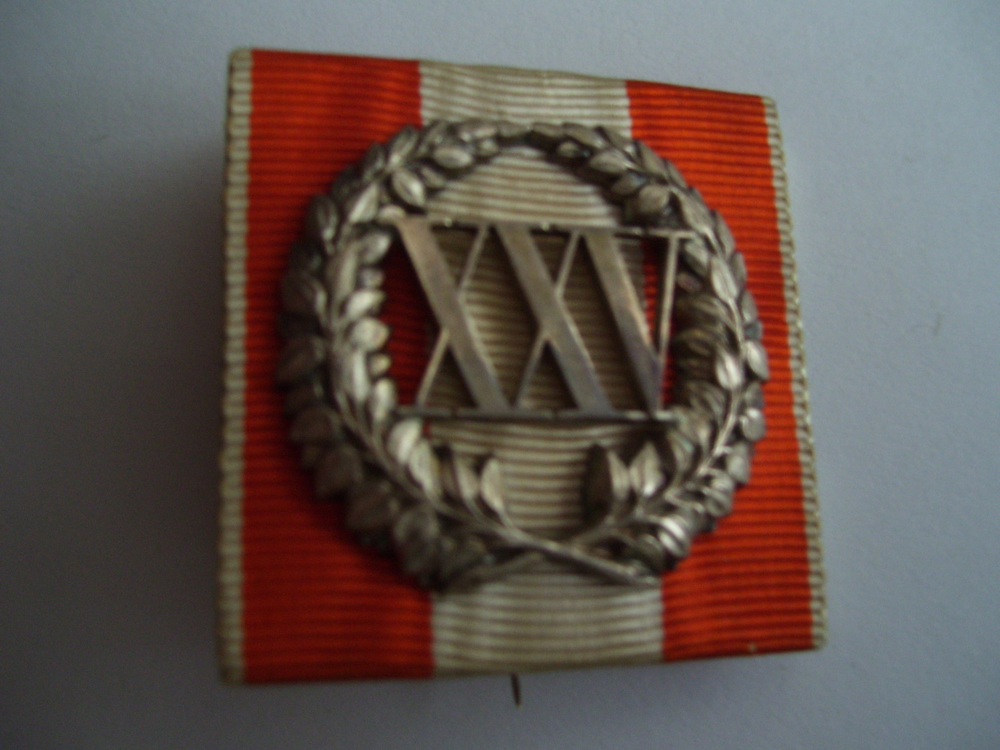
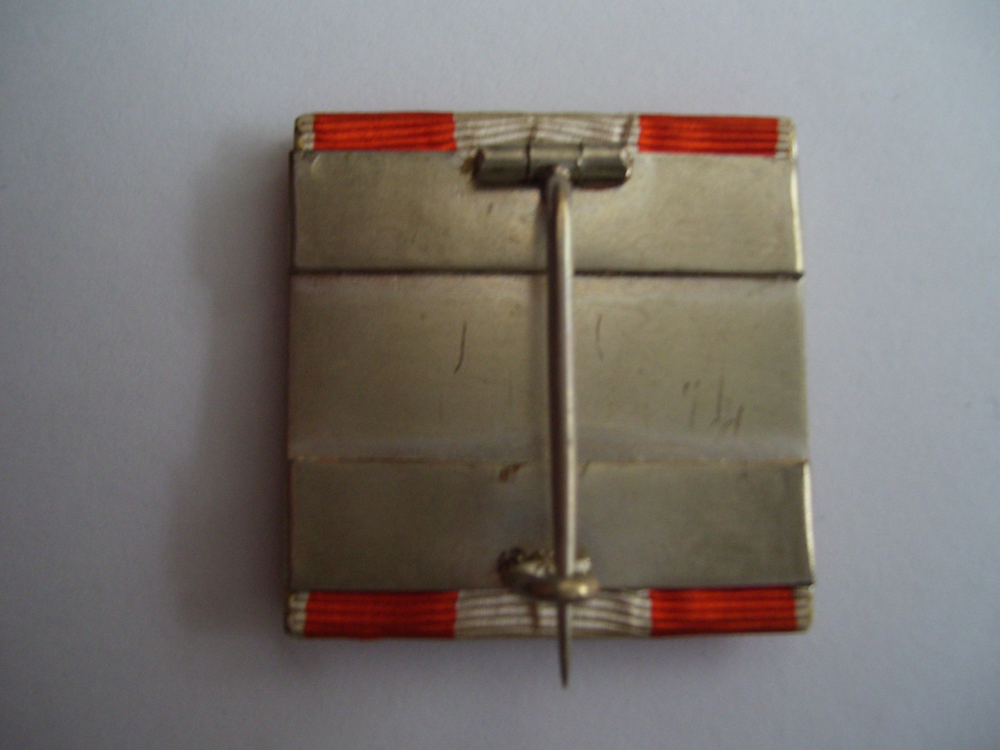
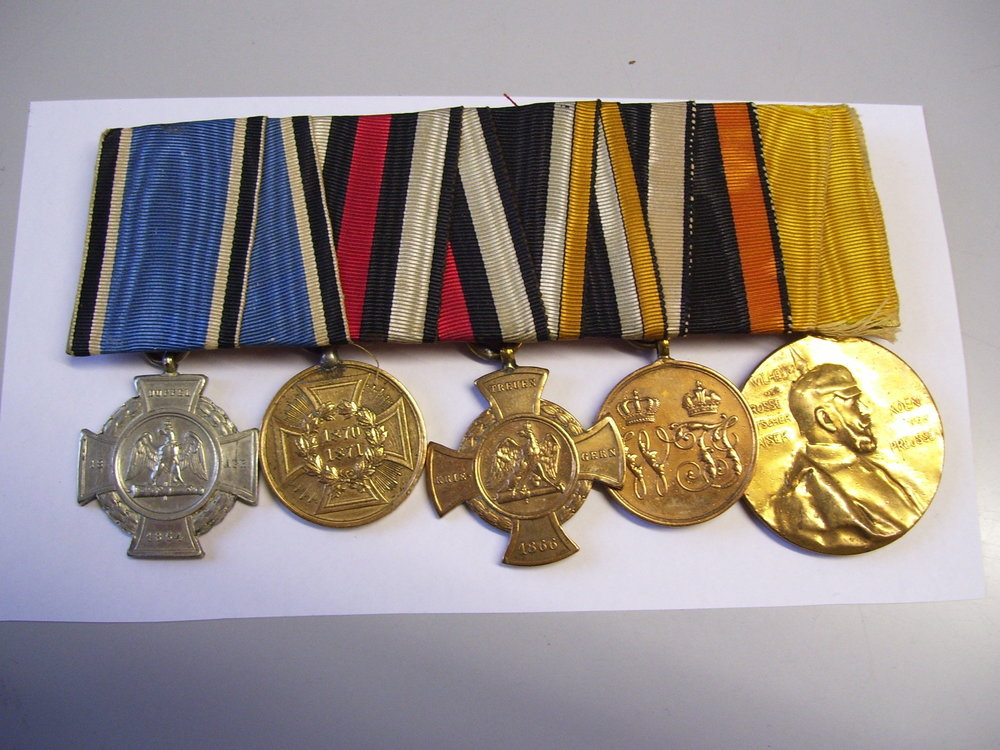
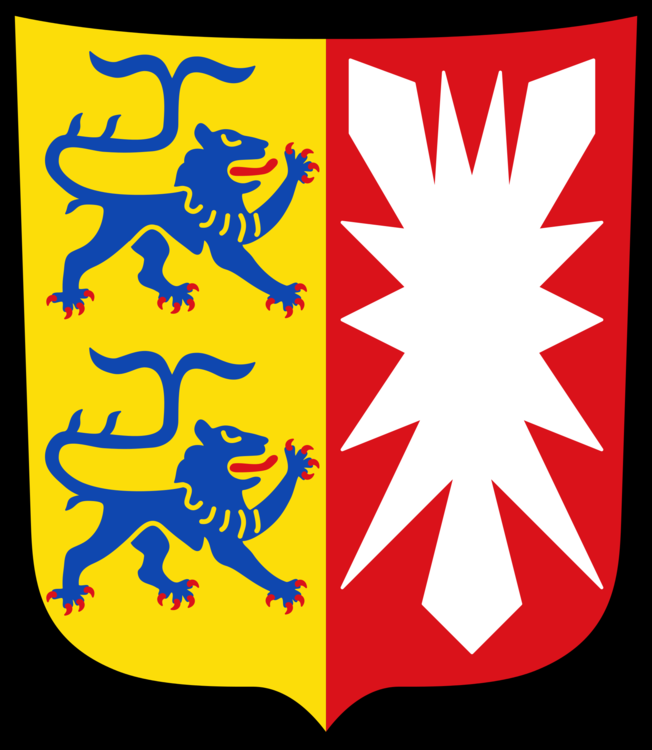
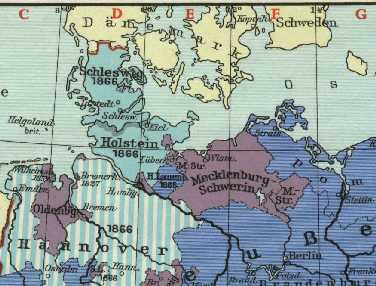
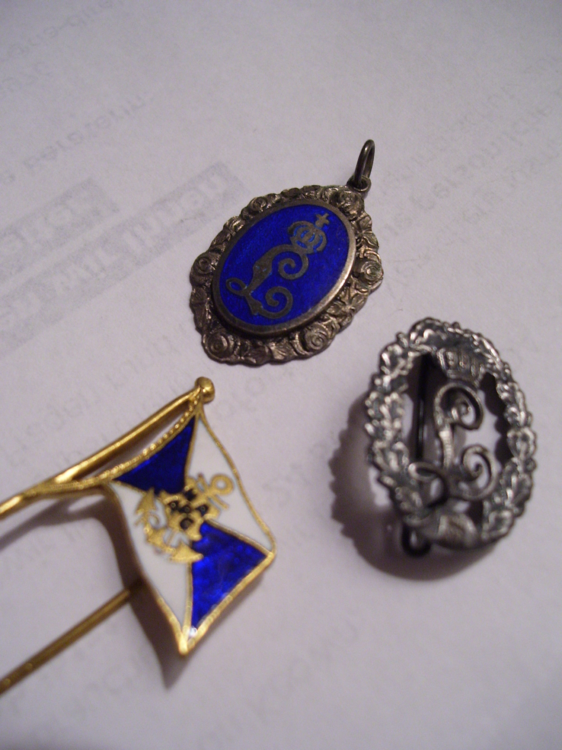
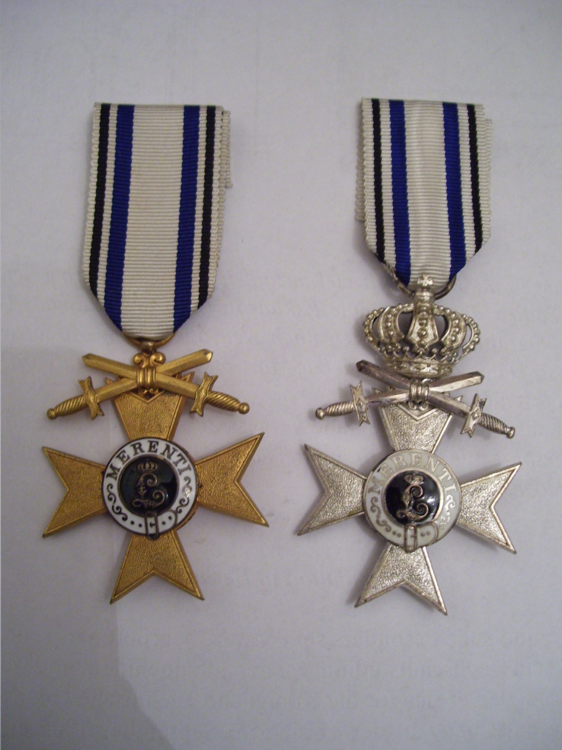
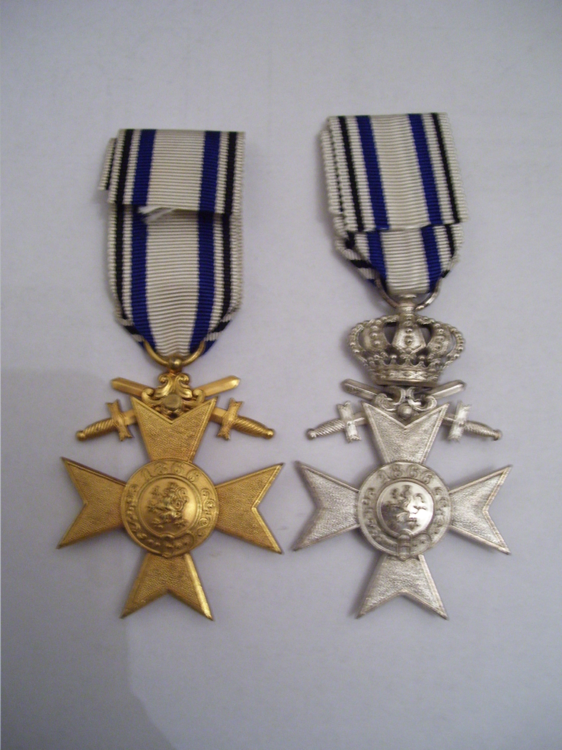
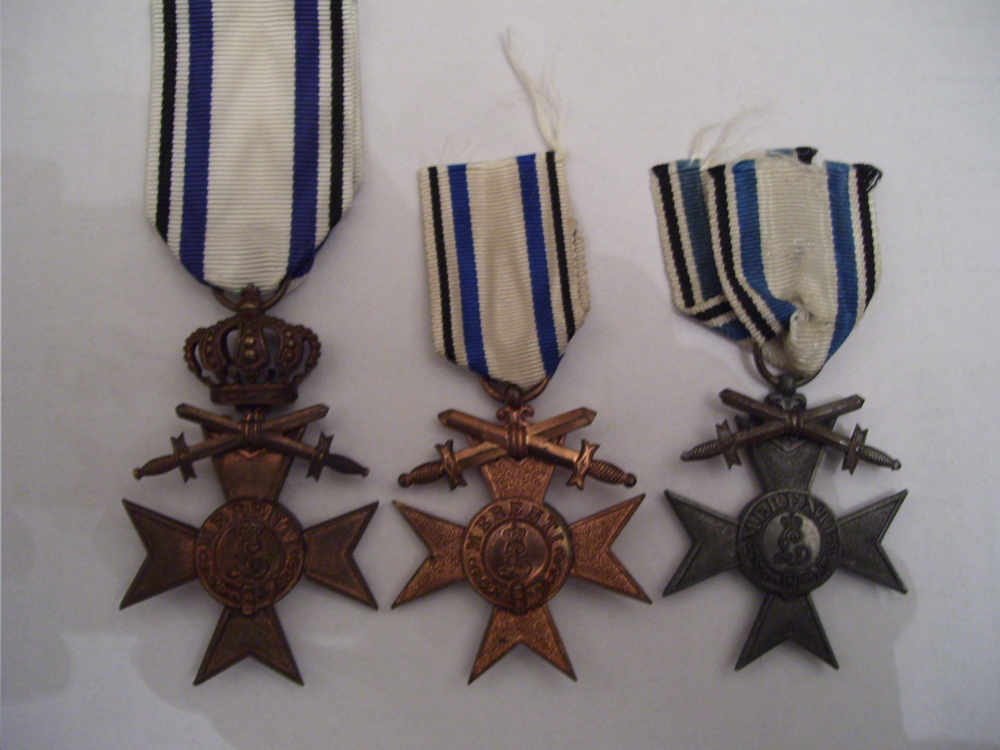
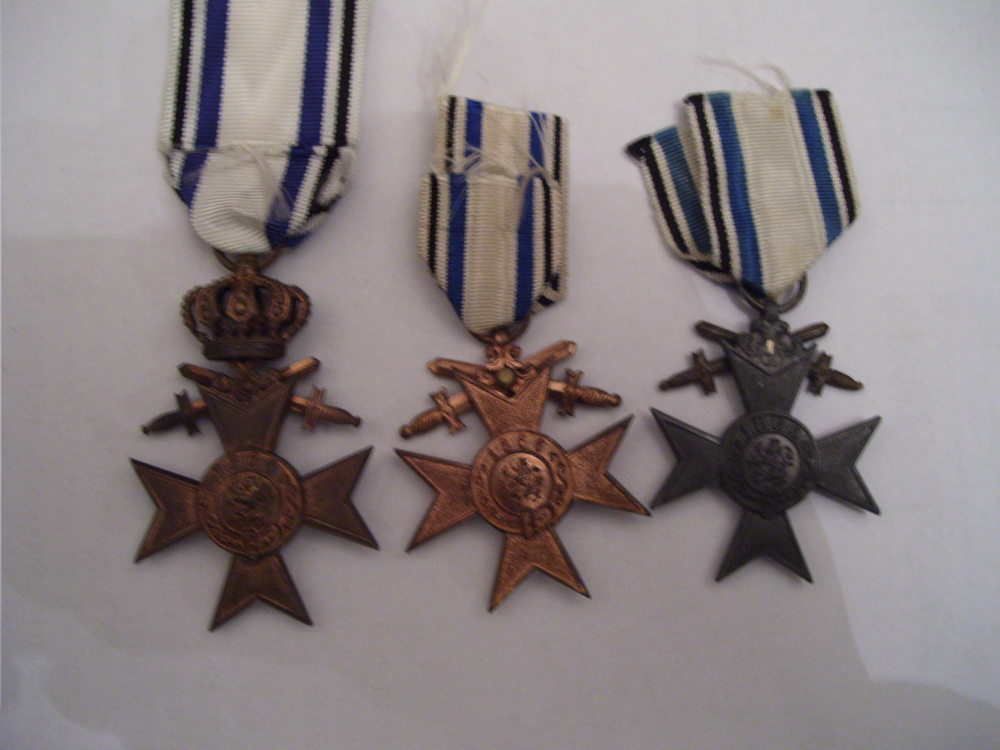
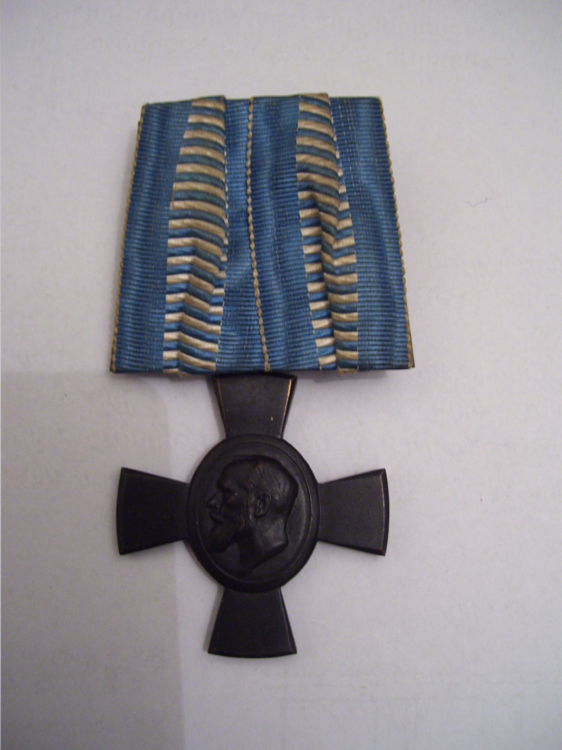
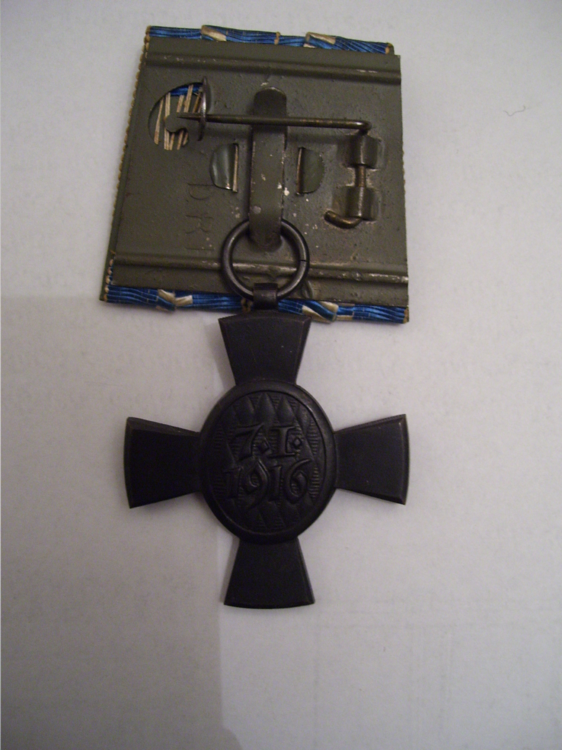
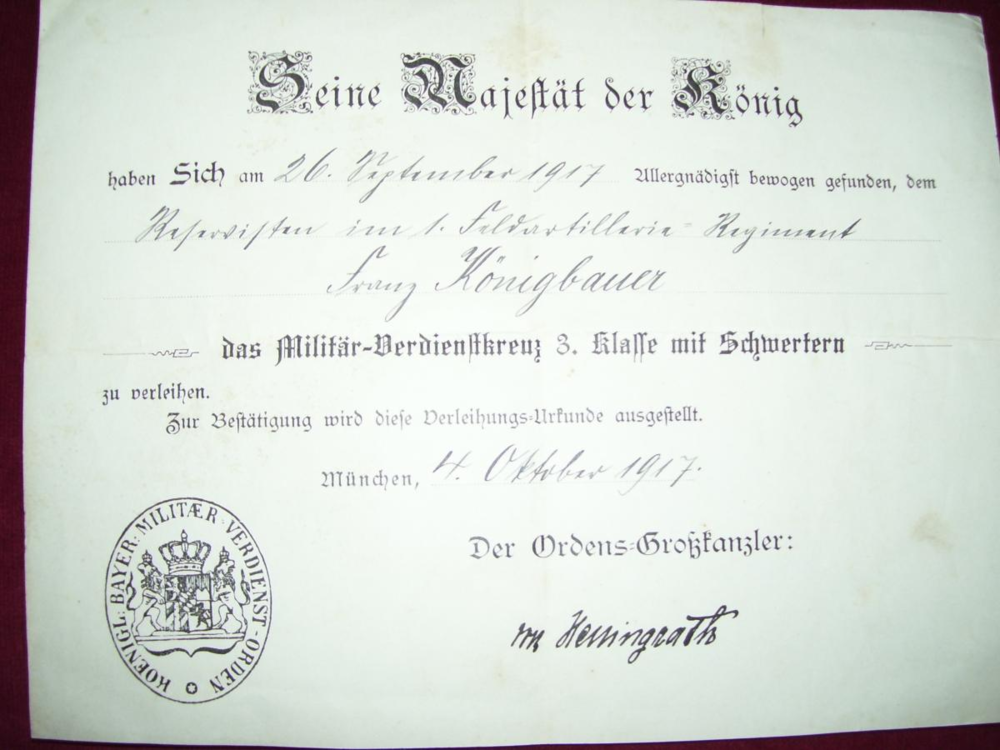
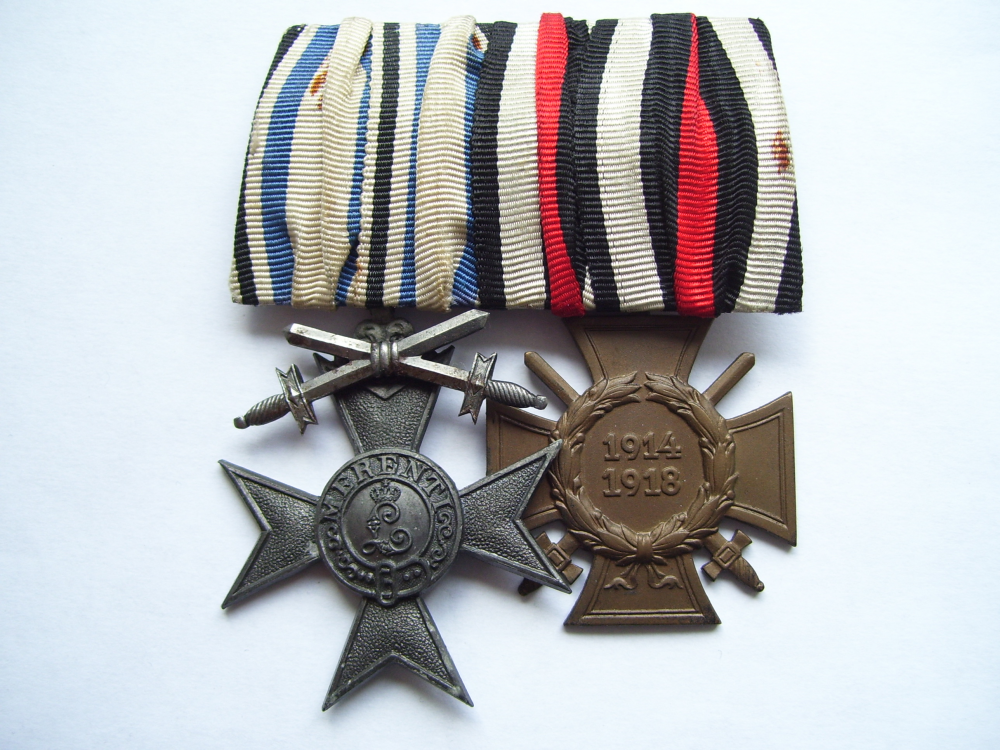
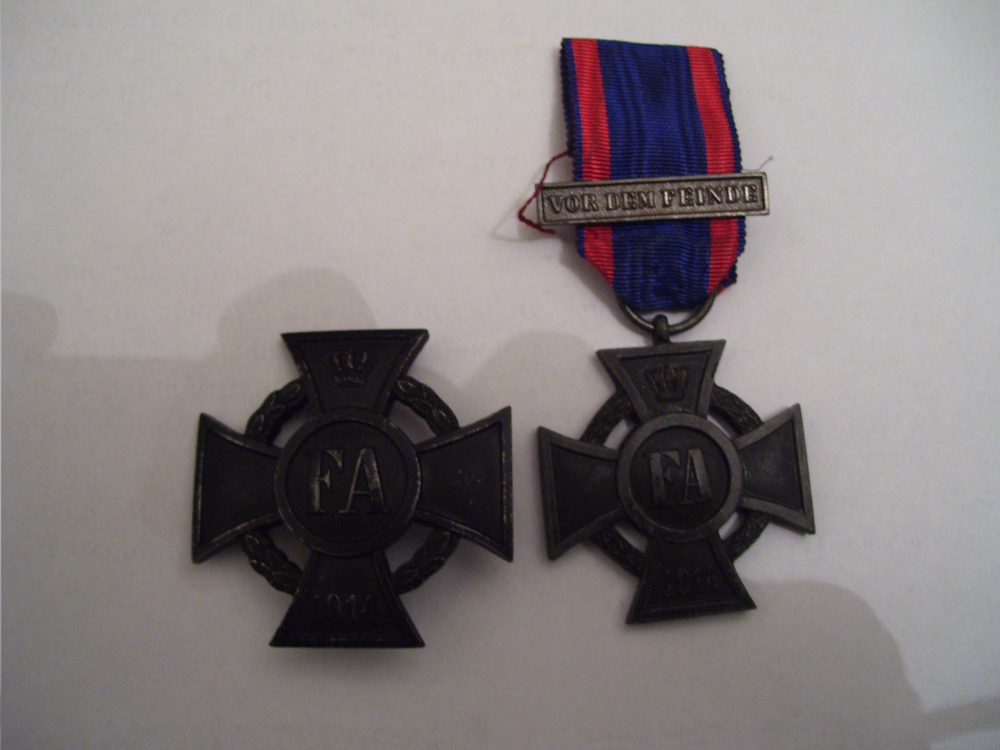
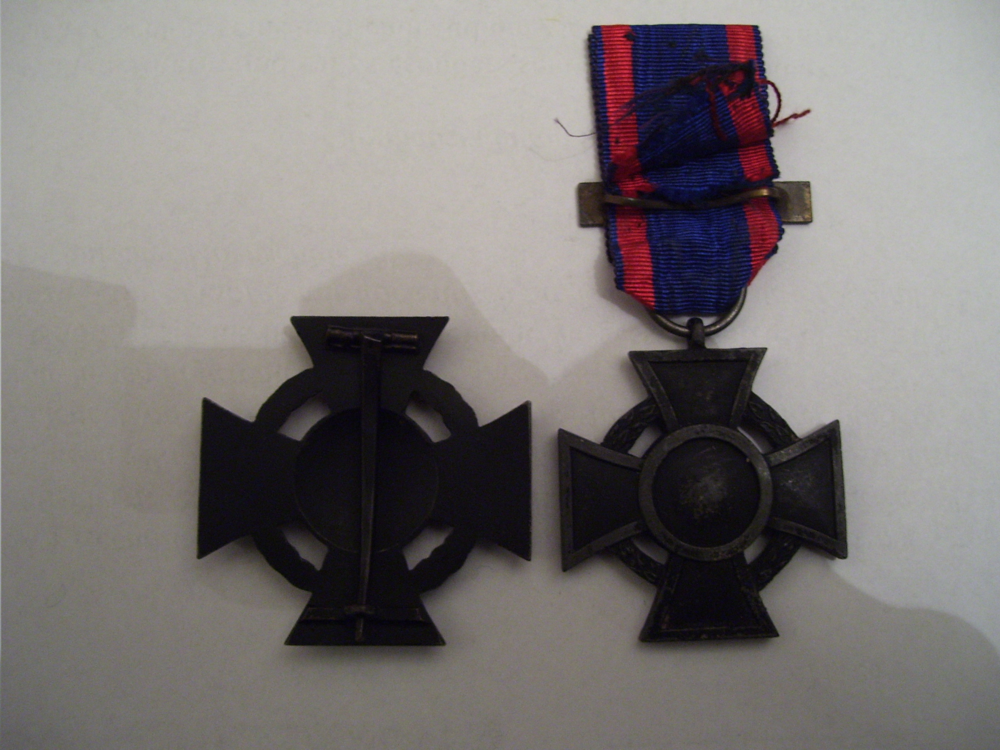
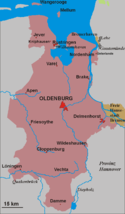
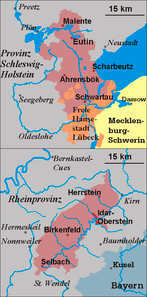
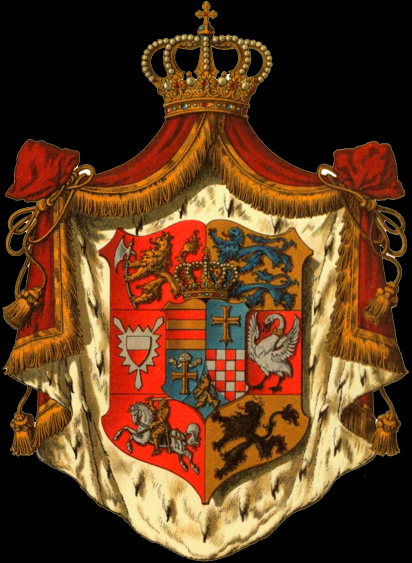
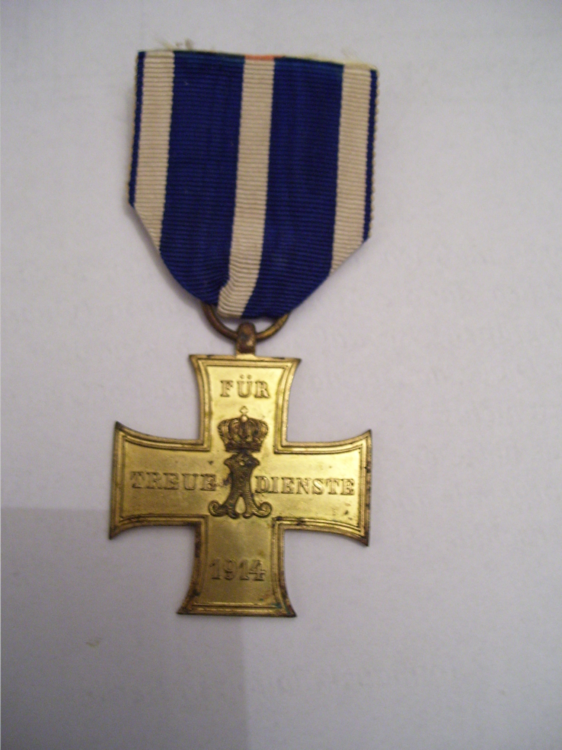
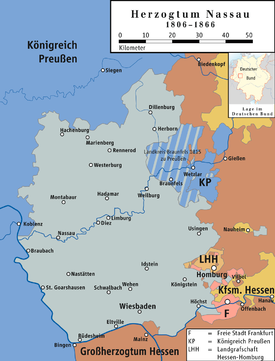
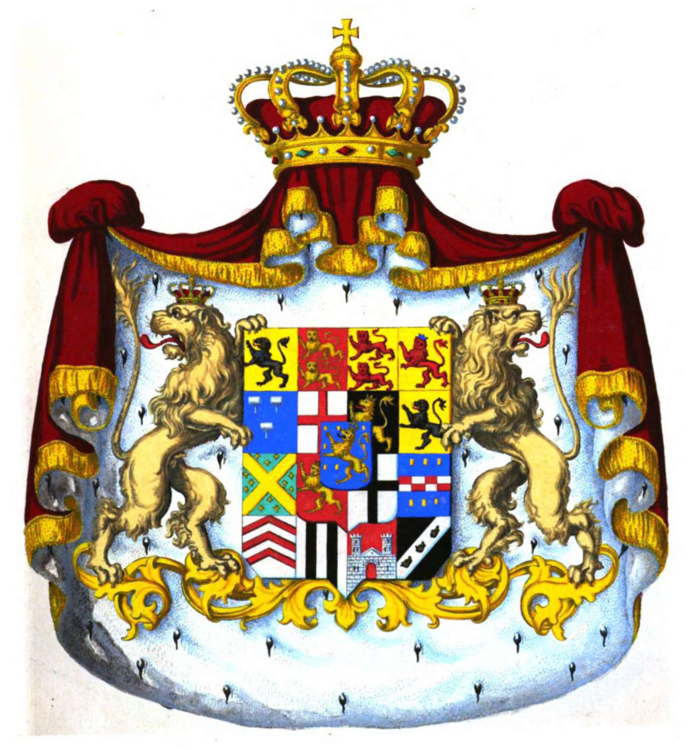
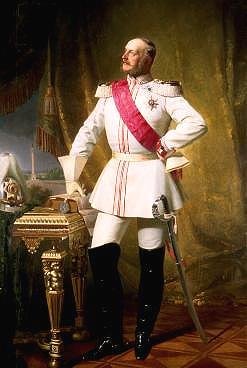
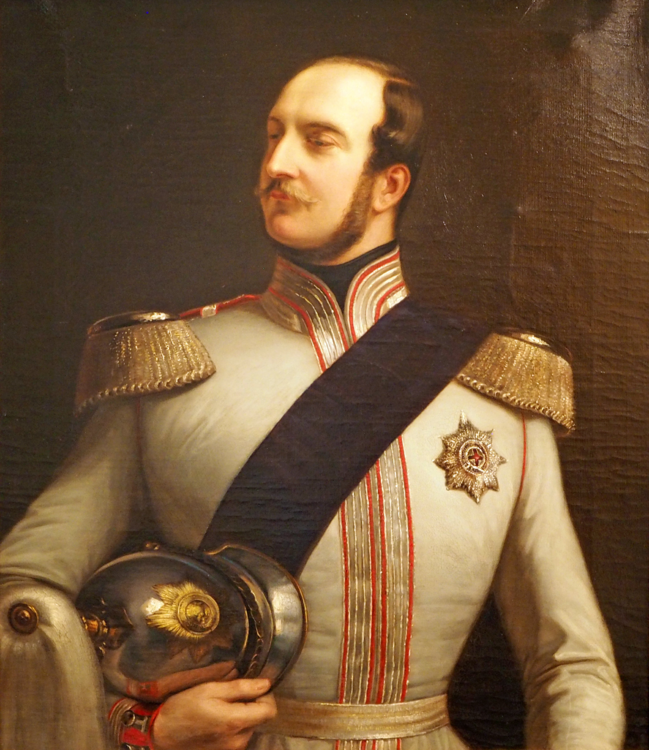
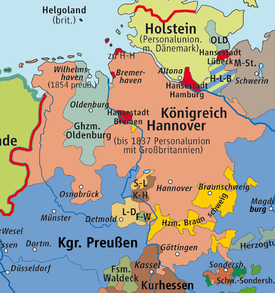
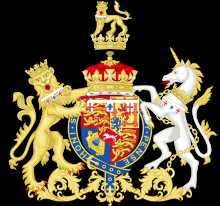
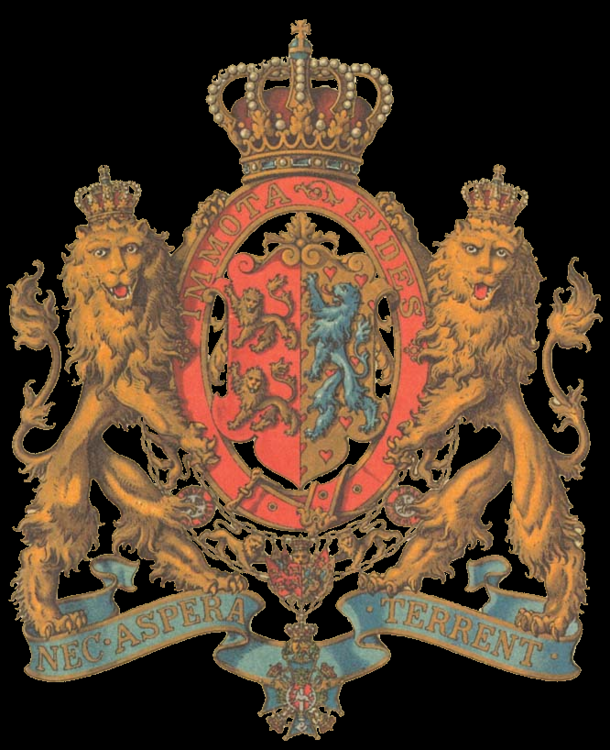
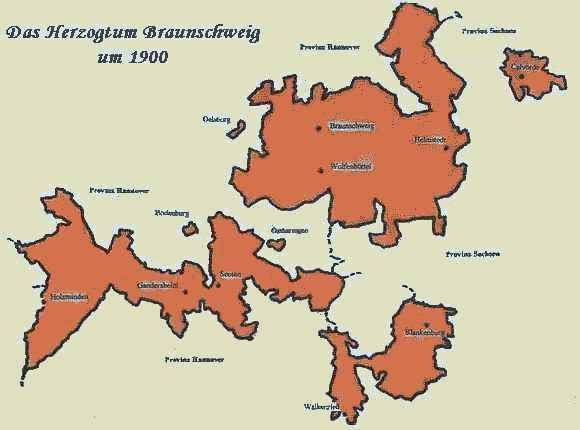
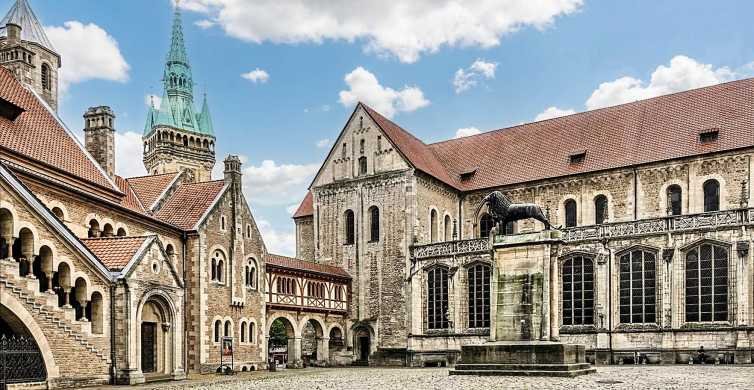
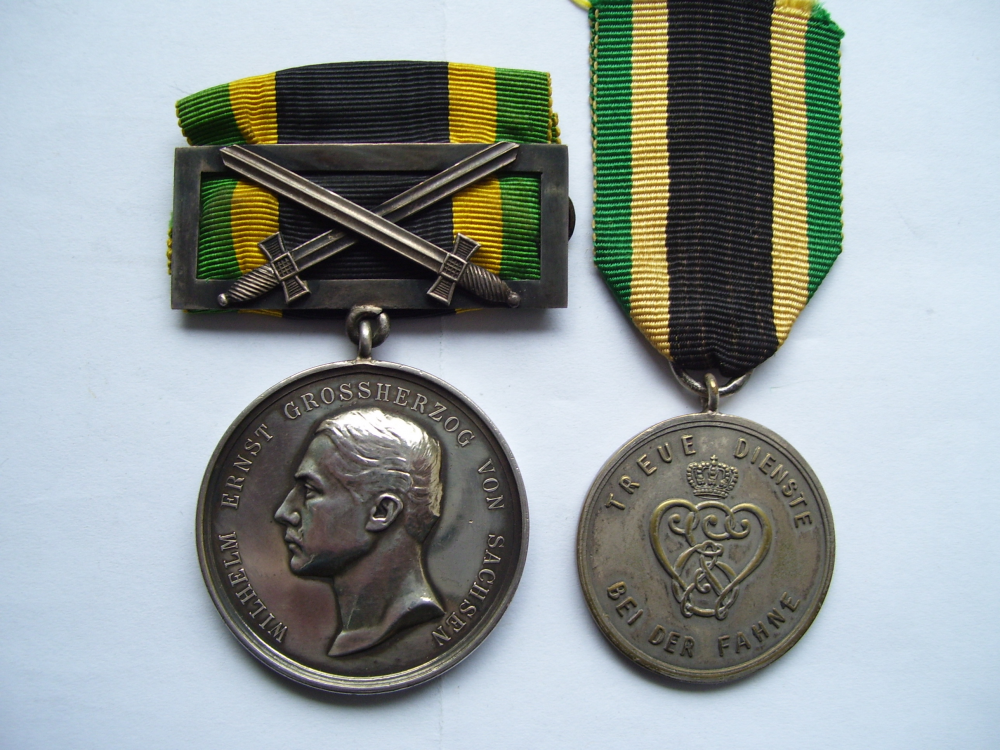
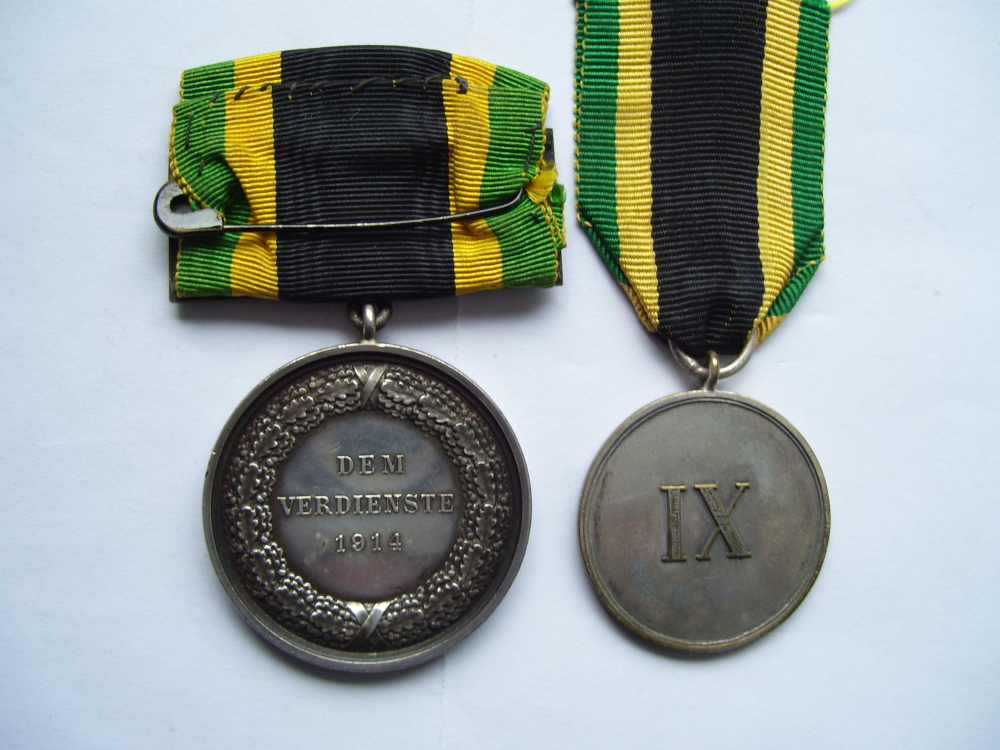
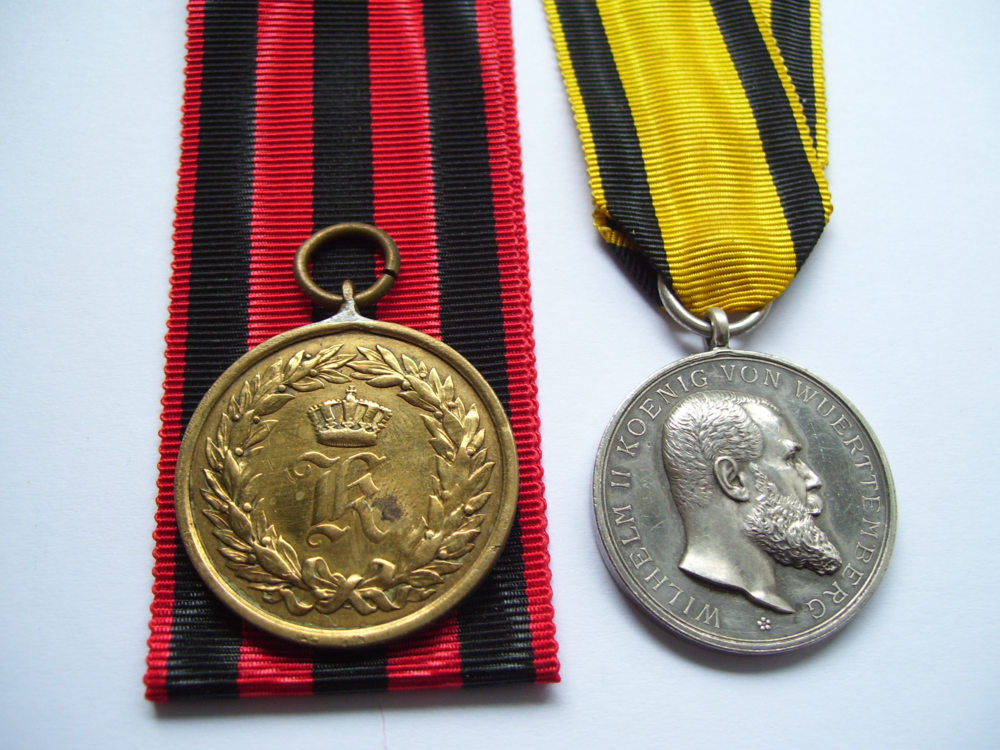
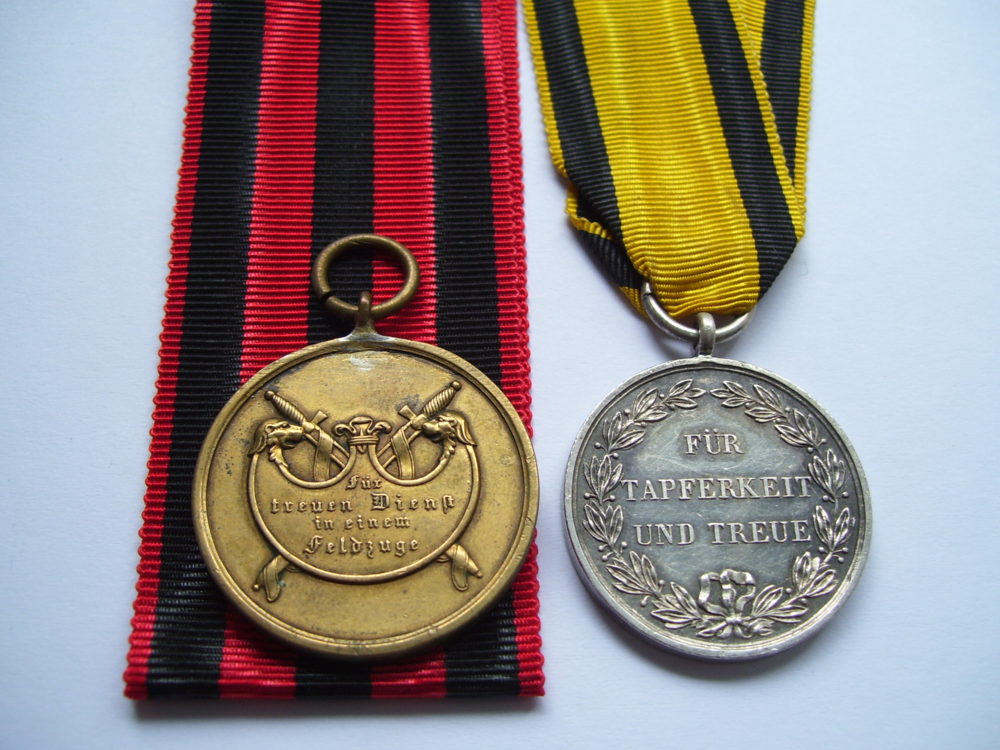
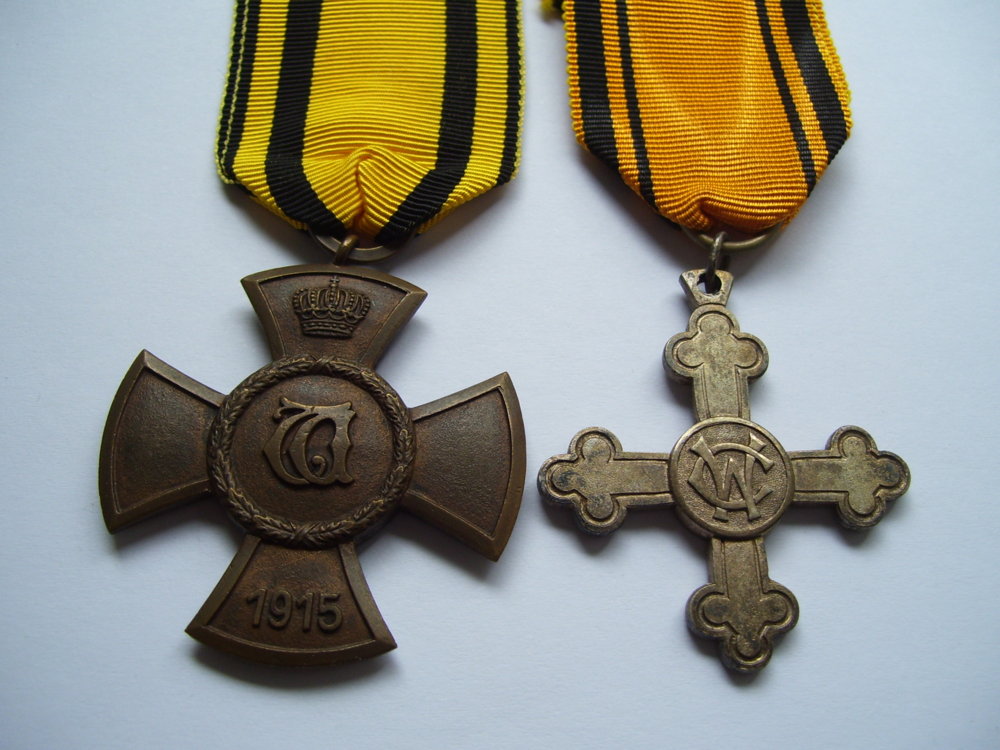
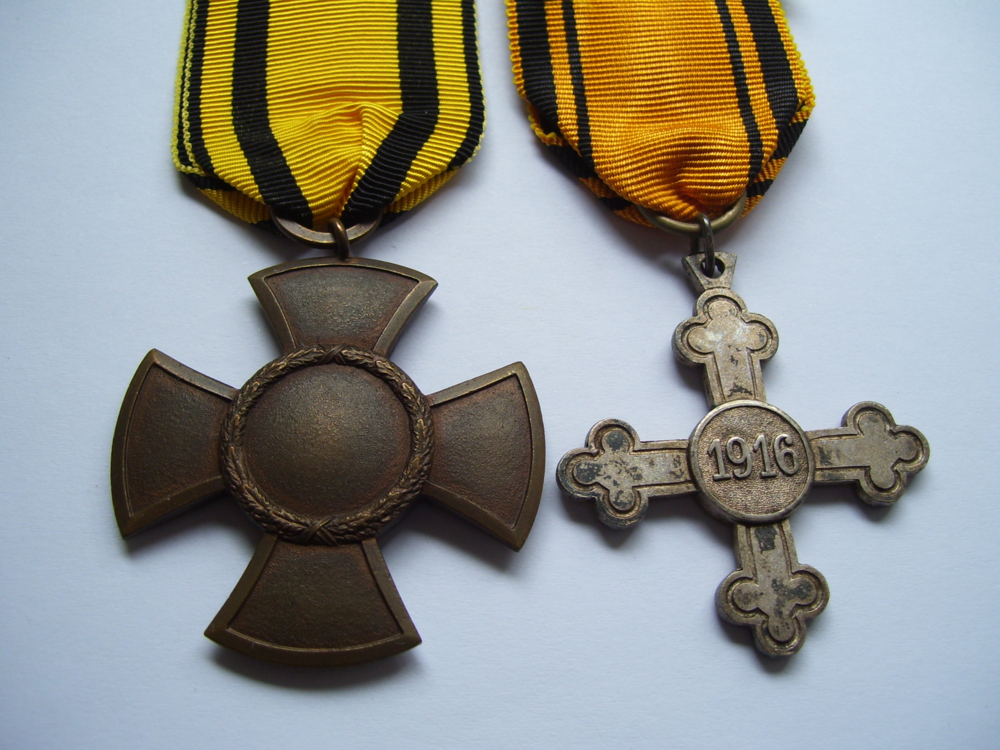
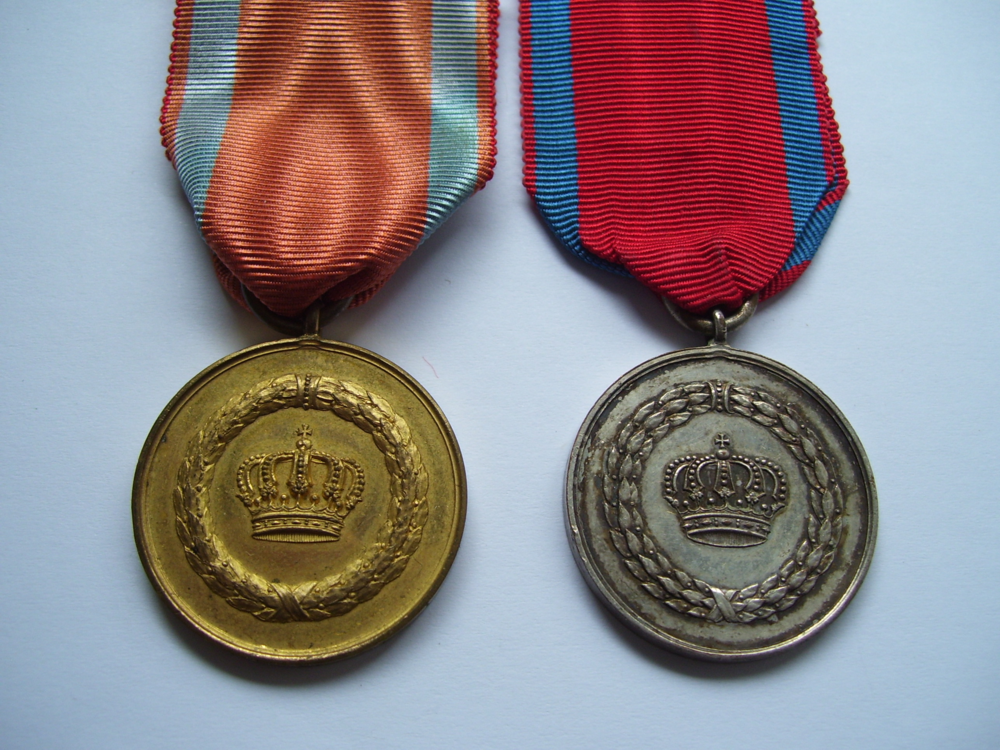
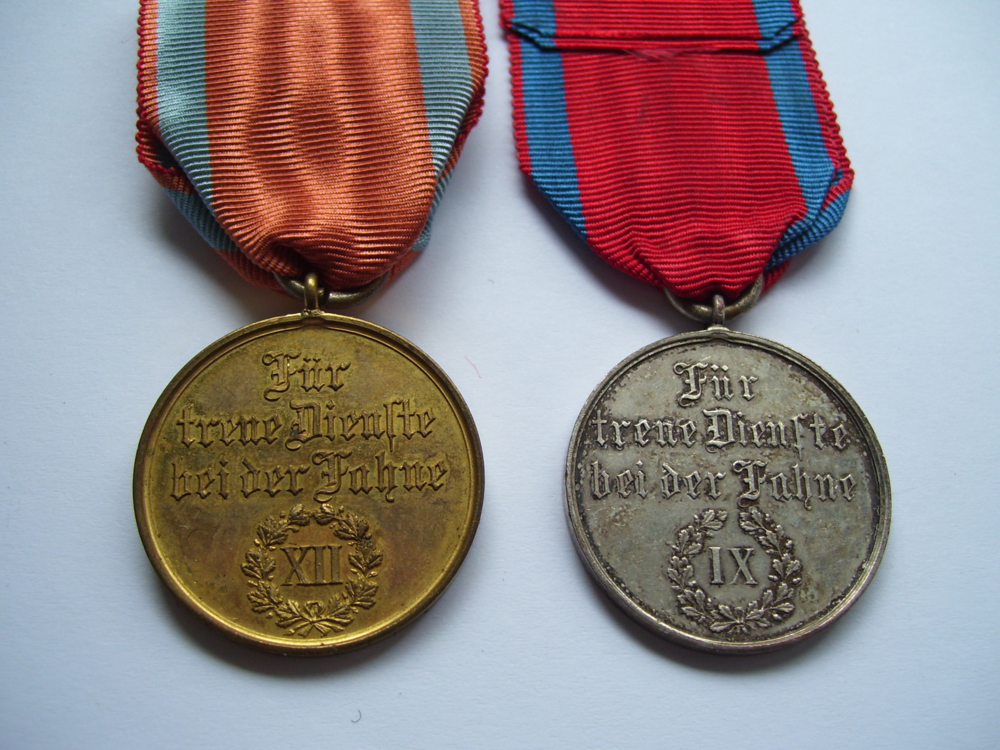
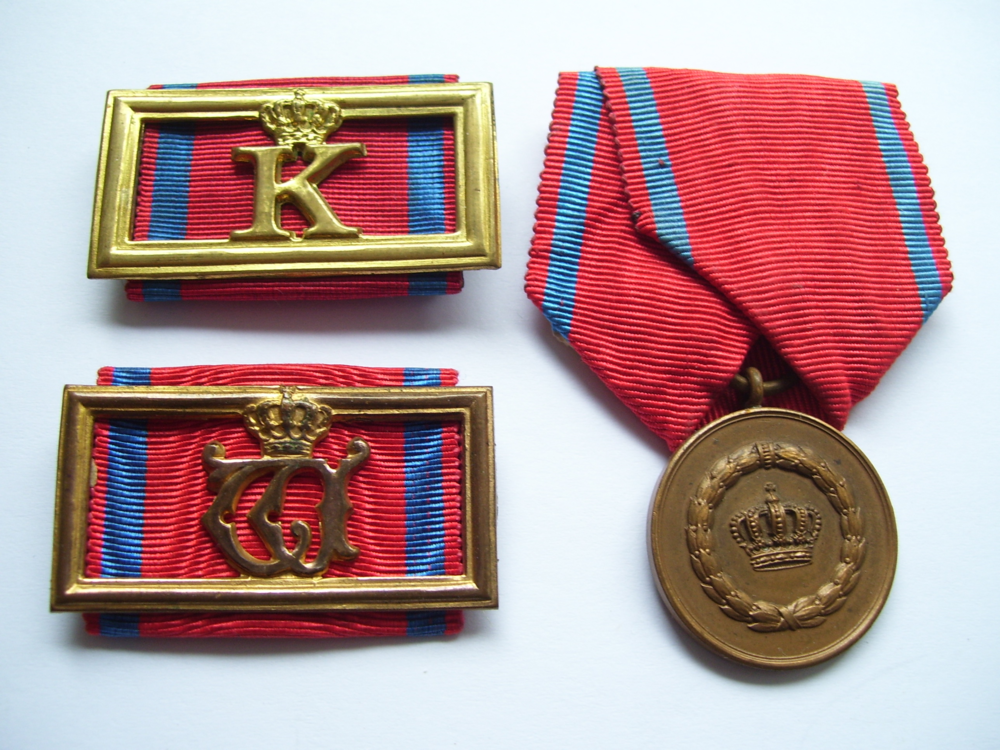

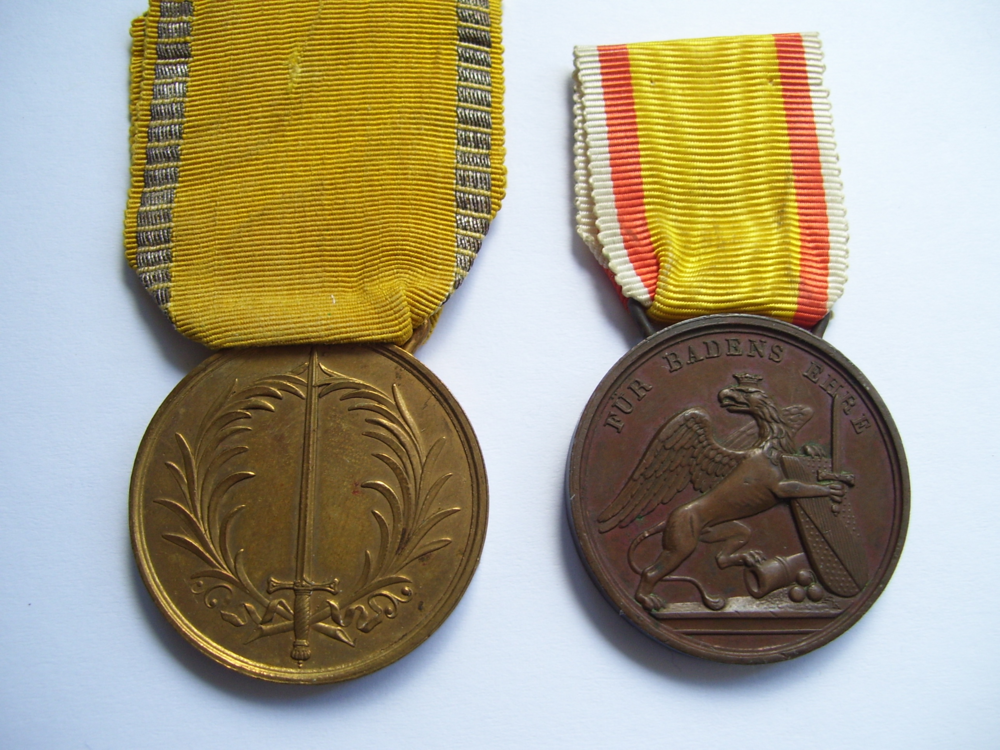
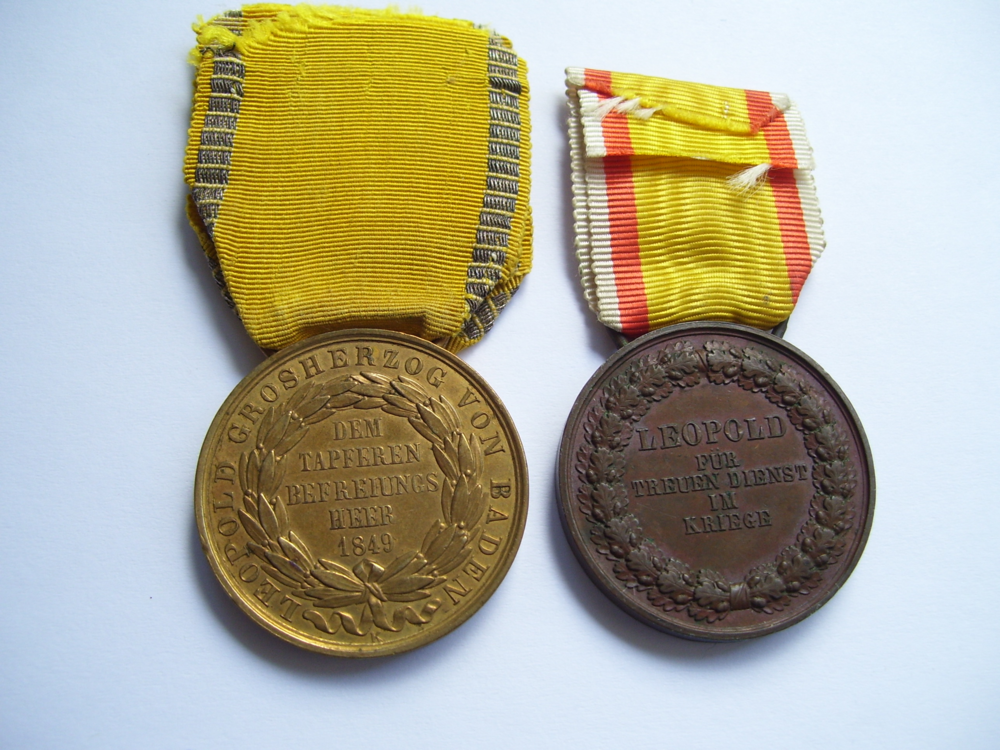
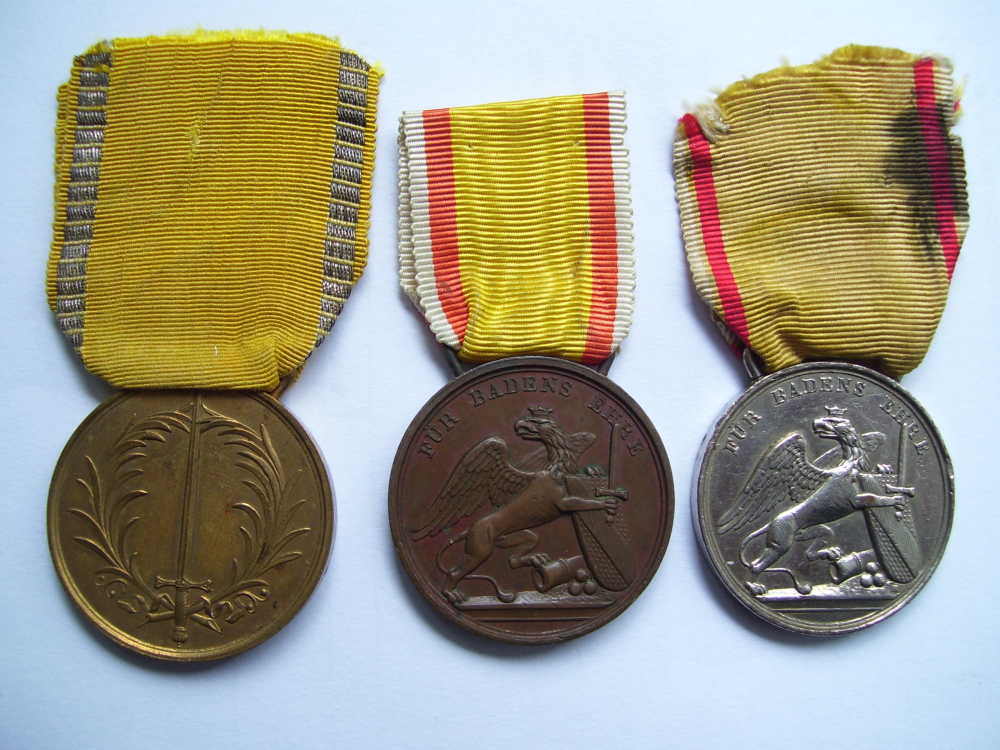
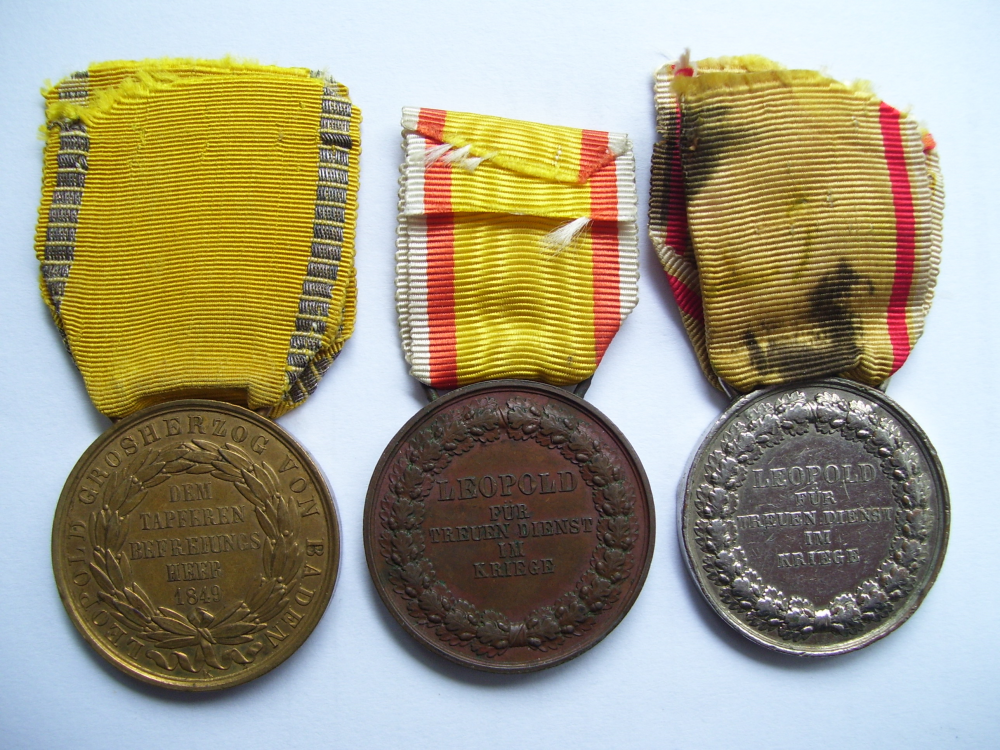
.thumb.png.d738413612facd204d6ef373f845568b.png)
